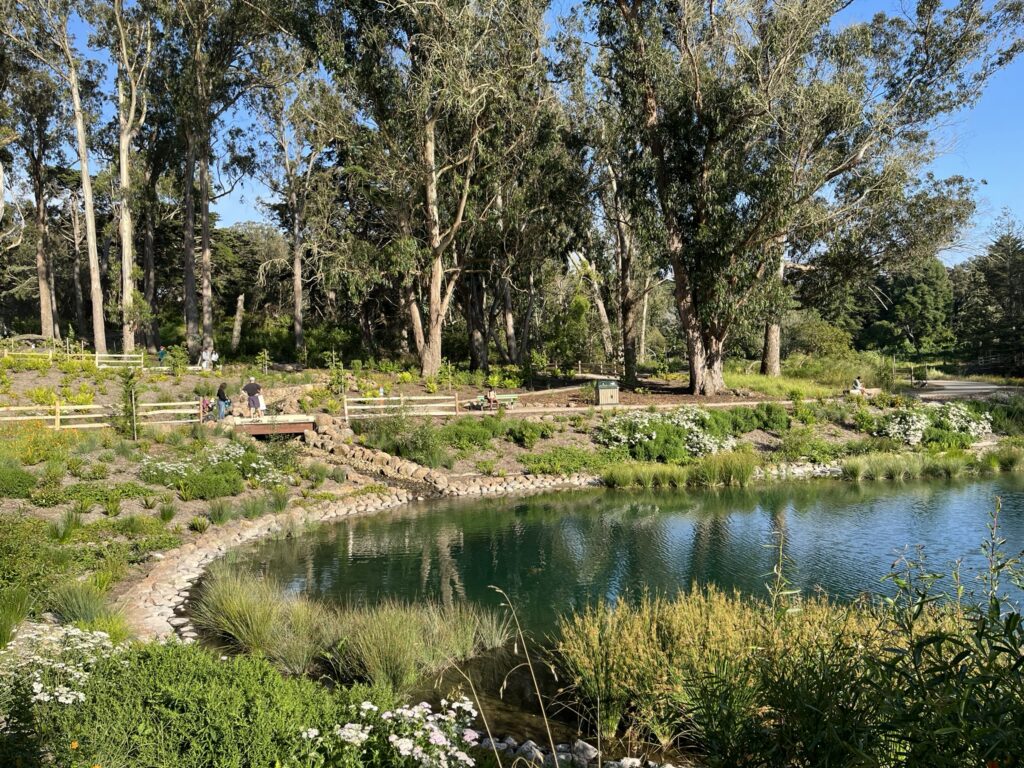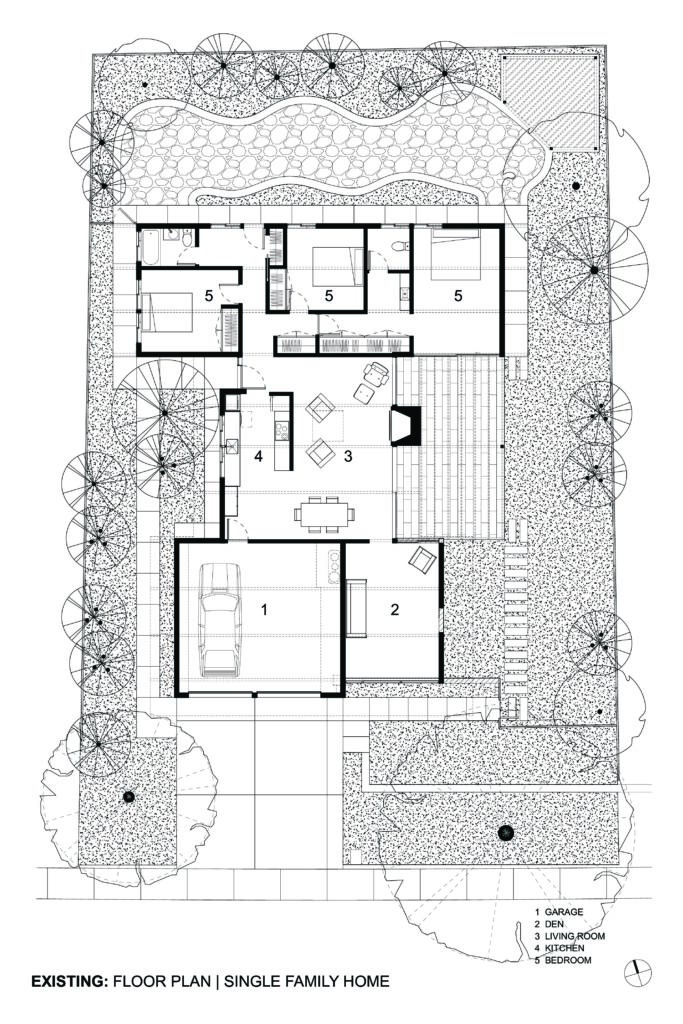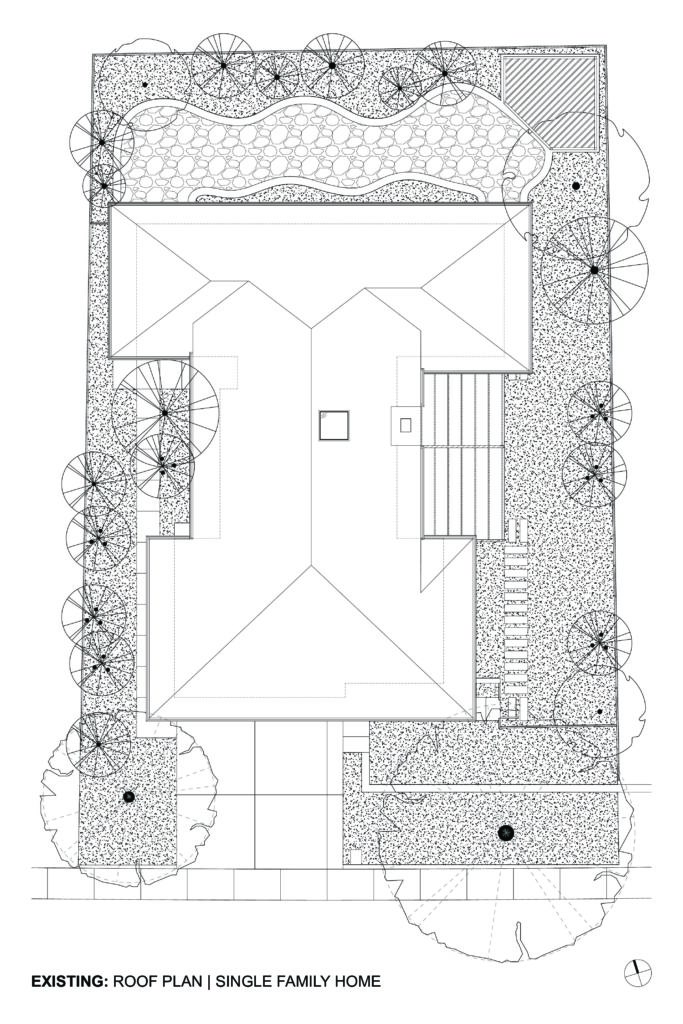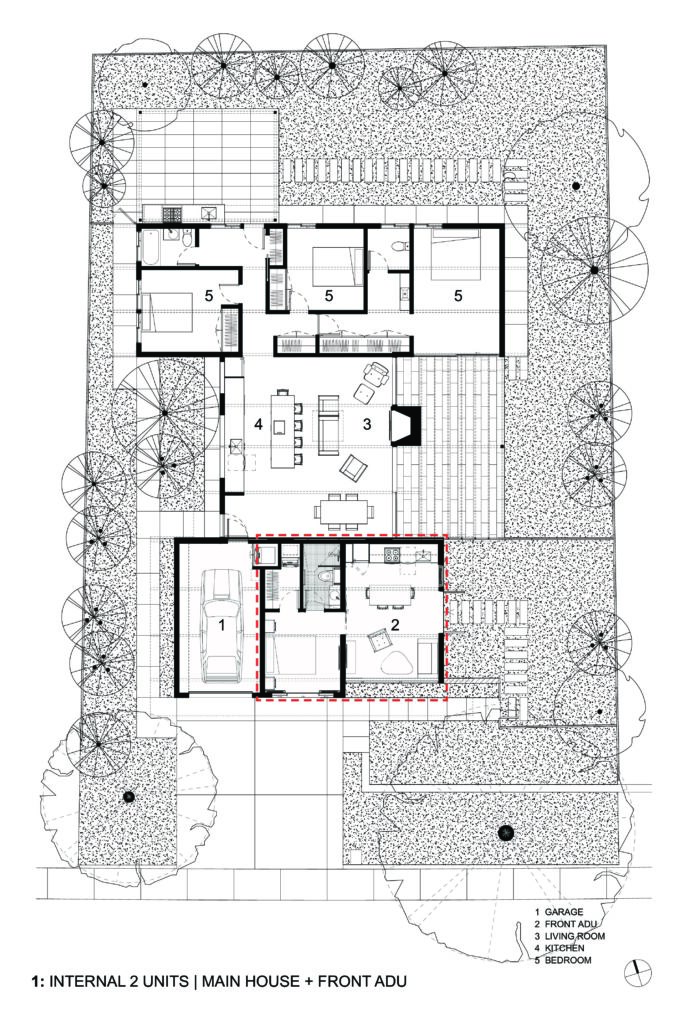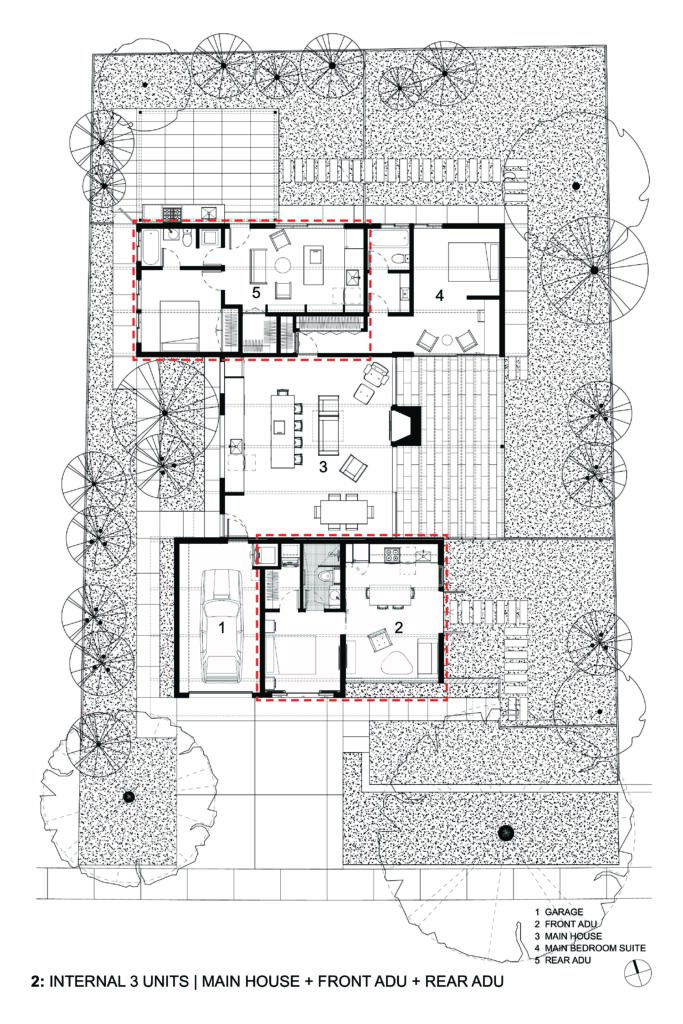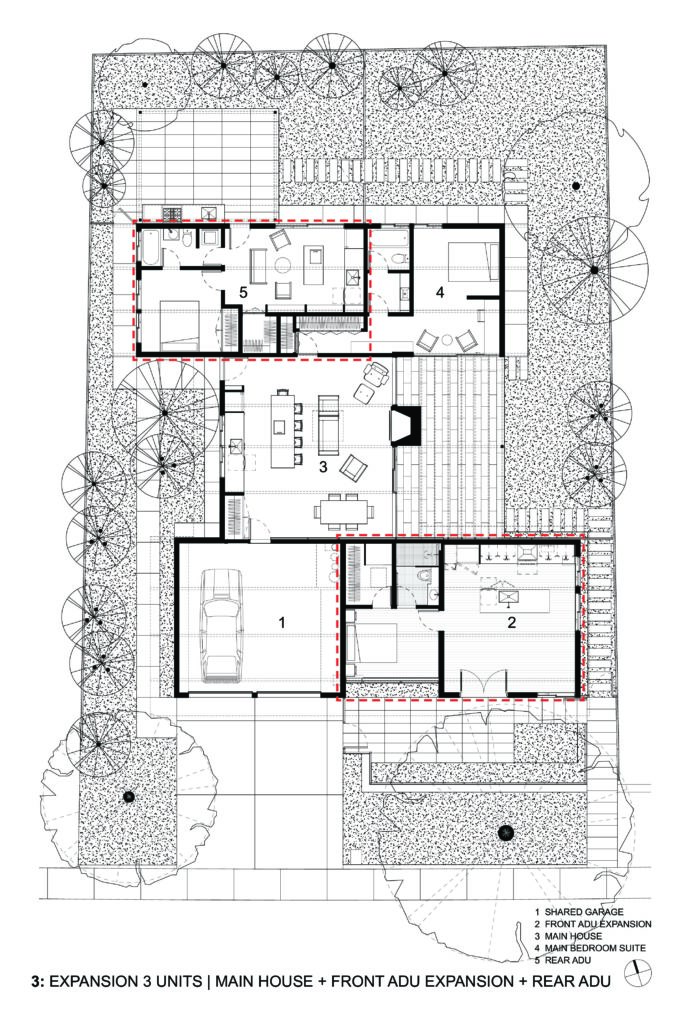Project Tag: Landscape
Middle Lake Rehabilitation, Golden Gate Park
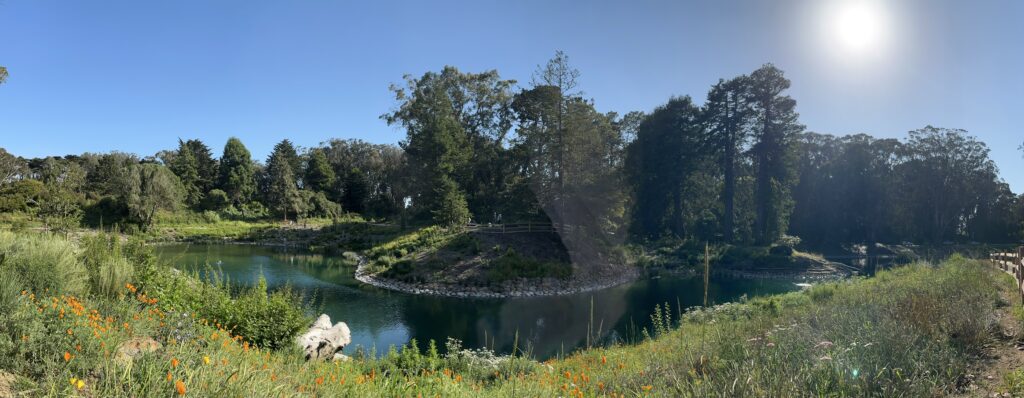
In 2022, INTERSTICE was engaged in an ambitious project to restore Middle Lake in Golden Gate Park, transforming it from a dried-up basin into a vibrant habitat teeming with life. Middle Lake, the missing link in the “Chain of Lakes” series of three interconnected lakes in the west end of San Francisco’s Golden Gate Park, has faced significant ecological decline over the past 150 years since the park was conceived, due to leaks in its clay liner, reduced water depth, algae buildup, and the encroachment of invasive species. Mere improvements were insufficient to save the lake; it required a comprehensive restoration.
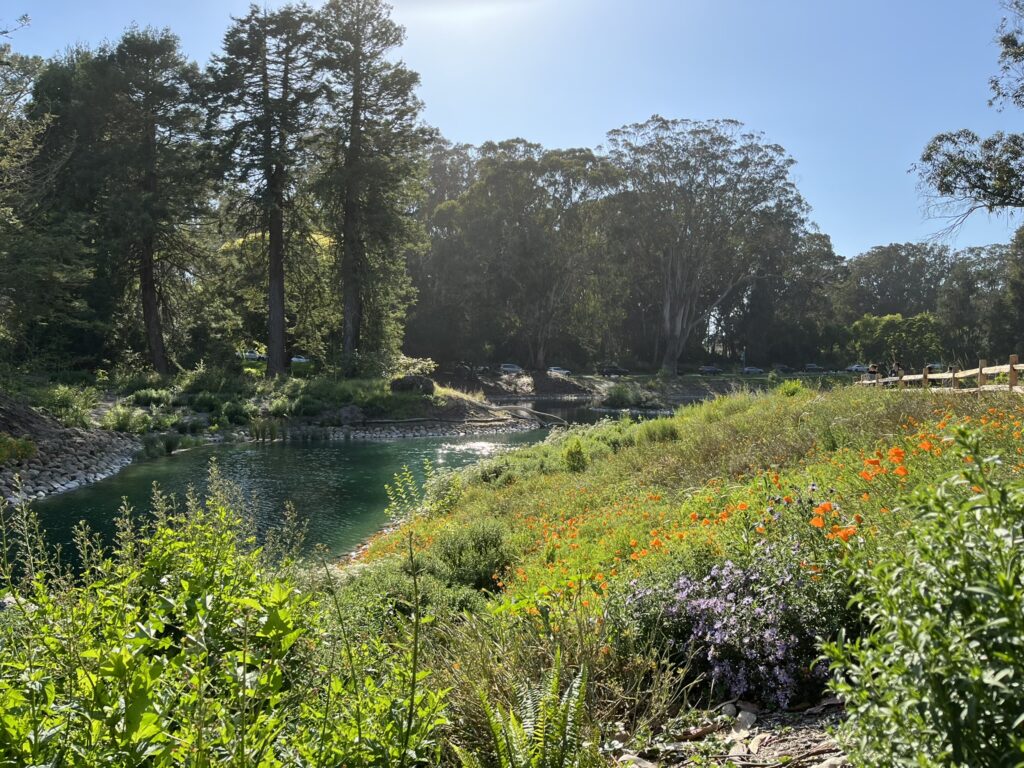
Teamwork Creates A Healthy Community and Habitat
With INTERSTICE in the role of landscape architect on the Construction Team working with San Francisco Recreation and Parks, San Francisco Department of Public Works, Woodard & Curran Civil Engineers, AGS Engineering, Bauman Construction and Catmex Landscaping, over the past nearly two years – Middle Lake has been transformed into a stunning 85,000-square-foot body of sparkling luminous water surrounded by over 10,000 plants including native shrubs, grasses, aquatic plants, wildflowers, native oaks, confers, and dogwood trees. The community input and design effort led by SF Recreation and Parks and developed by Woodard & Curran with the Office of Cheryl Barton engaged numerous stakeholder inputs, including the adjacent residential community, park operations, and multiple city departments related to the environment and its stewardship. The lake is now a lively ecosystem buzzing with insects, bees, and birds and is already home to a goose family that moved in during late construction, gracing the area with six goslings this spring. Raptors tour the skies over the new lake, alongside perching songbirds and numerous shorebirds.
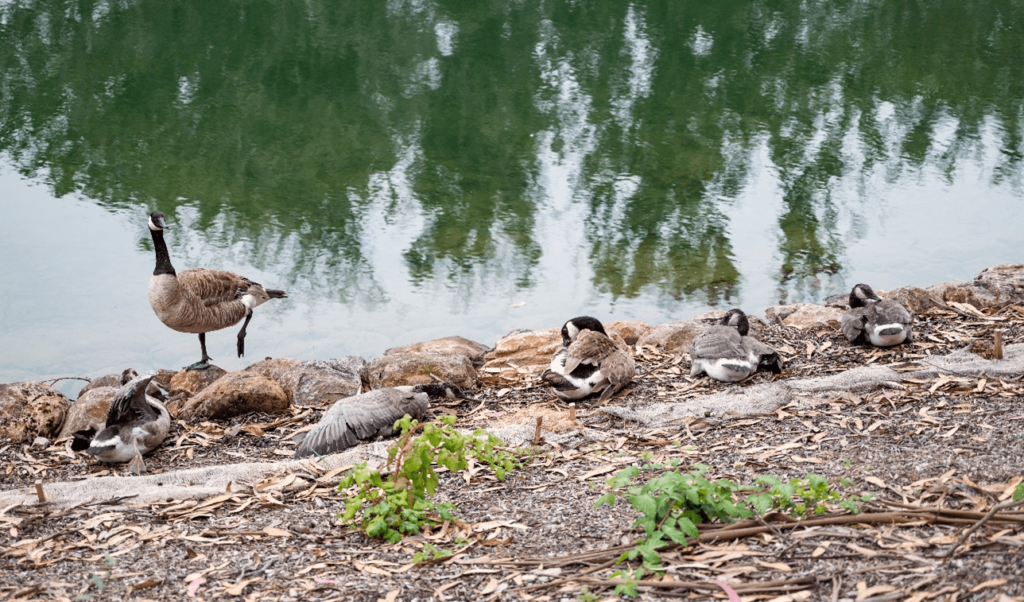 Photo by Oscar Roussel
Photo by Oscar Roussel
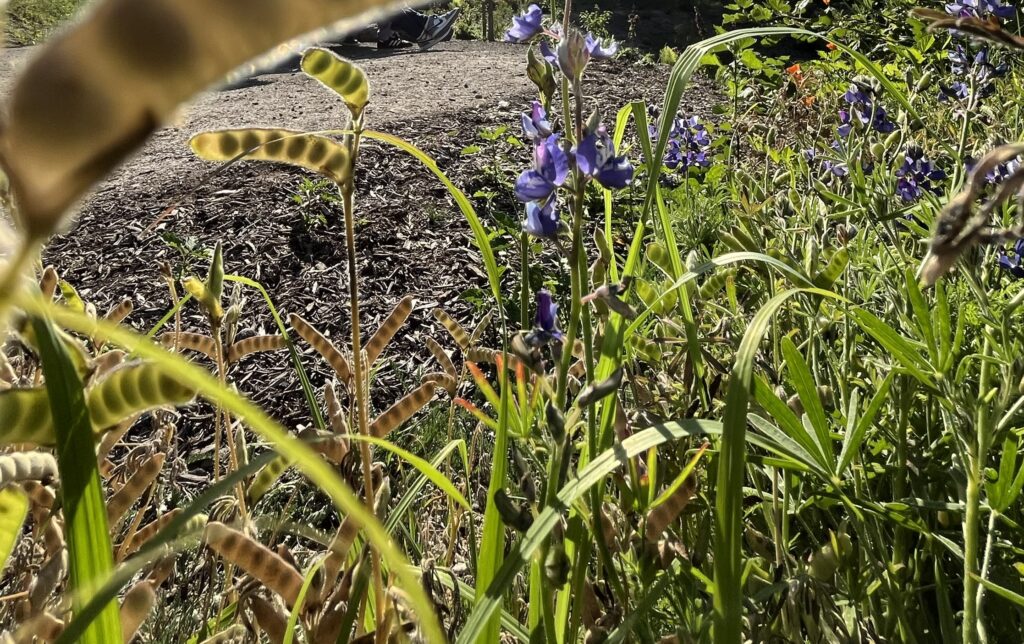
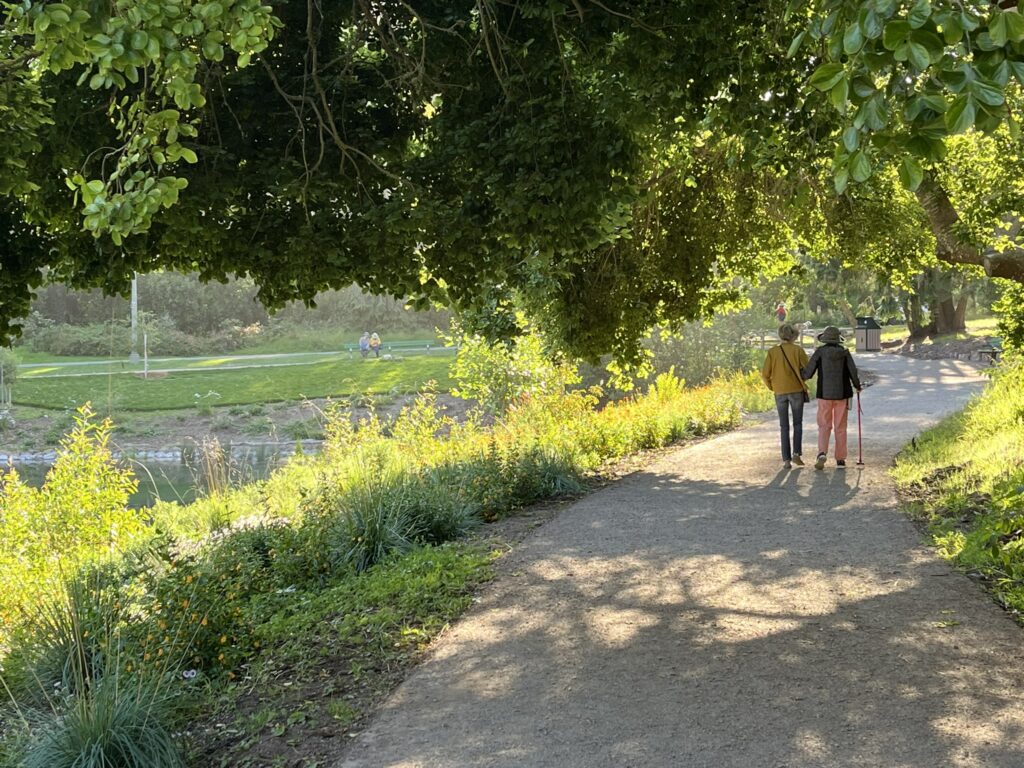
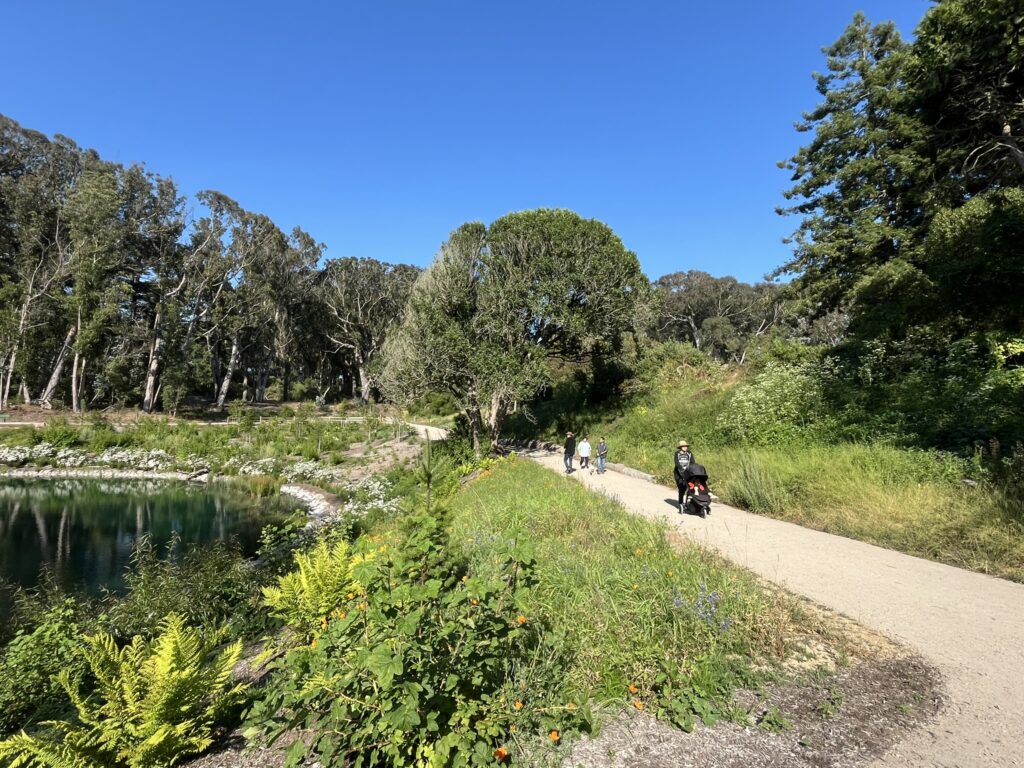
Even prior to its official reopening, the lake had drawn many eager park users, who sneaked through small openings in the fencing to take a look and enjoy walks on its trail that wraps around its half-mile edge. Construction was delayed to accommodate a hawk family that had nested during the construction start-up. Now there is a thriving raptor community soaring above this new and growing riparian ecosystem.
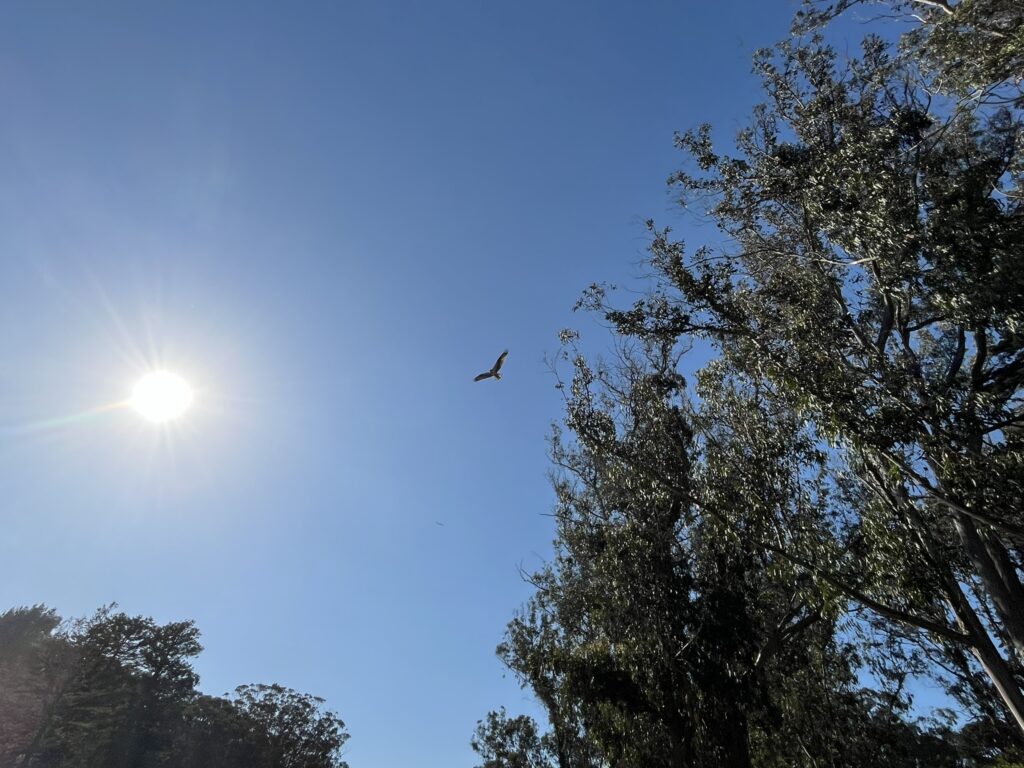
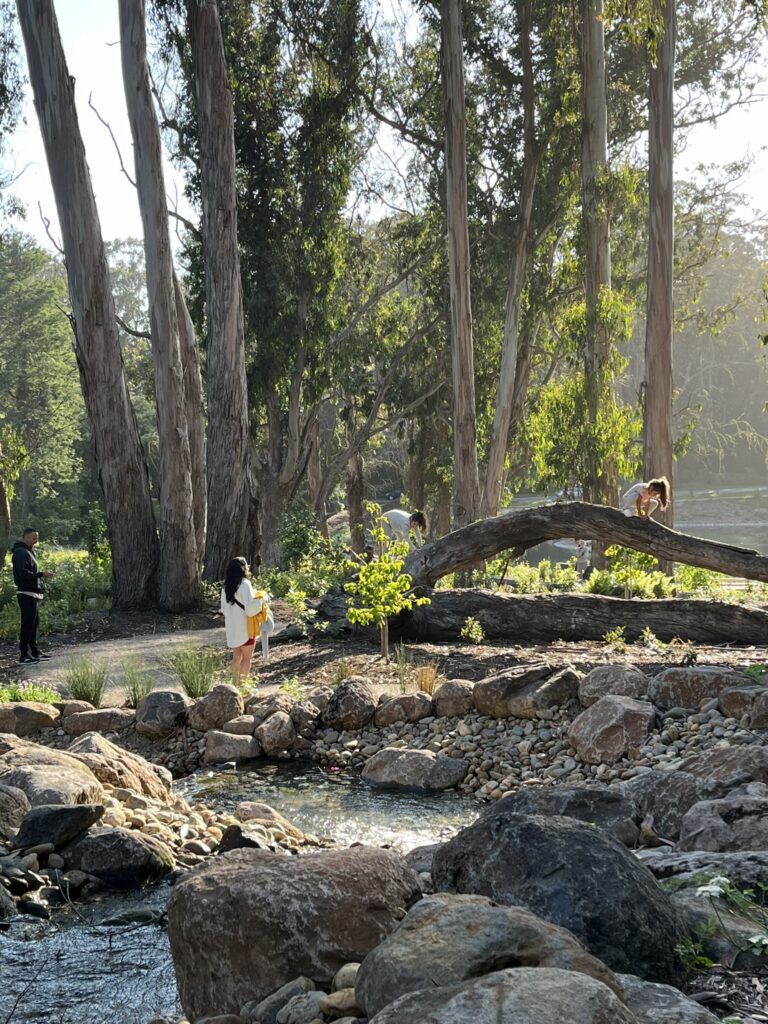
A System Designed to Create a Healthy Aquatic Ecosystem
The restoration process involved an initial assessment of the lake, followed by the removal of 25,000 cubic yards of silt to create and contour a seven-foot-deep basin with two historic islands, and the installation of a new nearly 2-foot-deep clay liner meant to maintain the water level long term. To ensure a healthy water level and good water quality, the design added a cascading stone streambed (the Cascade) that flows adjacent to an intentionally meandering and accessible path, crossed by footbridges, that provides water to the lake below from the park’s Fly-Casting Pools situated to the east of the Lake. Aerators at the lake’s bottom recirculate water and oxygenate the lake’s hydronic column. Overflow from South Lake flows into Middle Lake’s newly designed, stone-lined inlet and circulates out again at the new outlet spillway, into North Lake, connecting the Chain of Lakes with a constant flow of fresh water.
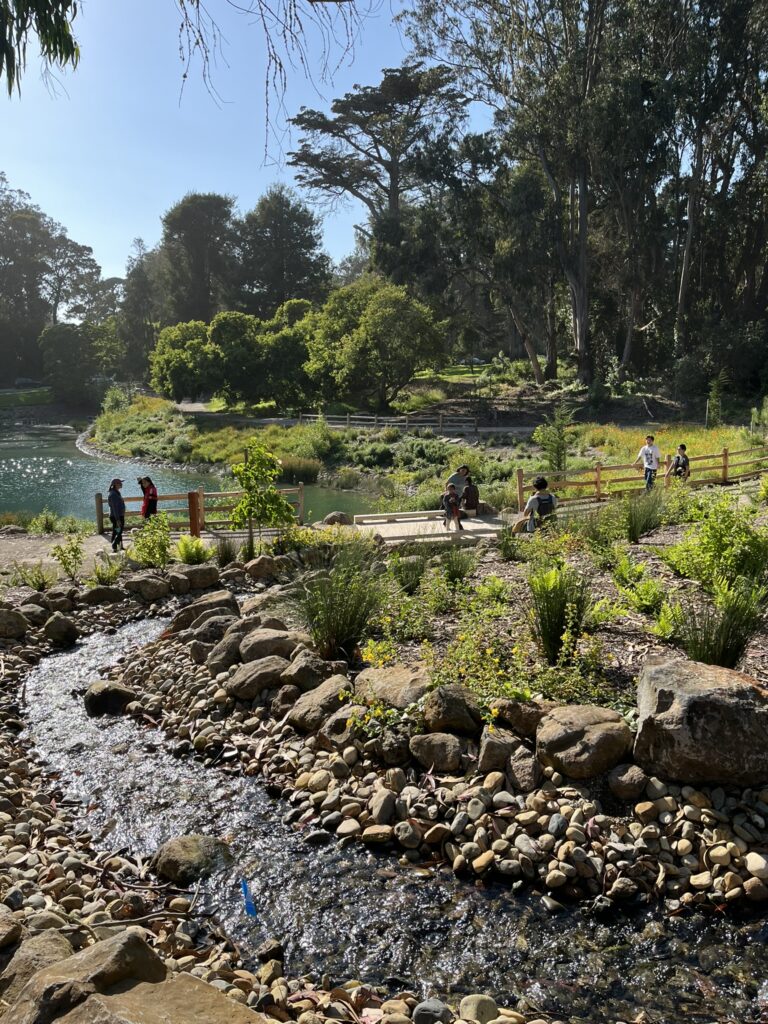
The Cascade stream, along with the south-to-north cross flow, not only significantly reduces algae growth by keeping the water’s surface in motion, creating a healthier aquatic environment, but it also creates the delightful experience for park visitors of the sound of a burbling creek, flowing over natural stone water weirs and check-dams, swirling between deeper pools on its sinuous journey down the eucalyptus-forested slope – a visually and aurally exhilarating and memorable experience.
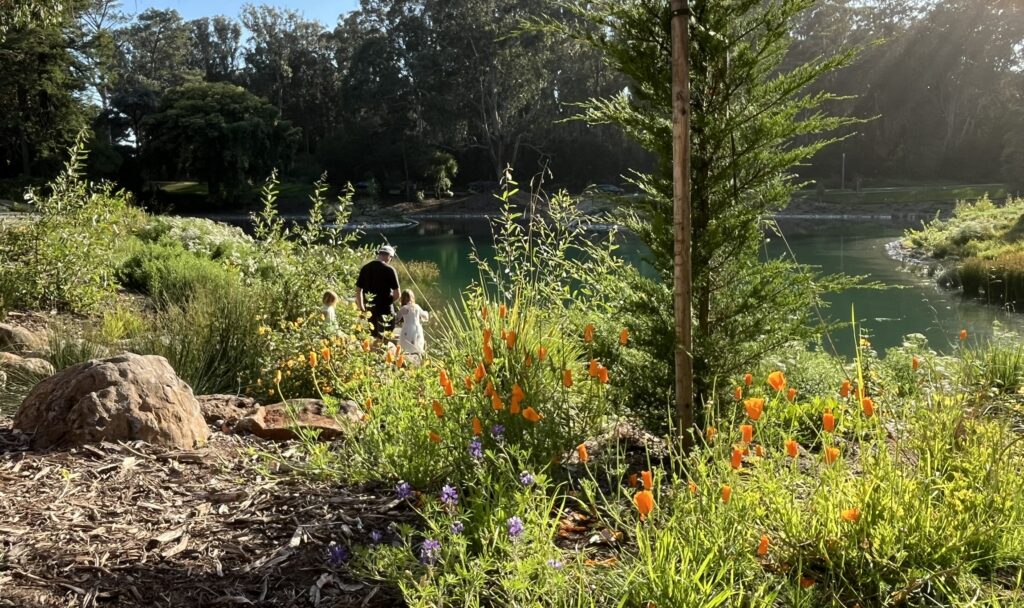
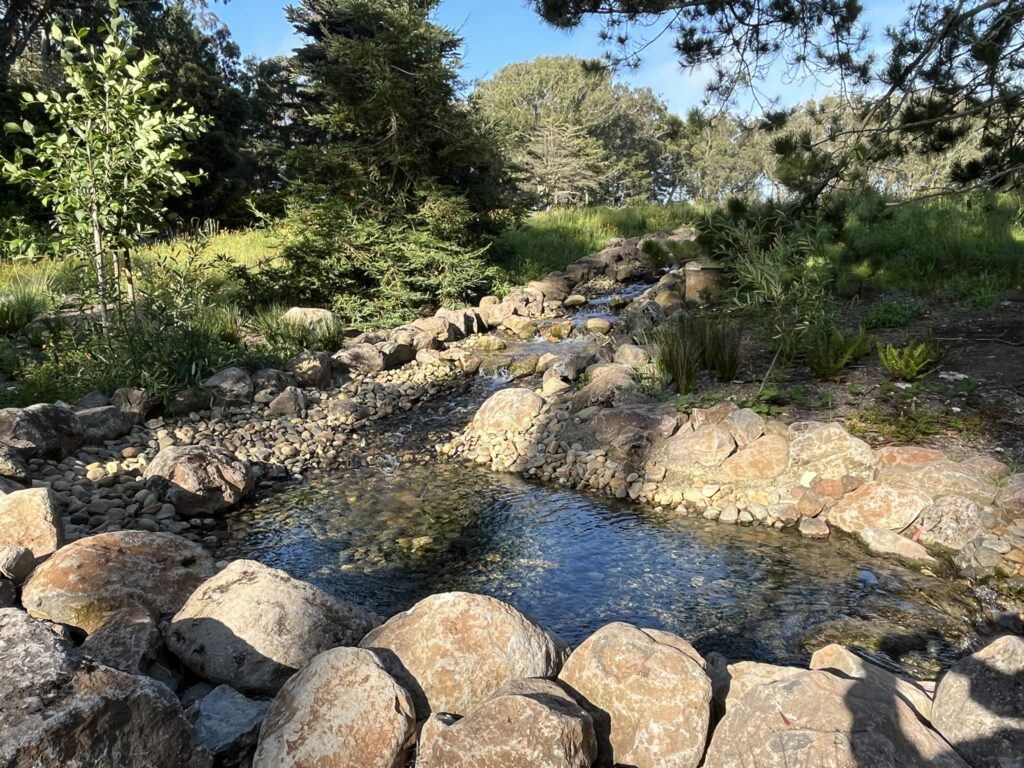
Native Plants Increasing the Biodiversity of Both Flora and Fauna
The planting of native upland species such as California sage, beach strawberry, Coyote Brush, wild rose, California poppy, and lupine attract butterflies and hummingbirds, help stabilize the soil, and provide protected habitats for many of the park’s wildlife. Other important plants that are creating and conserving habitat include newly planted coast live oak trees, coast redwoods, Monterey cypress, alders, and woodland flowering dogwoods, whose canopies will expand to further frame views and provide shade and intimacy along the lakeside paths that circumnavigate the new water body. Numerous native grasses, perennials, ferns, and shrubs fill in the extensive palette of understory flora carefully selected to enhance the biological interdependence of the park’s thriving ecology. The lake’s restoration is expected to attract about 350 different animal species to its shores, including ducks, frogs, salamanders, turtles, dragonflies, and a multitude of bird species.
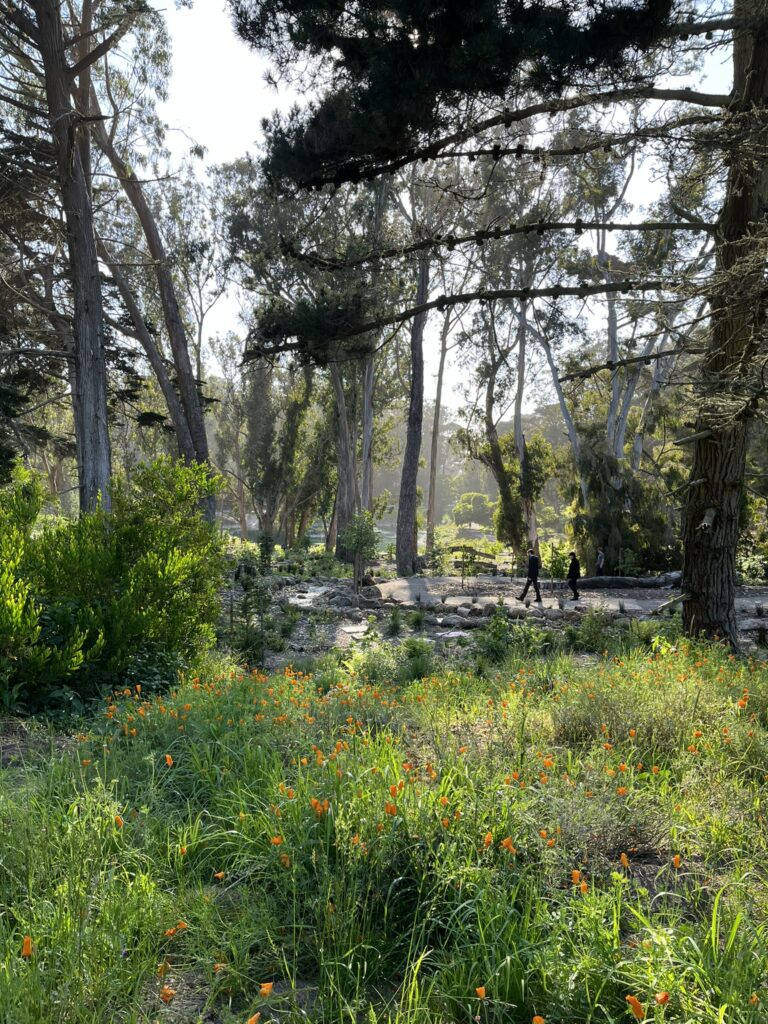
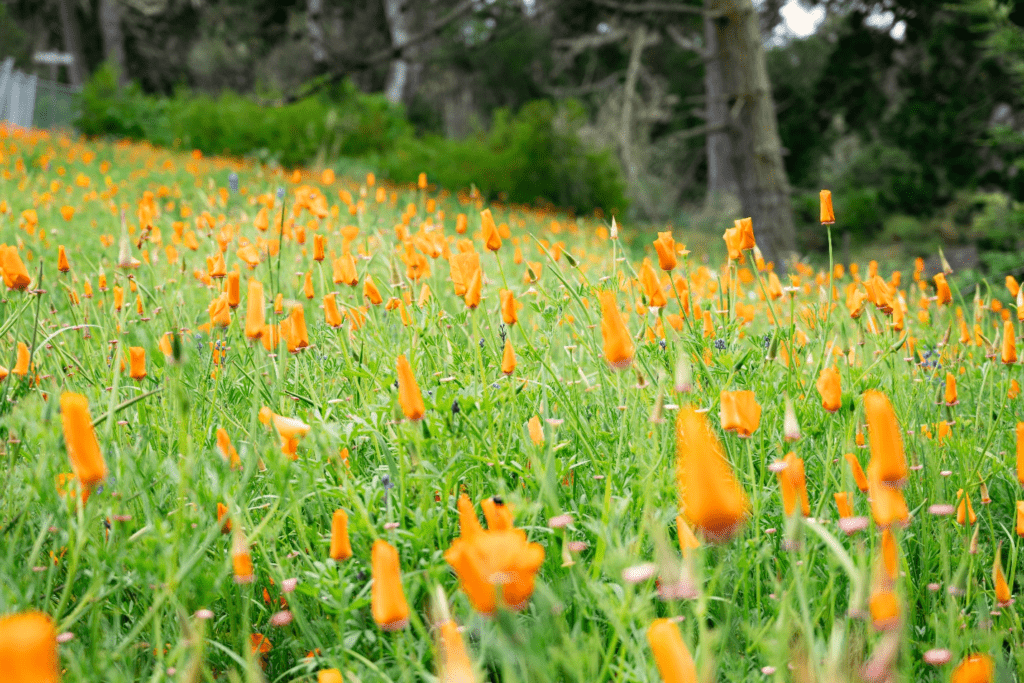 Photo by Oscar Roussel
Photo by Oscar Roussel
Aquatic Specific Design
The design of the lake-reinforced shore and small island prioritizes a sequence of shallow “literal zones” where sunlight and oxygen are easily accessible to aqueous plants and small creatures that find shelter from predation in these teaming shallows at seven locations along the lake’s edge where additionally large fallen tree trunks are strategically positioned to enhance this productive protected edge. Here the base of the food chain is born and develops, allowing the lake ecology to flourish. The largest aquatic shelves are situated at the lake’s outlet and inlet where these 4 to16 inch-deep shallows are built up to create the lake’s natural filters and most generative biological zones.
Another ecological and environmental benefit of the lake, besides enhancing biodiversity, improving water quality, and increasing habitat, is that it acts as a significant source of carbon sequestration. The lake bed captures and stores carbon from organic matter that settles there. The newly planted vegetation also aids in capturing carbon and helps mitigate the impacts of global warming. Moreover, the lake helps regulate local temperatures, supports groundwater recharge, and contributes to the overall health of Golden Gate Park’s natural environment.
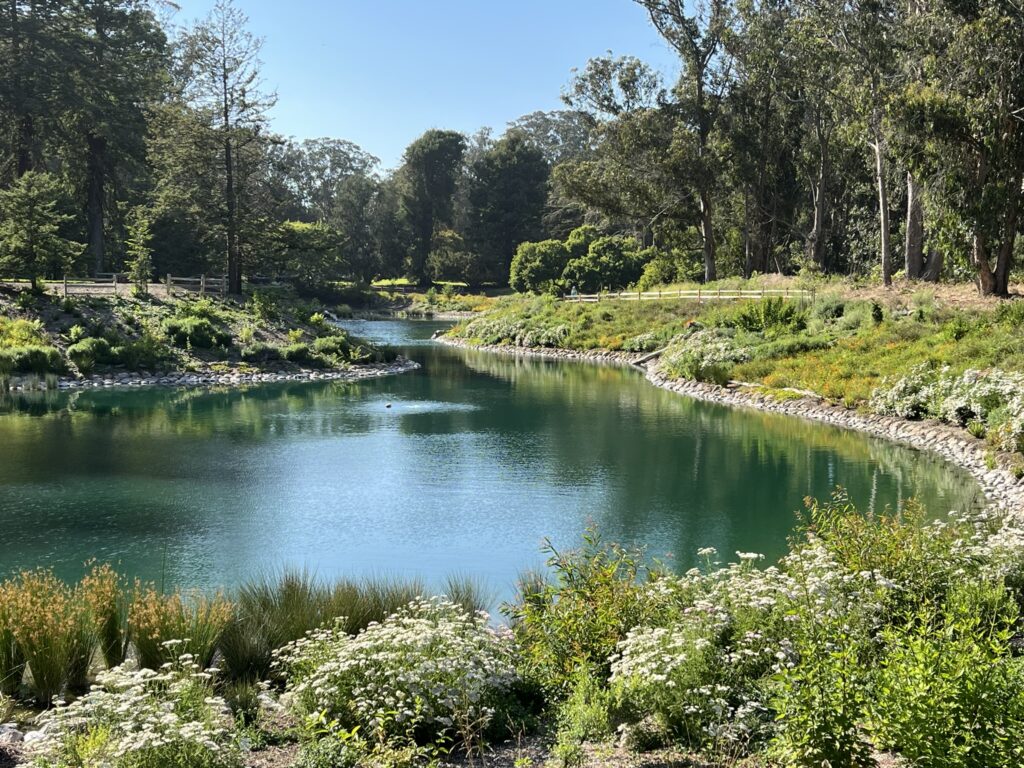
A Place for Plants, Animals and People
As of July 2024, Middle Lake is now open, offering the community a serene place to relax by the water amidst bright, colorful flowers, with ample opportunities for walking, bird-watching, contemplation, and picnicking. The main entrance to the lake is from Chain of Lakes Drive East, which features a small parking lot and connects to the lake’s curvilinear pathway loop. The lake can also be accessed from the fly-casting pools located above the lake by way of a winding path, lined by flowering dogwoods beside the creek, leading down across two wooden footbridges towards the lake edge path loop.
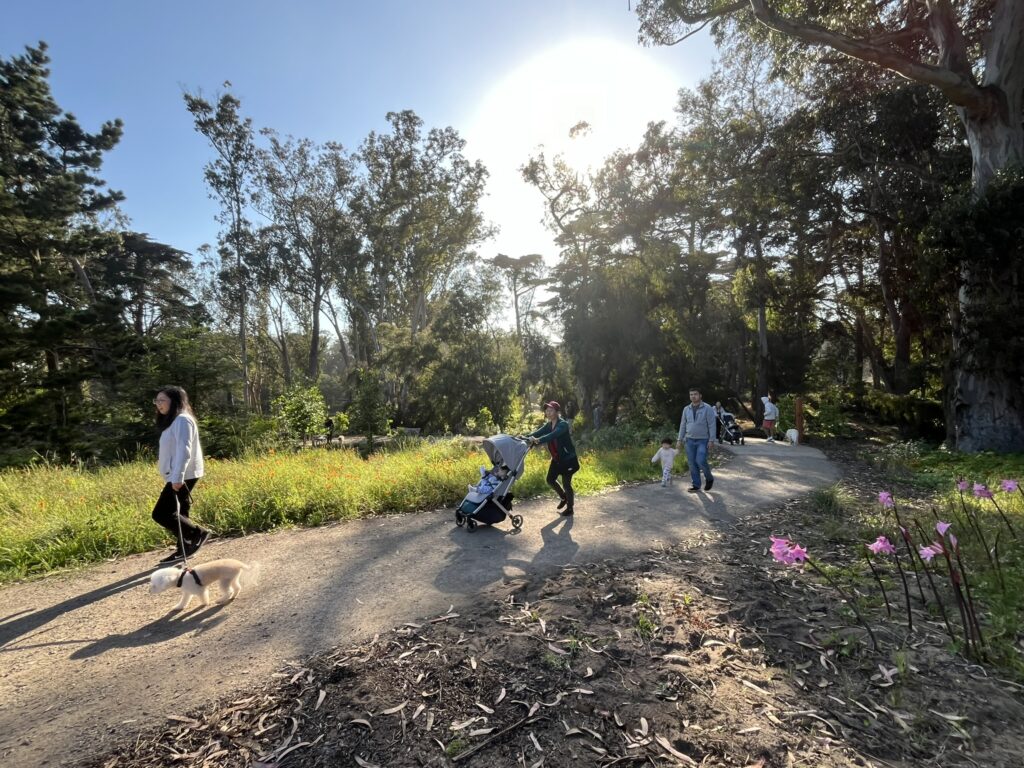
Visitors to Middle Lake will also discover numerous places to enjoy vistas of the lake and contemplate this new environment – the Wedding Lawn on the south that overlooks the lake and is found within a grove of Redwoods, both existing and new and surrounded by benches fabricated from a repurposed and harvested redwood from the site; around the perimeter are park benches to enjoy lake vistas, and large sit-able logs made of harvested eucalyptus trees that were removed due to hazardous conditions and recontouring for the routing of newly proposed pathways; more log seats and sculptural logs along the Cascade path as places to pause, hear and see the adjacent cascade waterway, and spots to allow youth to engage with the natural environment through a series of informal goat paths.
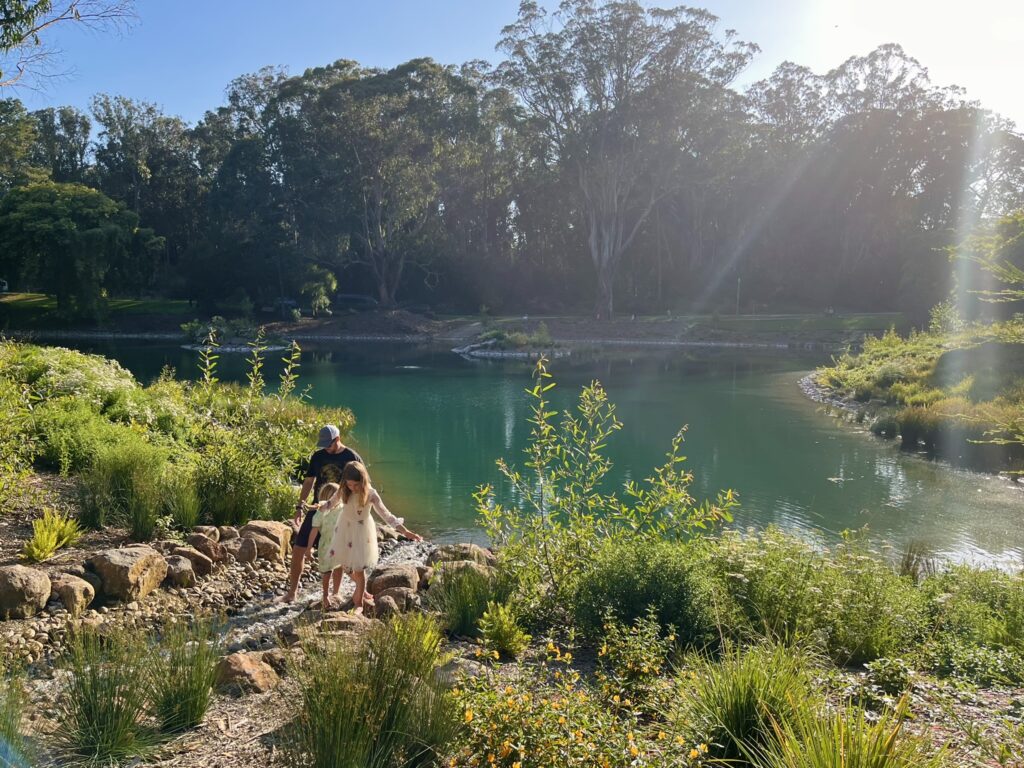
Gratitude for our Team and a Mission Fulfilled
Participating in the conservation of this lake has been an honor and a testament to teamwork. Through restoring Middle Lake’s natural beauty and ecological value, and enhancing its role in our local ecosystem, our team has had the opportunity to contribute to our City community and our region’s health, biodiversity, and resiliency. We are excited to share it with the community and invite everyone to experience its transformation firsthand. This restoration is a testament to the power of thoughtful design and community collaboration. The rejuvenation of this area in Golden Gate Park will have lasting benefits for both the environment and the community – hopefully for at least another 150 years to come. We invite everyone to visit and enjoy!
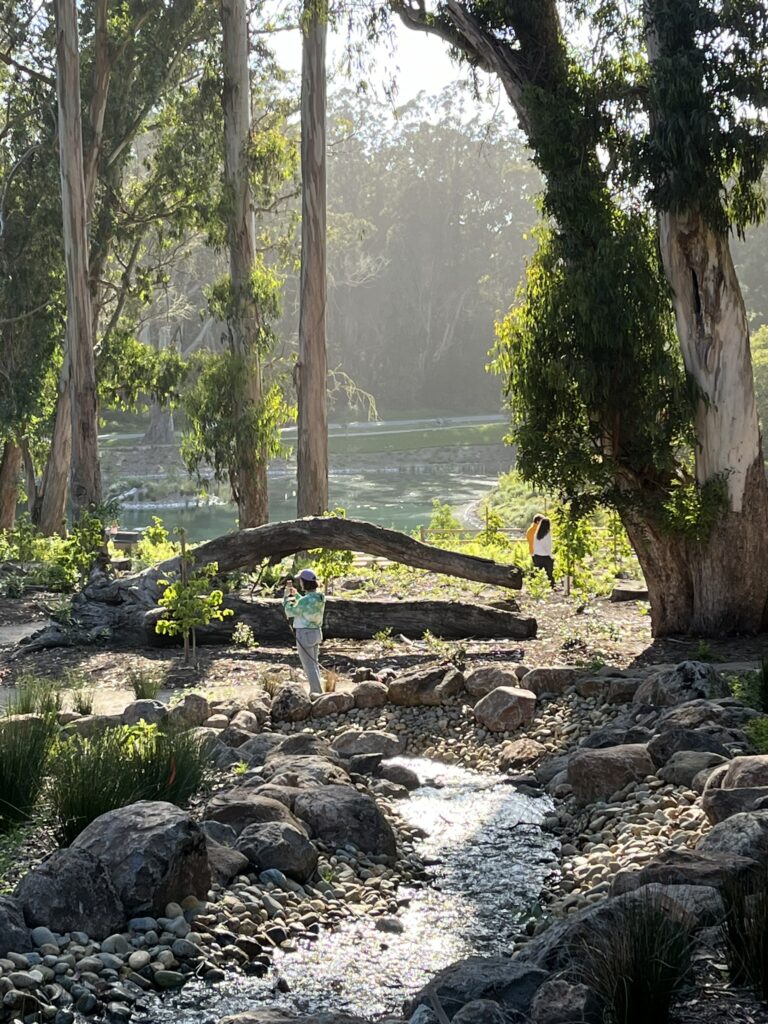
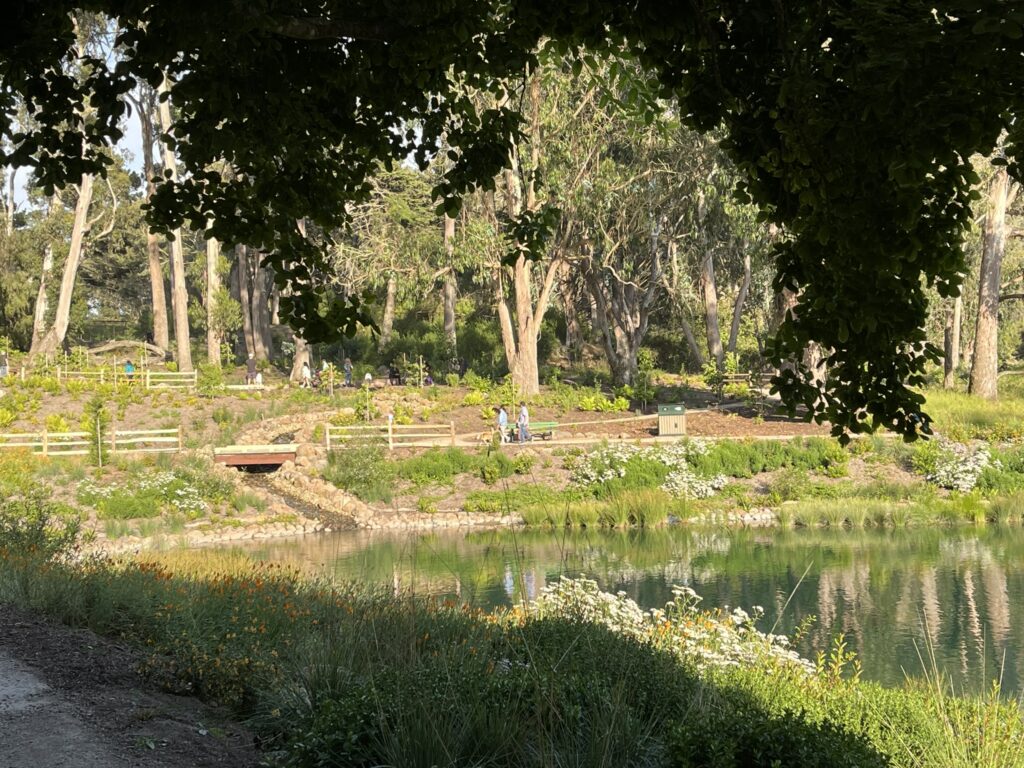
Location: Golden Gate Park, San Francisco.
Owner/Client: SF Recreation and Parks Department / SF Department of Public Works
Scope: Public Park
Status: Construction Complete
555 Larkin / 500 Turk
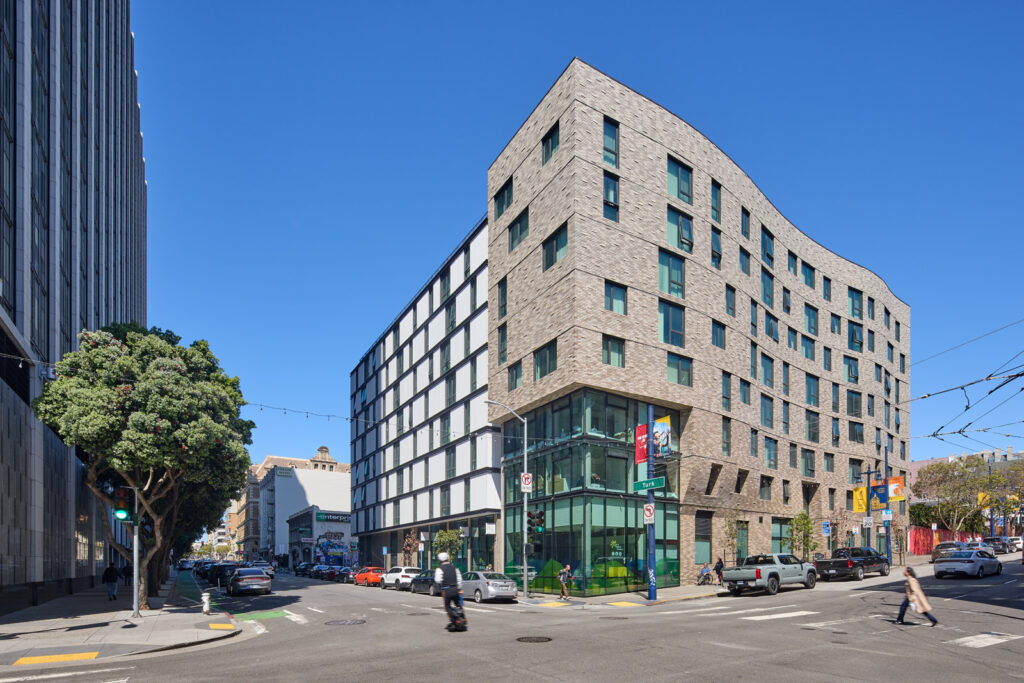
Honoring History through Revitalization
Located in the Tenderloin neighborhood of San Francisco, 555 Larkin/500 Turk Streets is a new mixed-use development comprising ground-floor retail space and 108 units of 100% affordable and supportive housing for formerly homeless residents, along with a shared courtyard, community room, and rooftop urban agriculture. INTERSTICE Architects is working with the Tenderloin Neighborhood Development Corporation (TNDC) to convert what was formerly Kahn and Keville automotive garage, a beloved Tenderloin business for over 100 years, into the lively, community-oriented development that will provide much-needed housing to this San Francisco neighborhood.
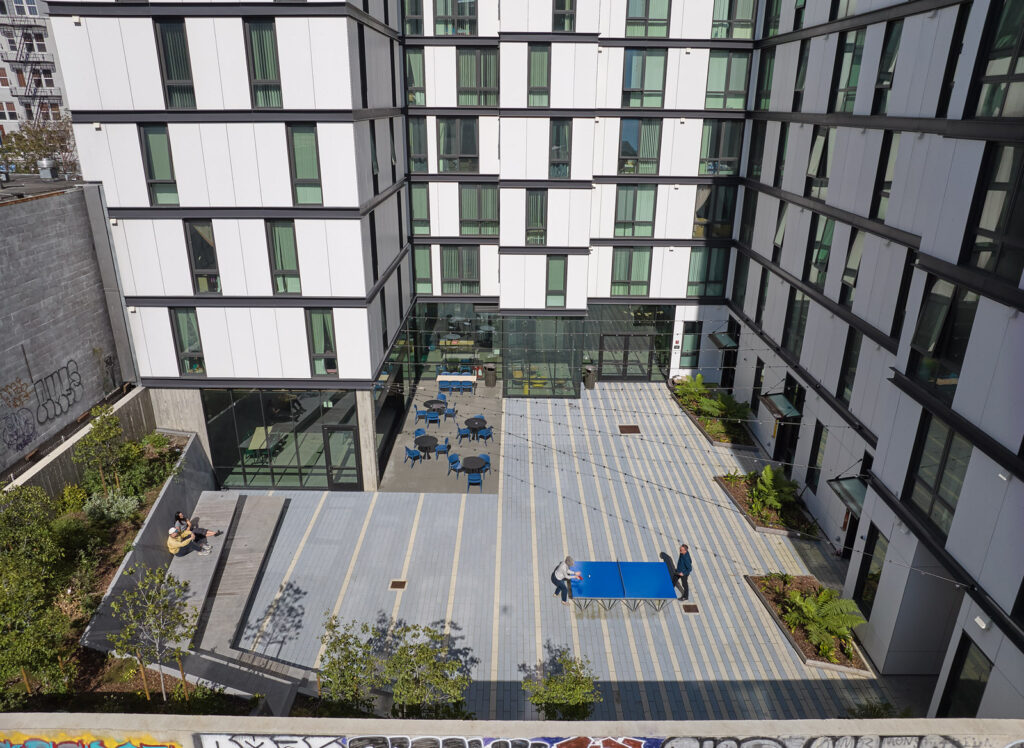
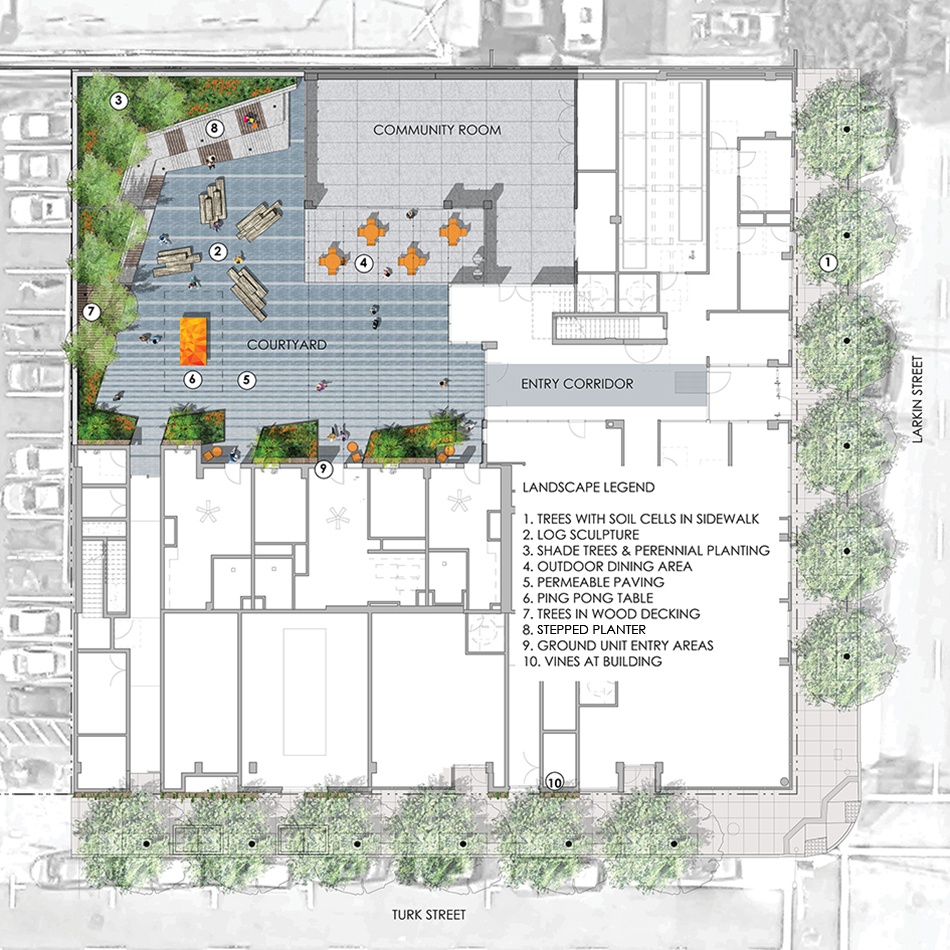
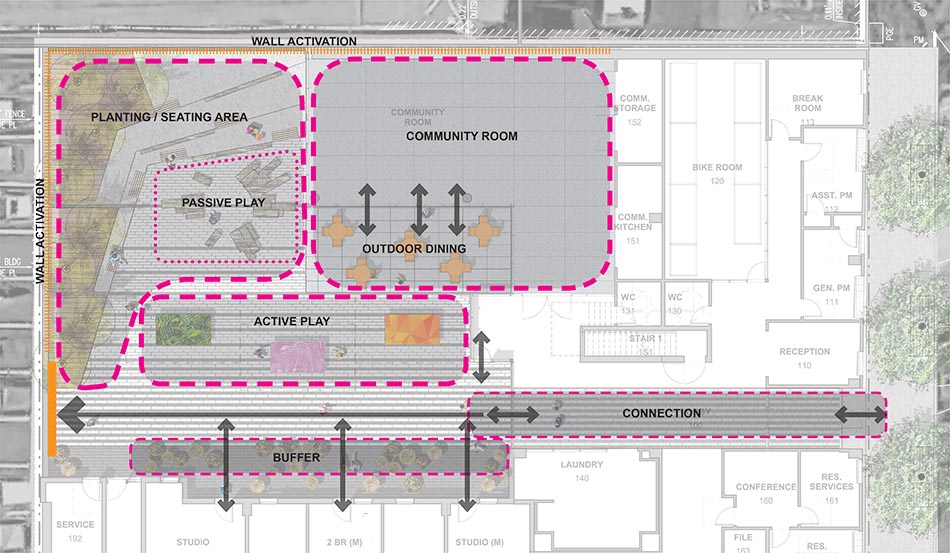
In the (Playful) Details
The courtyard landscape is at the heart of this project, acting as a place of relaxation, play, and community for the complex. INTERSTICE wanted to create a youthful space where those of all ages can enjoy a welcoming and playful environment. With close programmatic connections to the surrounding neighborhood, the ground and street level is designed to serve the community and contribute to environmental resiliency through the use of permeable paving throughout the courtyard and a soil support system in the sidewalks to improve the viability of the urban forest. A brightly-colored ping-pong table sits beneath overhead festoon lighting adjacent to the community room where residents can gather and socialize. Wooden sculptures meant for passive and imaginative engagement are situated in a loose circle, acting as a focal point for the courtyard. The terraced planter wraps around this centerpiece and provides wood-clad seating beneath the canopy of adjacent birch trees and ferns. INTERSTICE designed a banded textural paving pattern underfoot that extends from the planters at one edge of the courtyard to the foyer and to the ground-level studio apartments. These ground-floor apartments feature small planted garden spaces, providing a sense of private oasis at the residents’ front doors. The courtyard wall, meant to provide privacy and security from the neighboring Phoenix Hotel and surrounding buildings, is designed with vertical board form texture, reflective inserts, lighting, and quotes to create an activated and engaging perimeter.
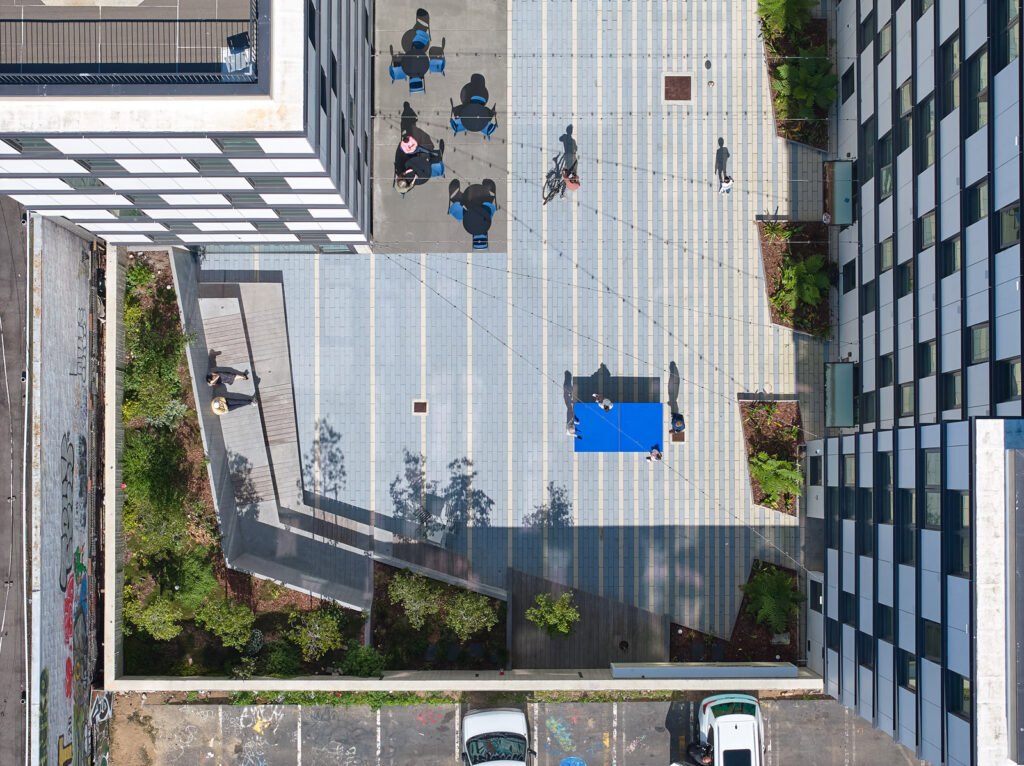
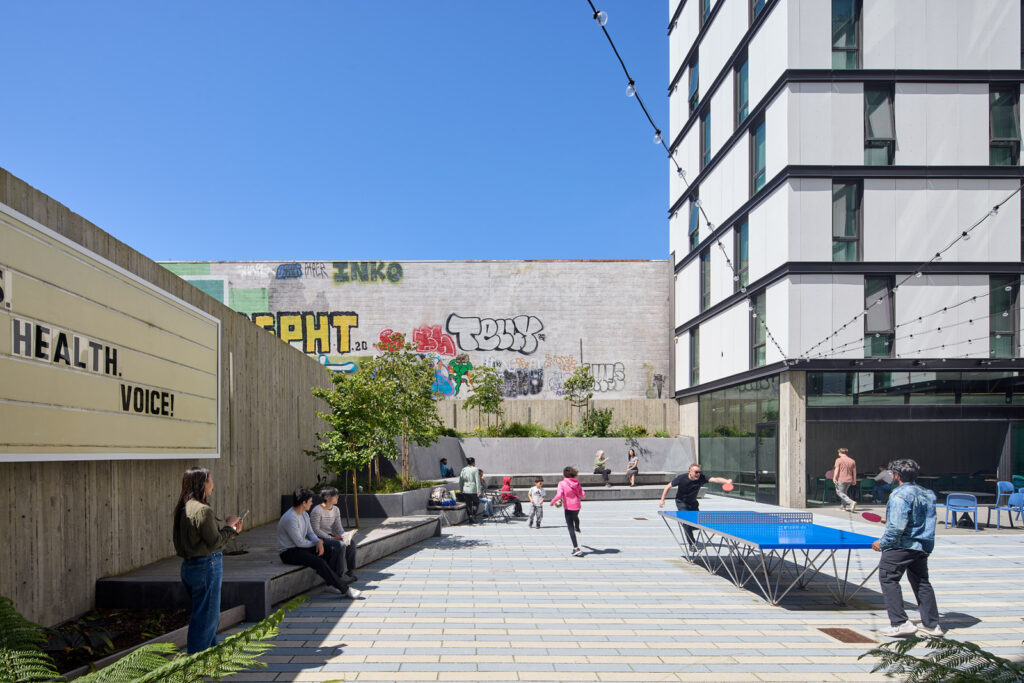
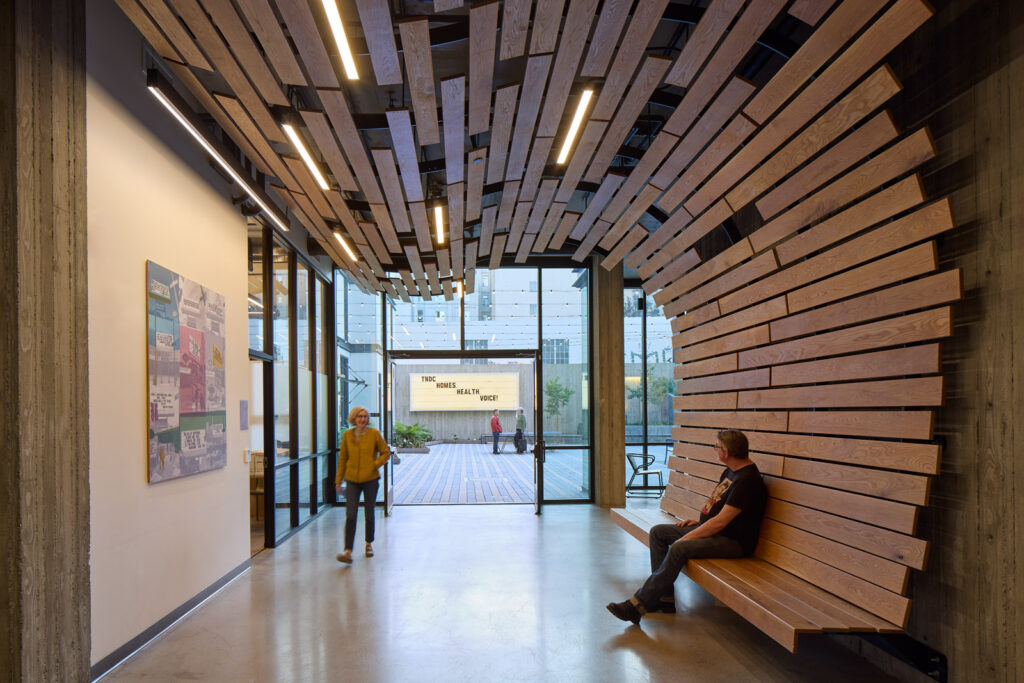
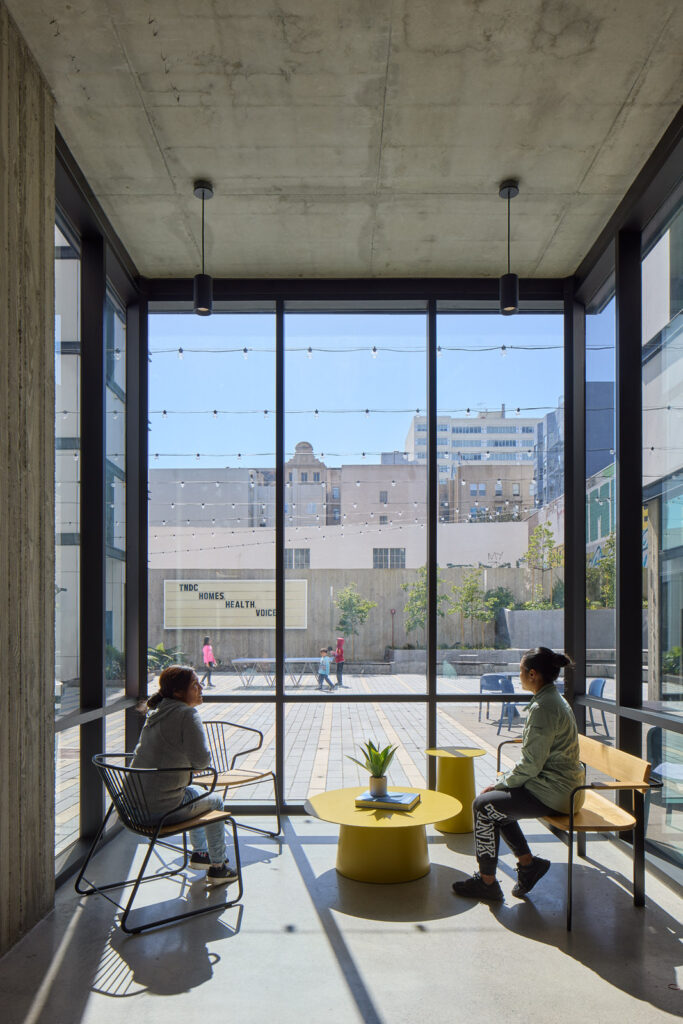
A Beloved Billboard Reimagined
Kahn and Keville automotive garage was established in 1912 on Golden Gate Avenue—not far from 555 Larkin/500 Turk where it moved 23 years later. In 1956, the now famous letter board sign was erected at the corner of Turk and Larkin Streets as a way to amplify what had once been written on simple pen and paper inside the garage: quotes, poems, and observations soon appeared in bold, black letters above the intersection. The sign became a fixture in the Tenderloin neighborhood and the design team has integrated it into the new project. The sign can be seen from the front entry reception on Larkin and upon entry to the courtyard. Visitors and residents will continue to experience and honor the genius and history of its presence on this particular city block.
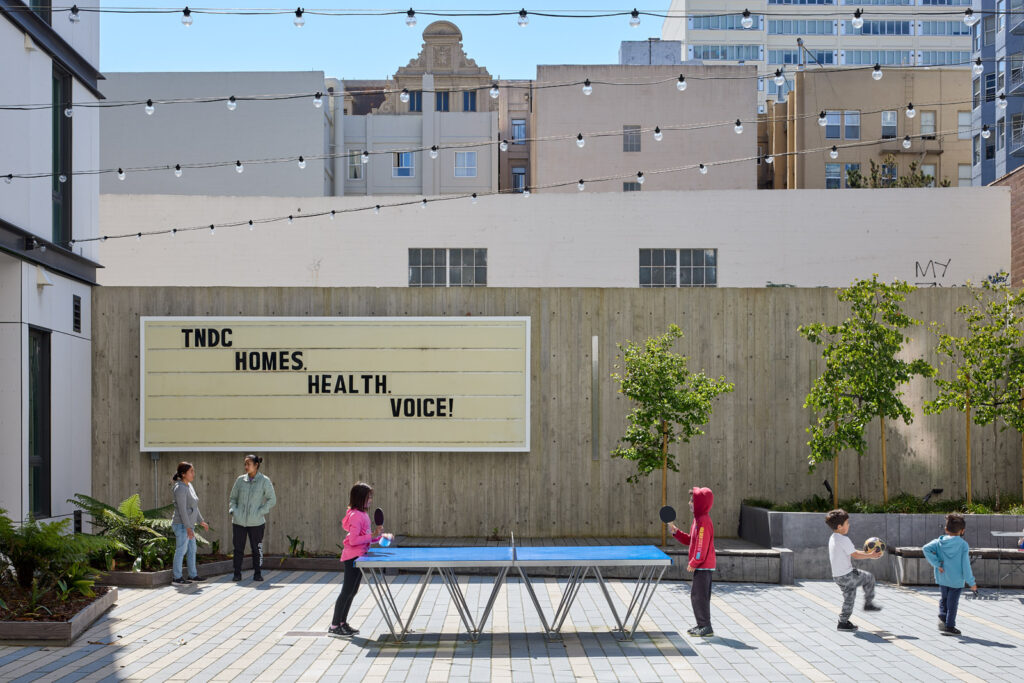
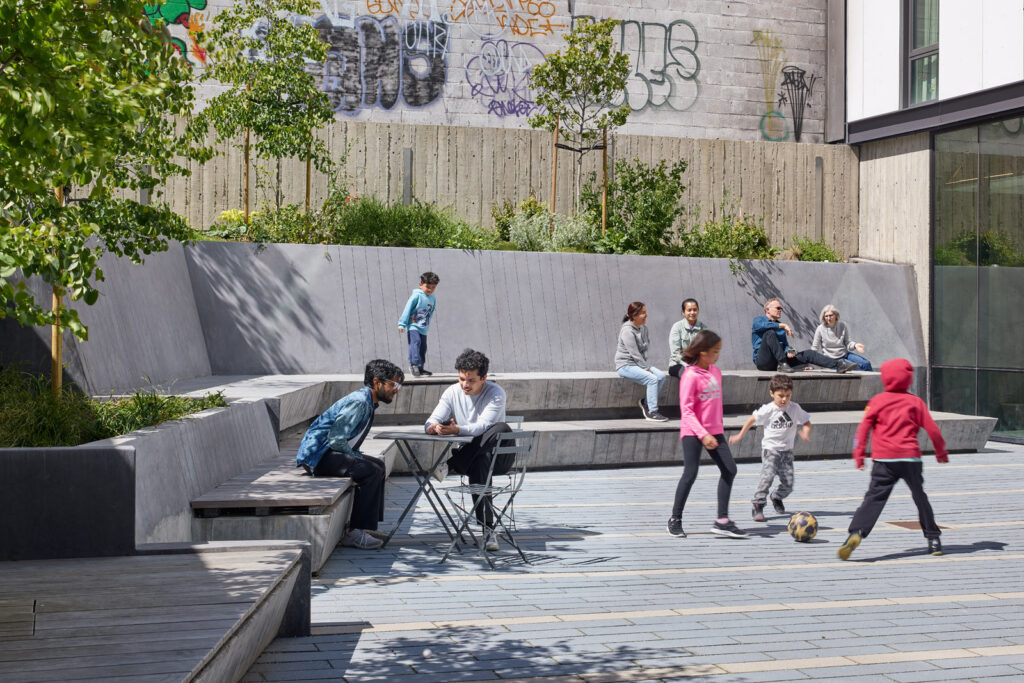
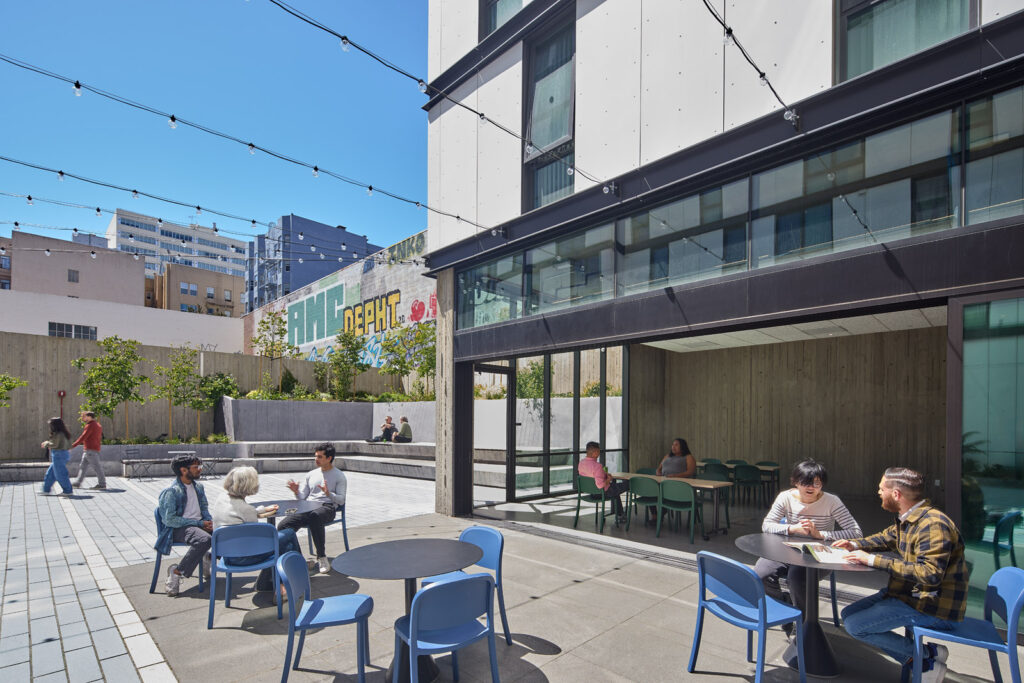
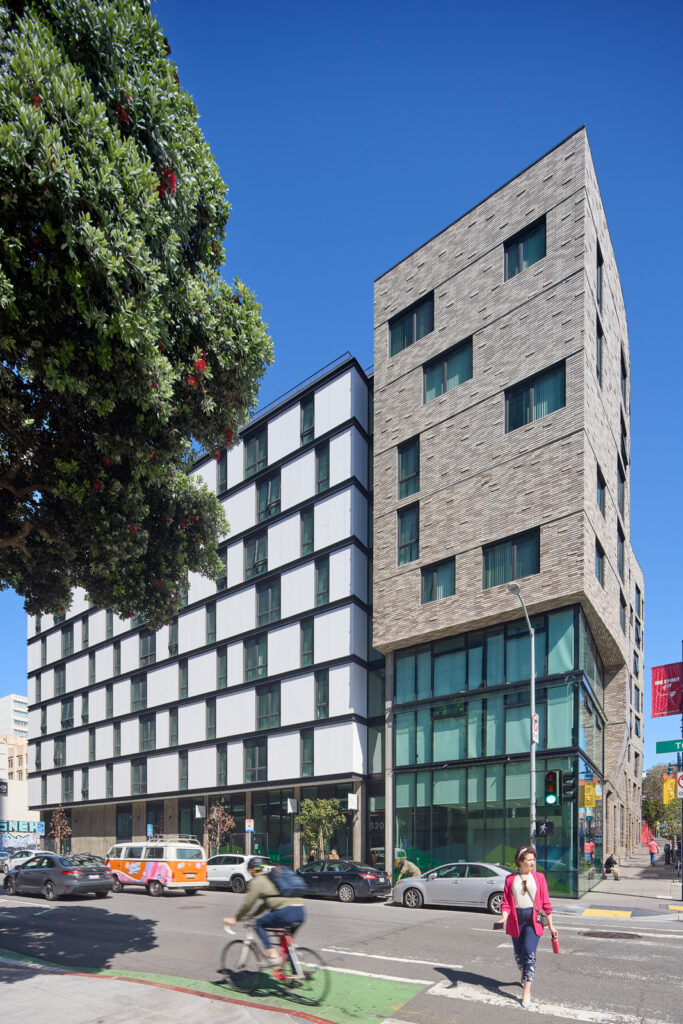
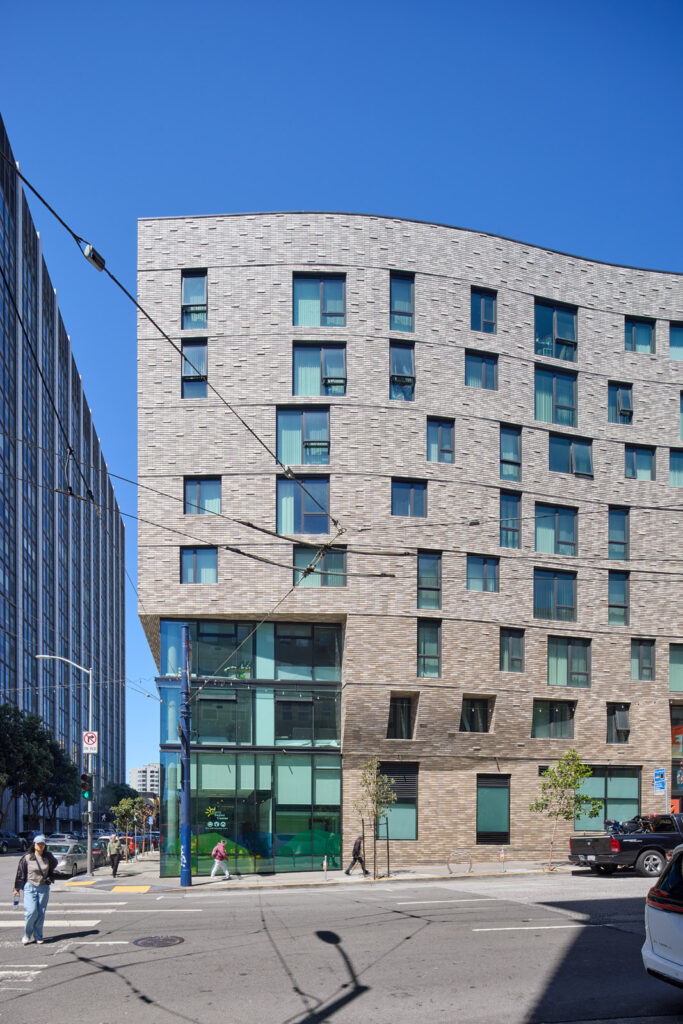
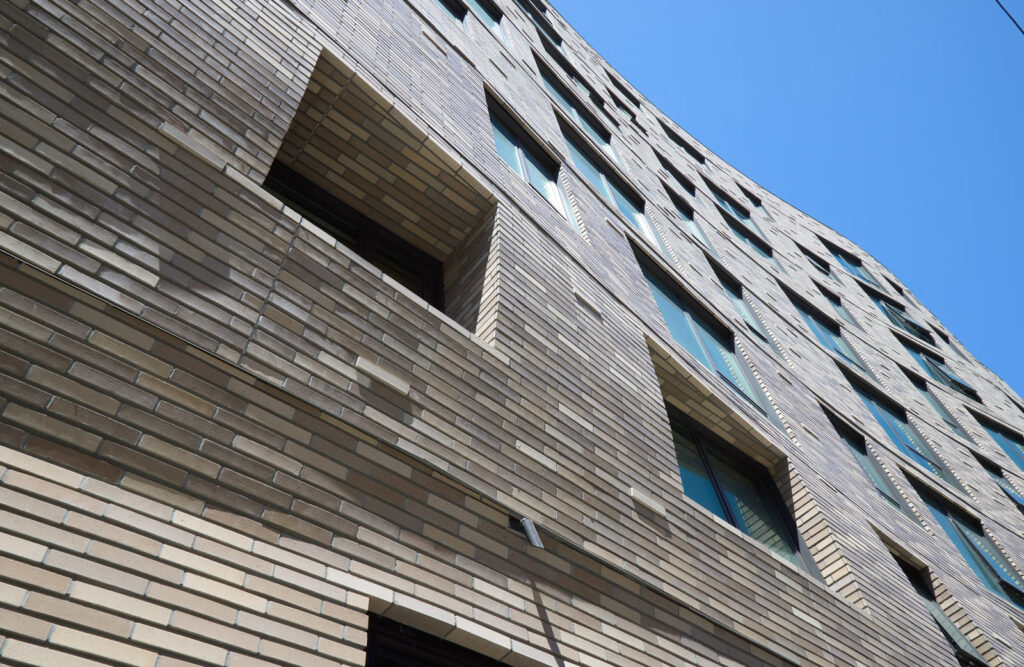
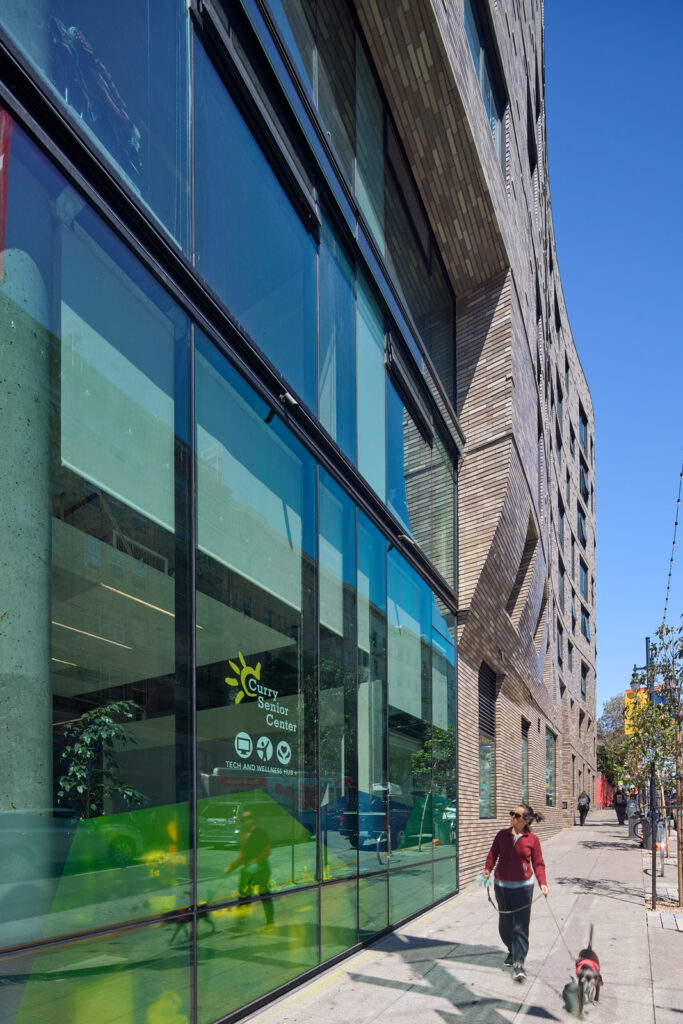
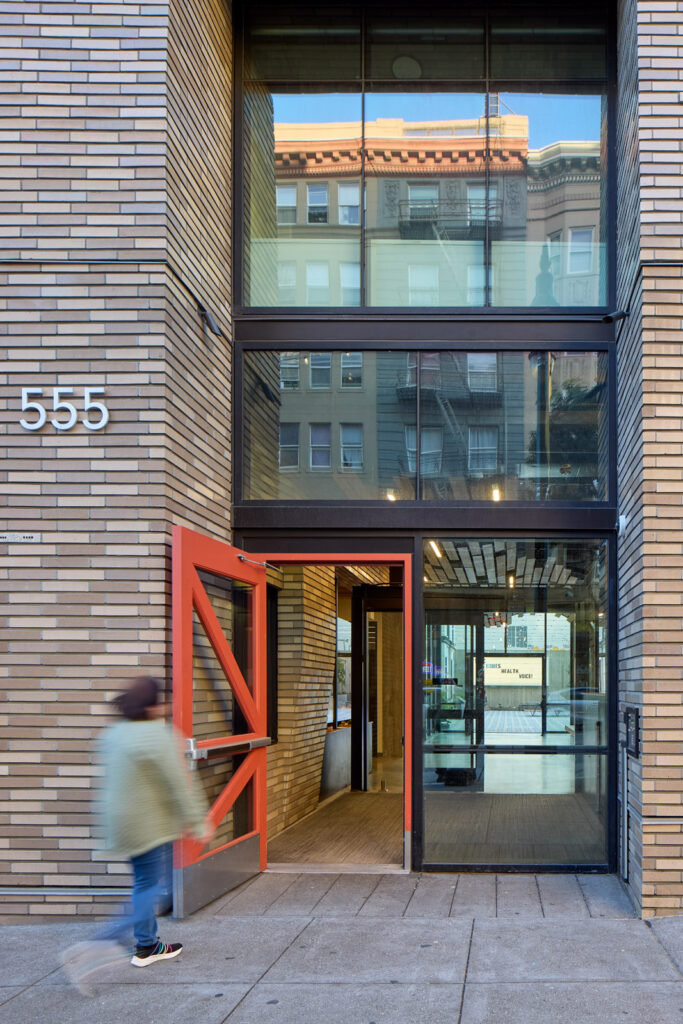
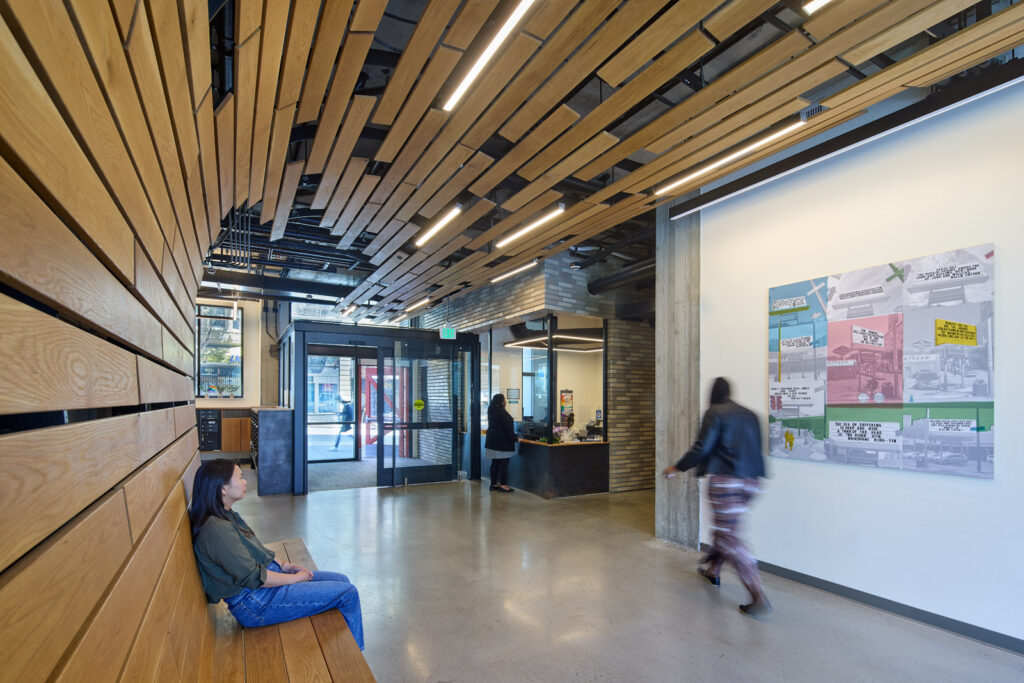
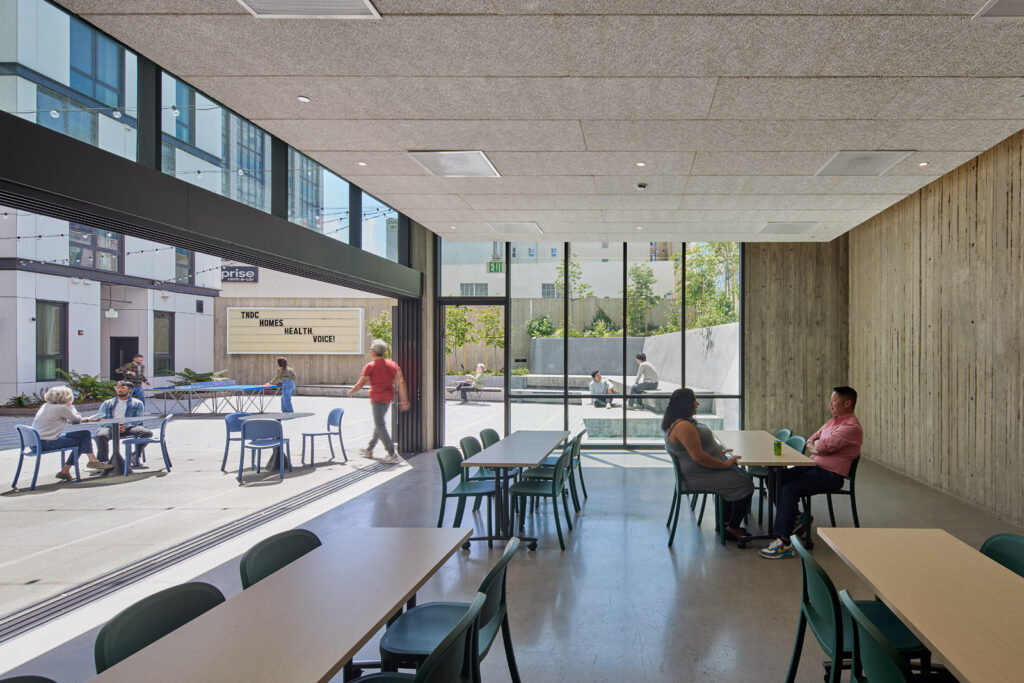
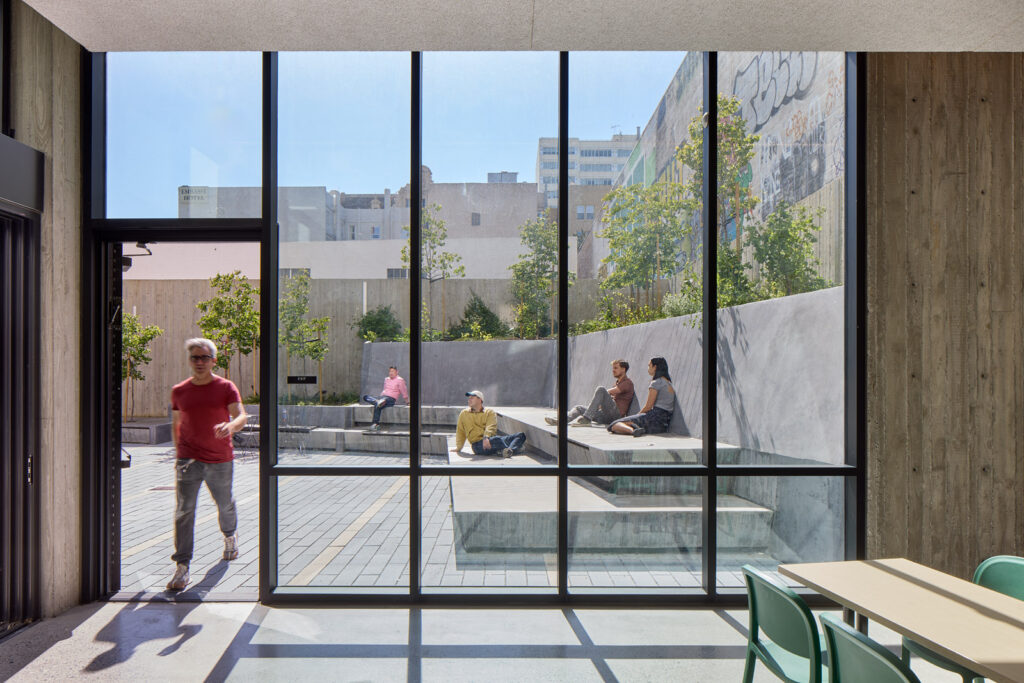
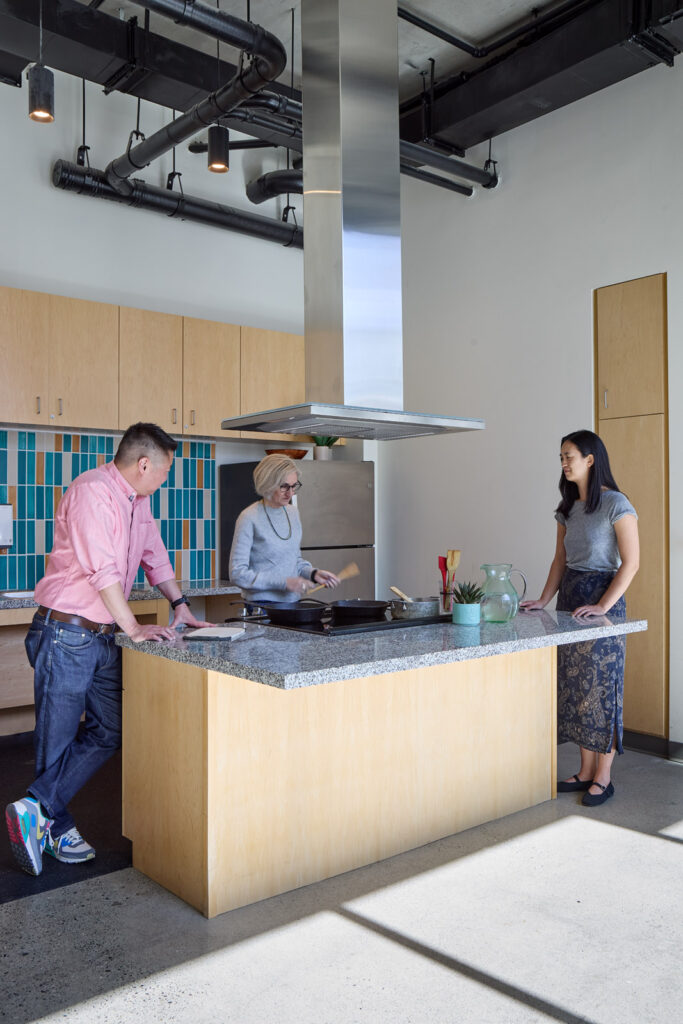
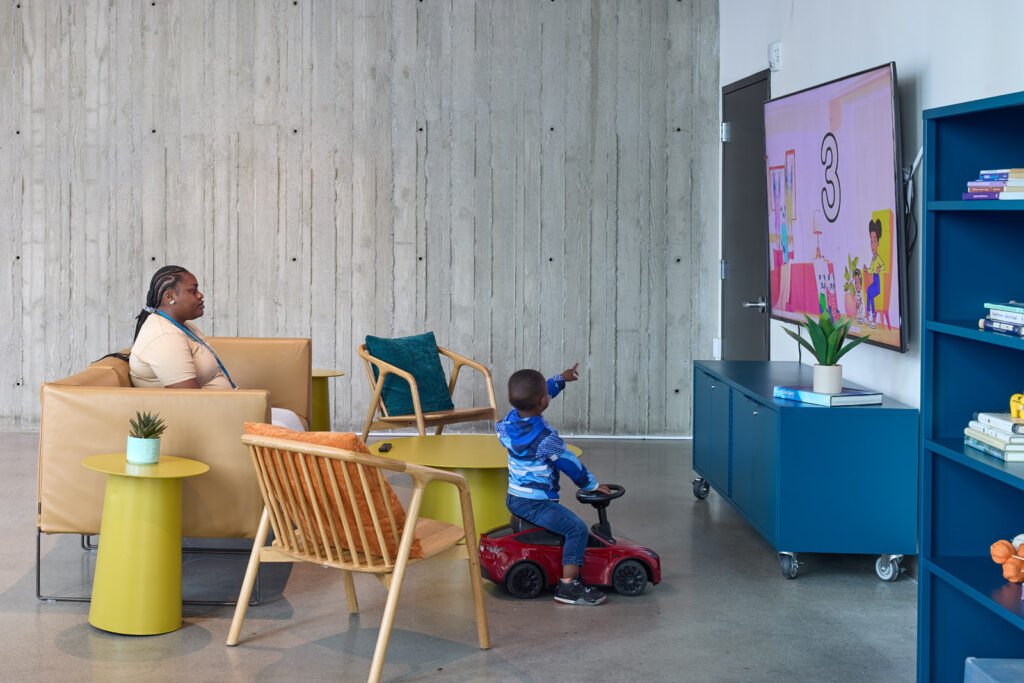
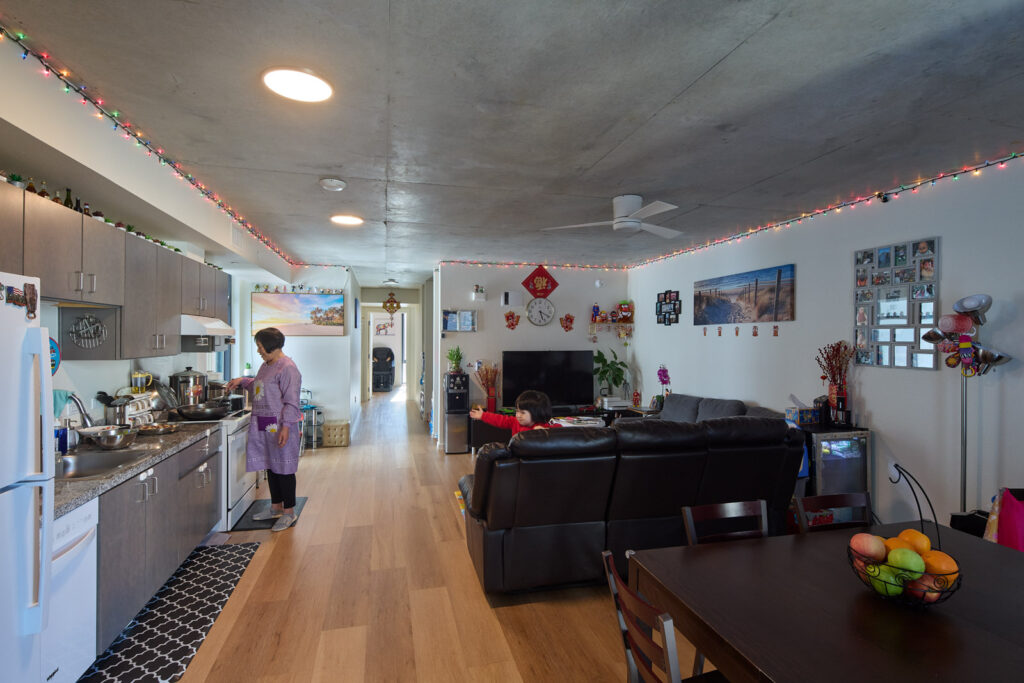
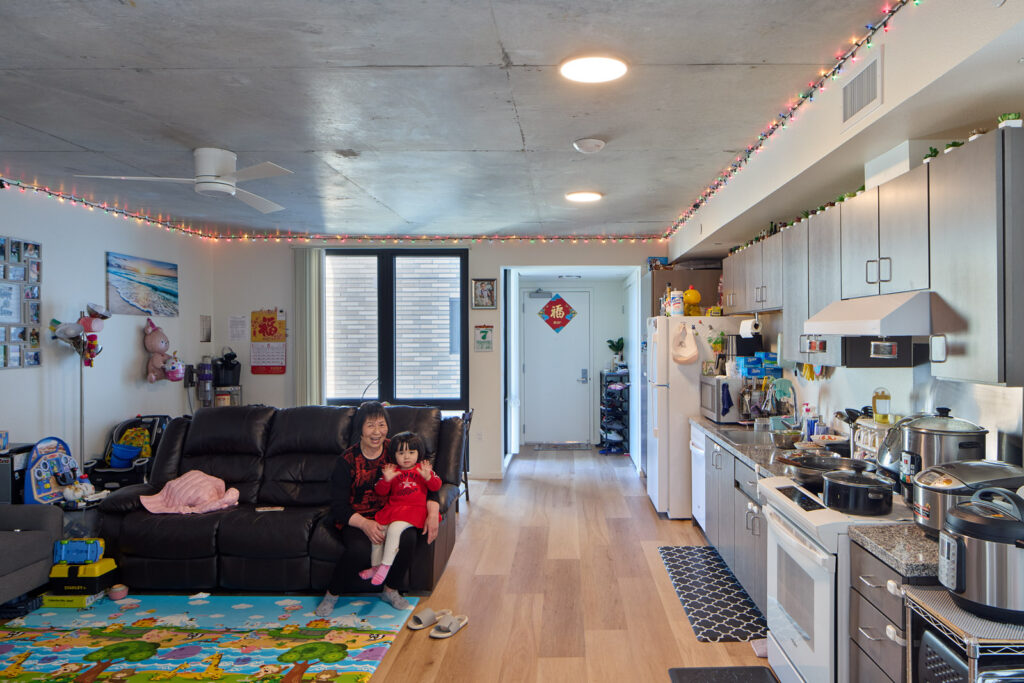
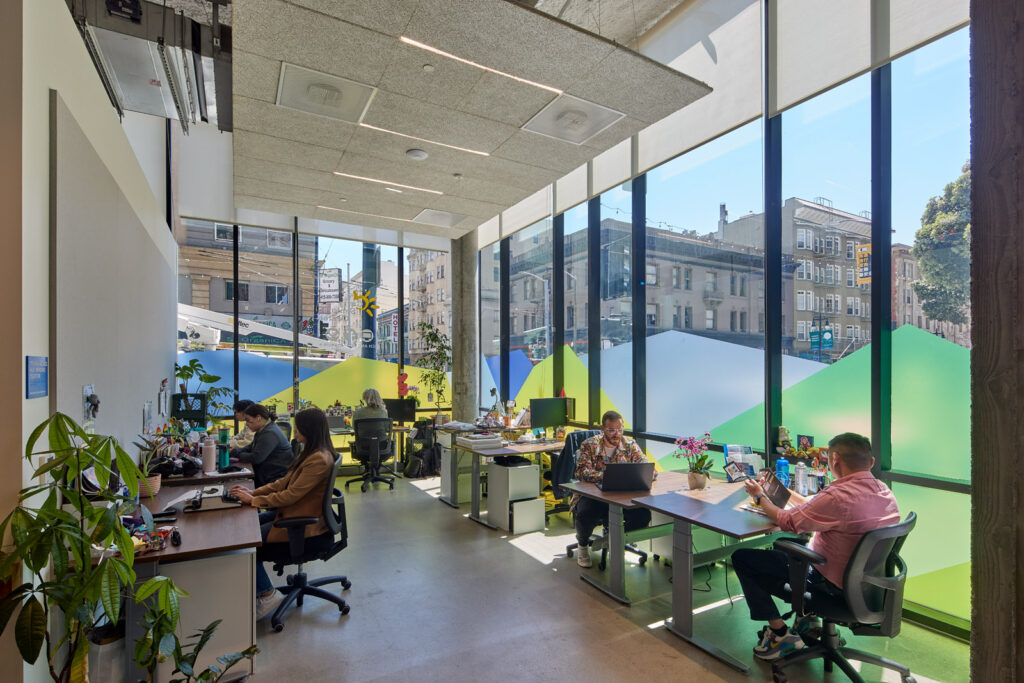
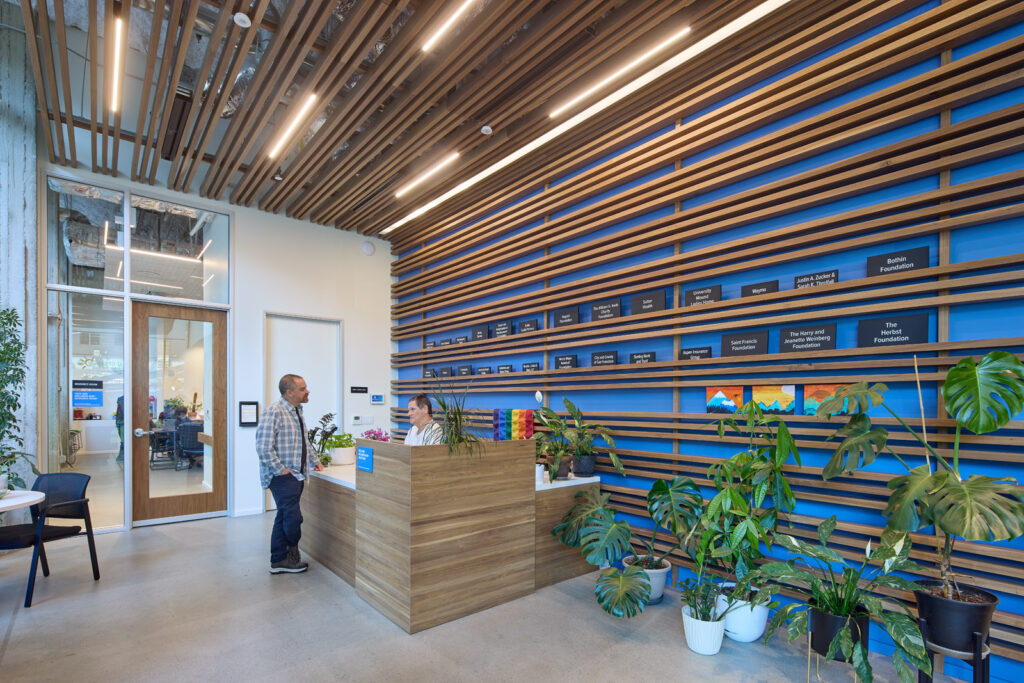

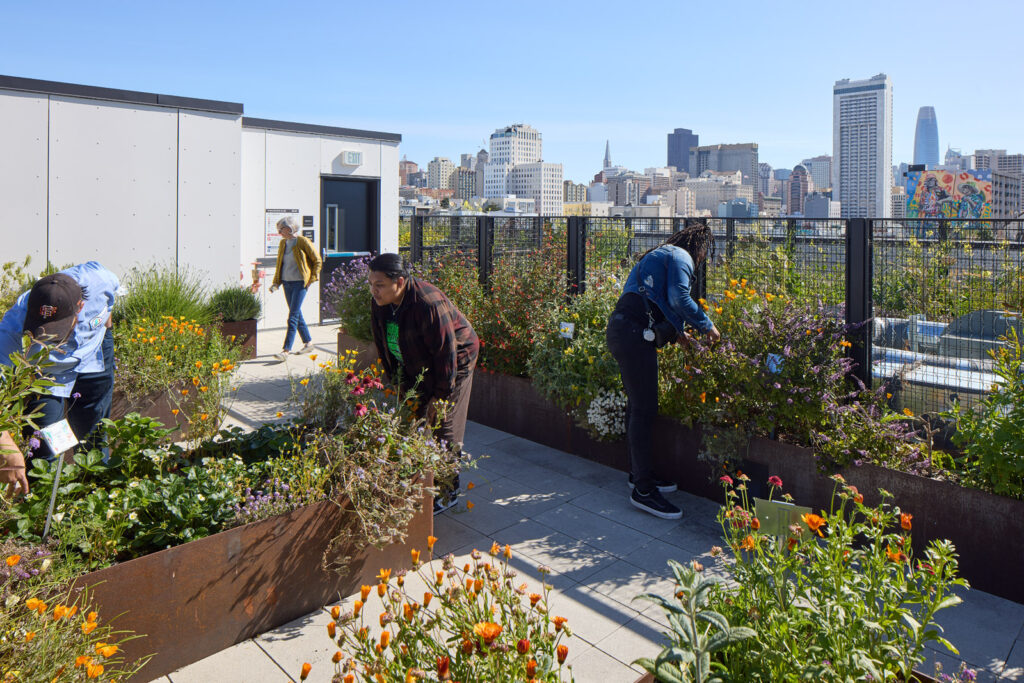
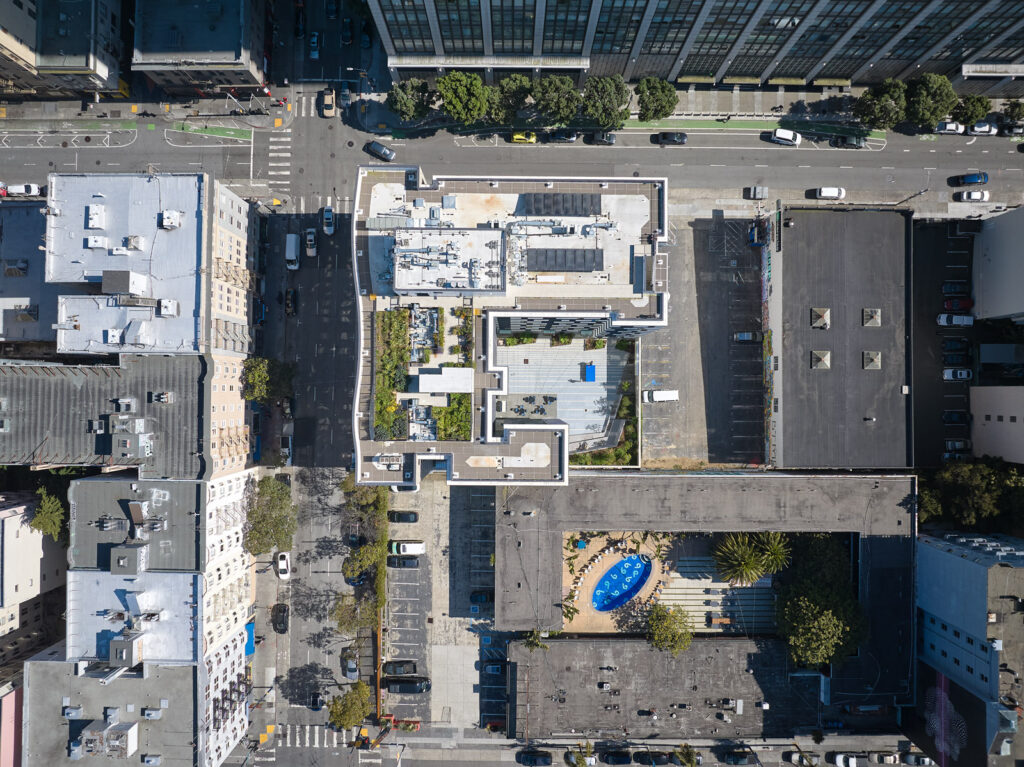

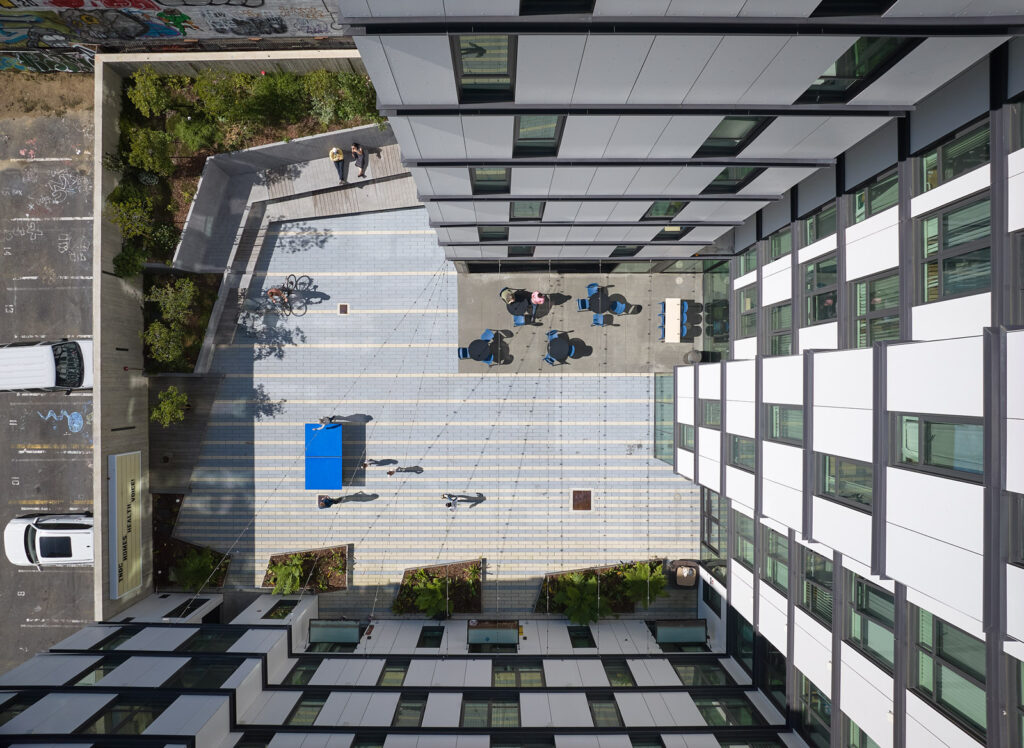
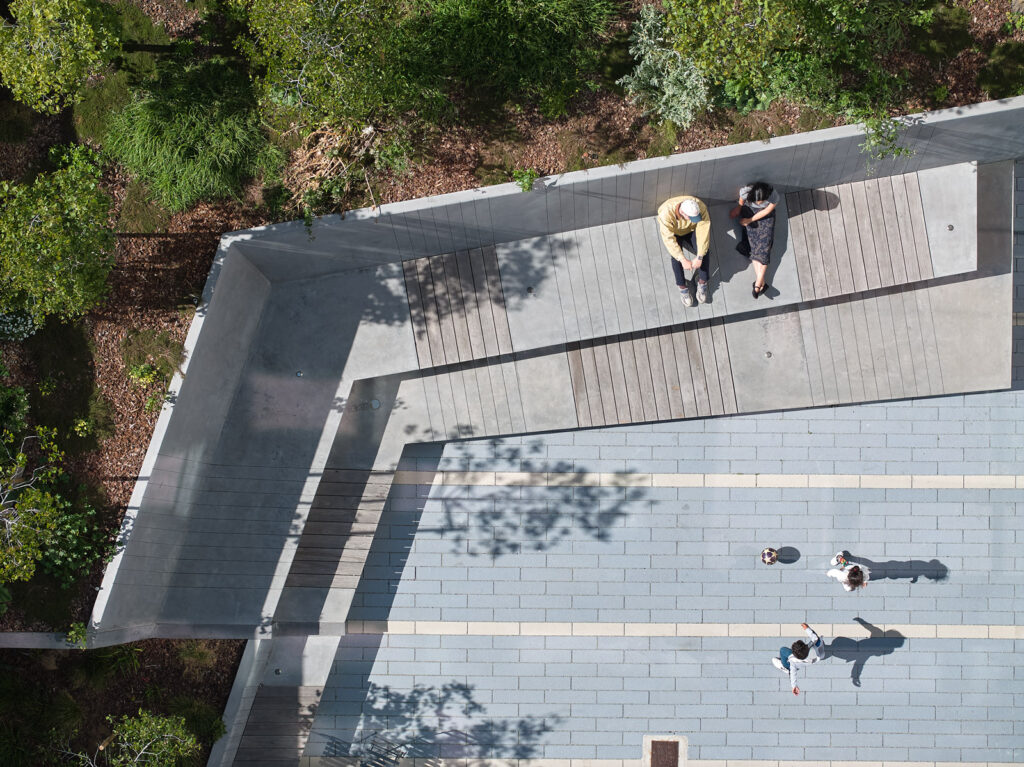
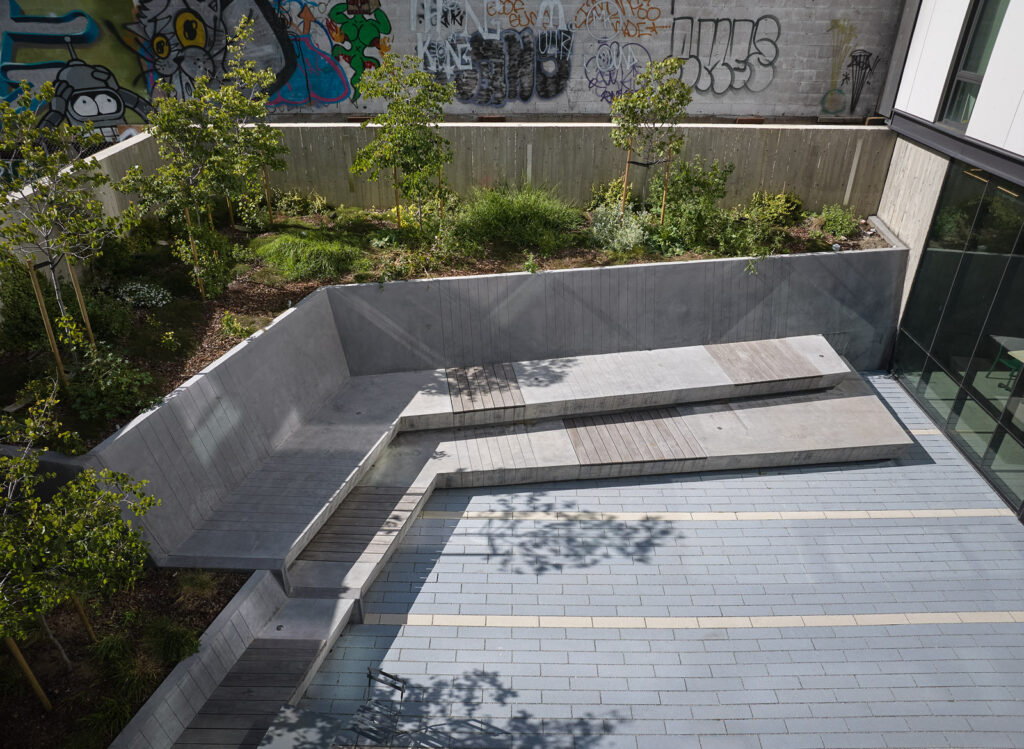
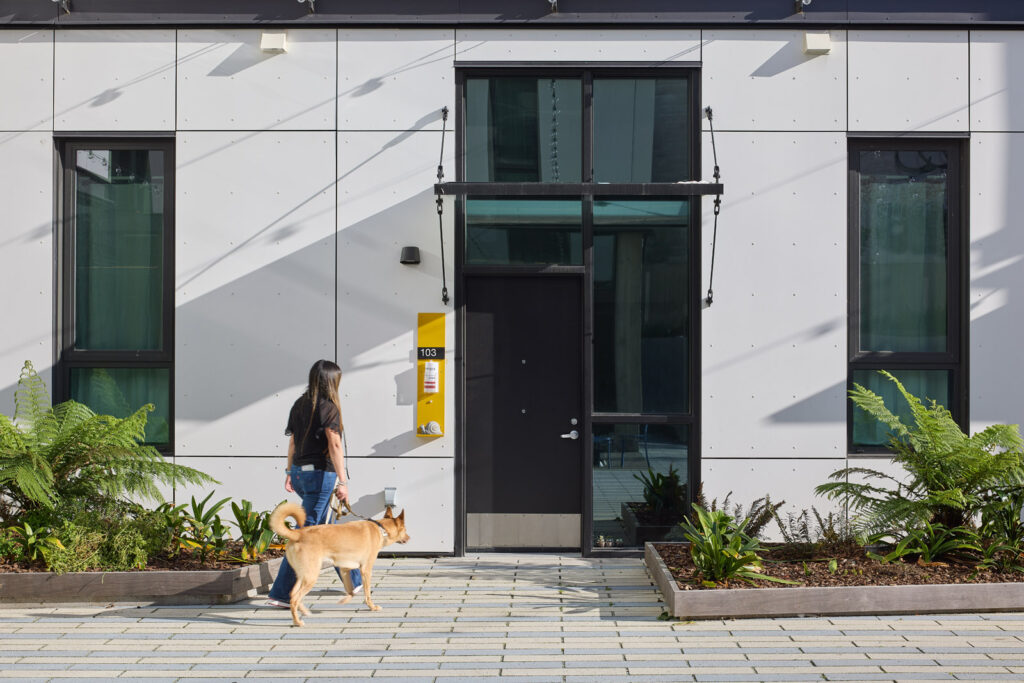
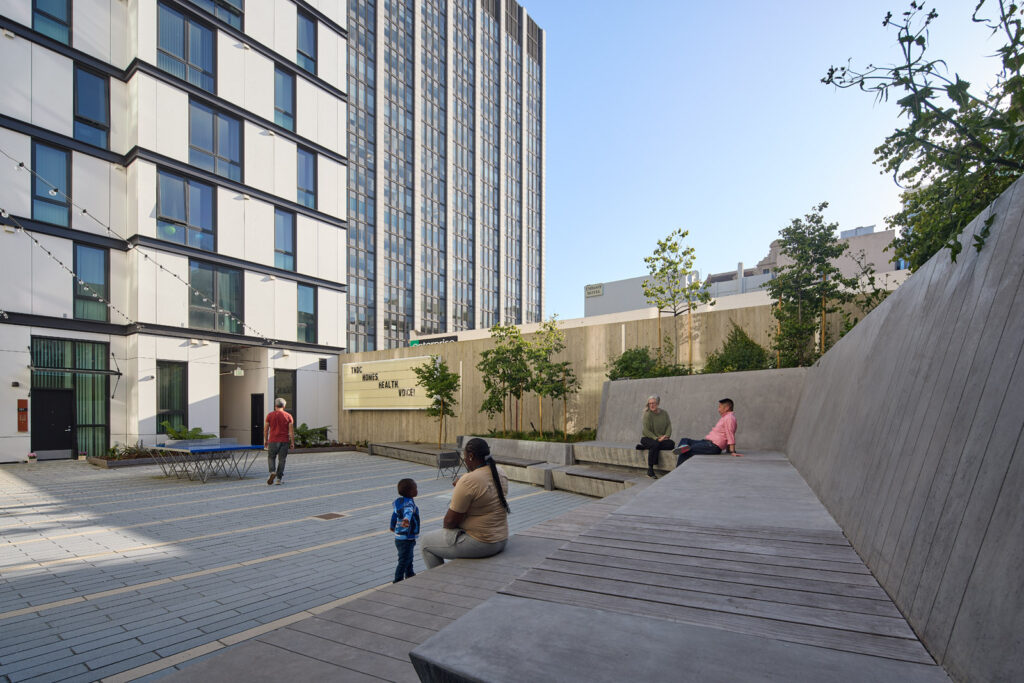
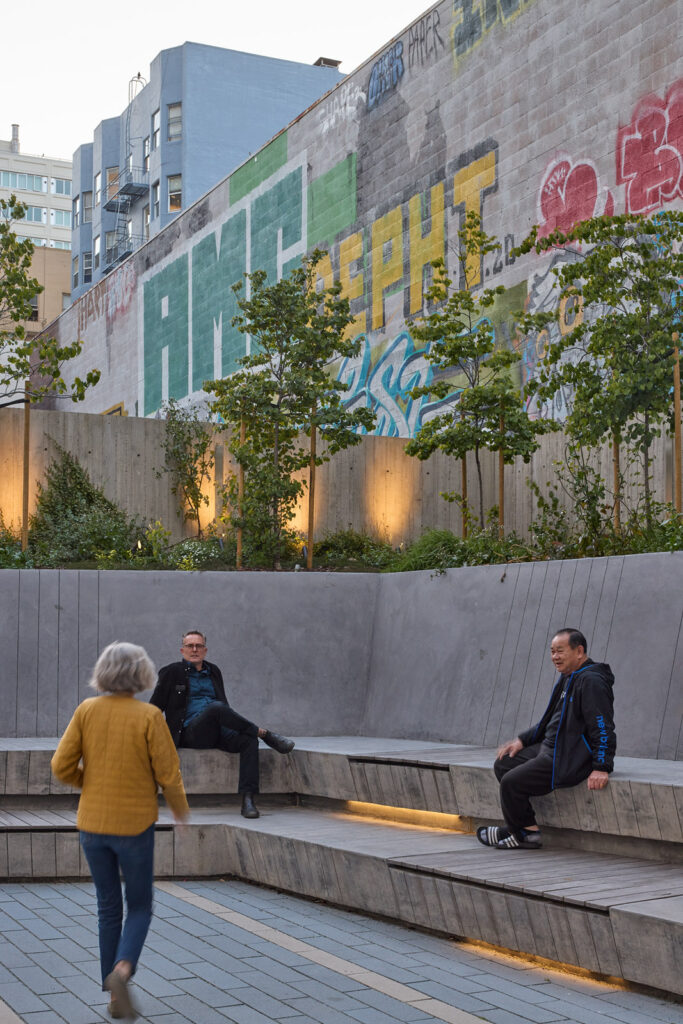
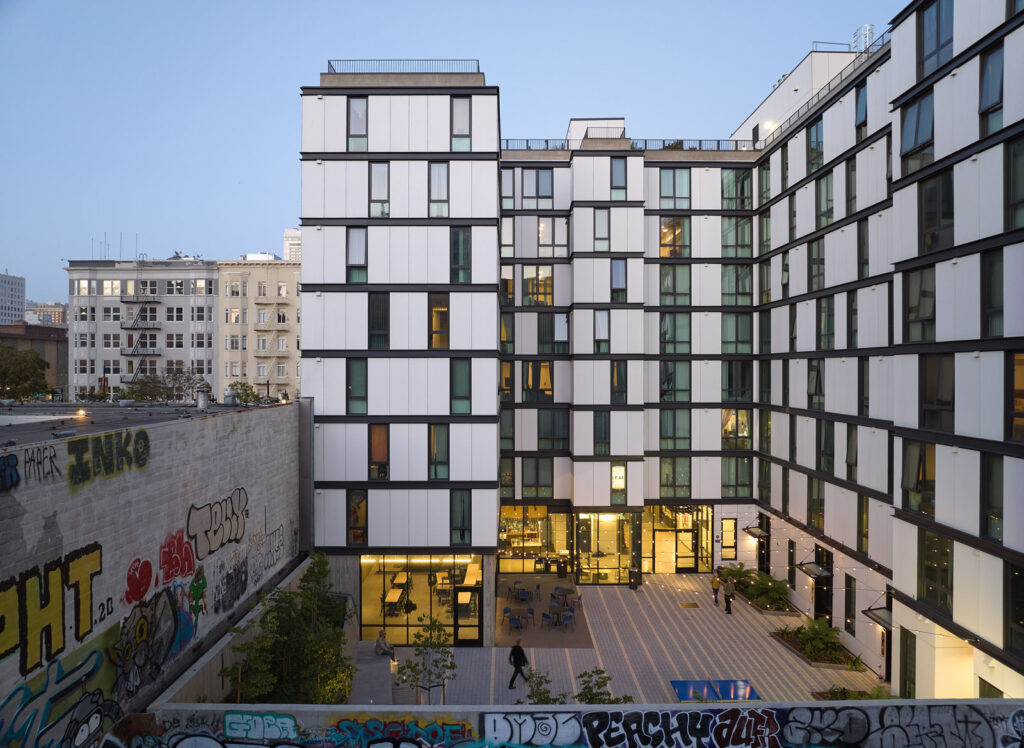
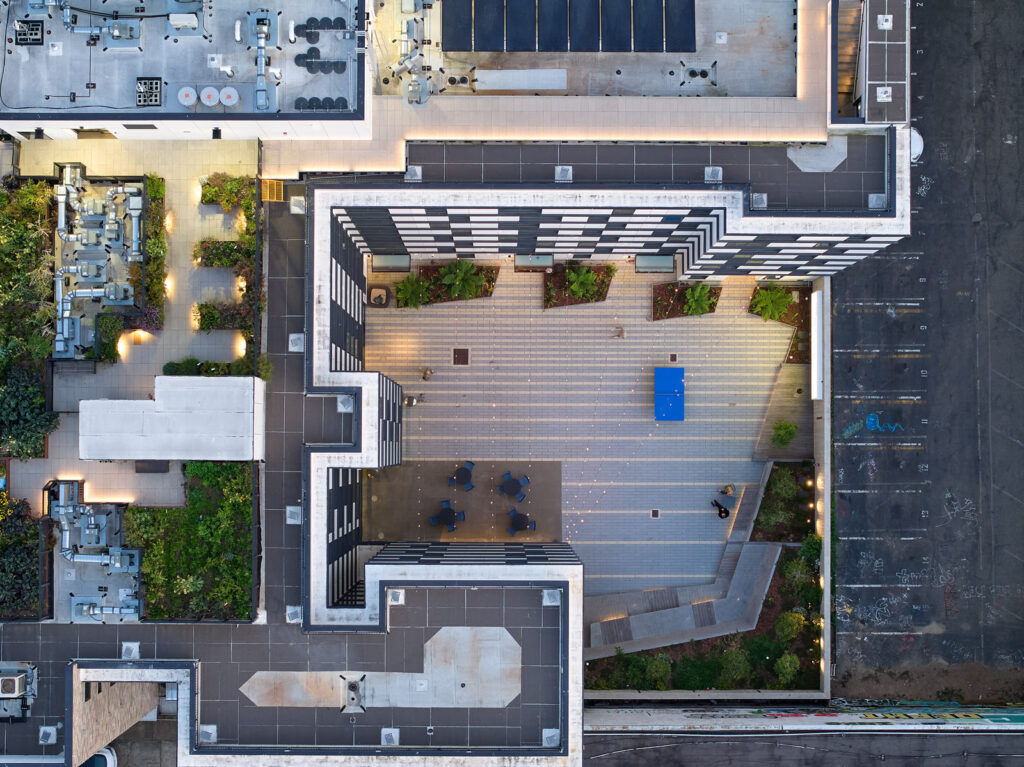
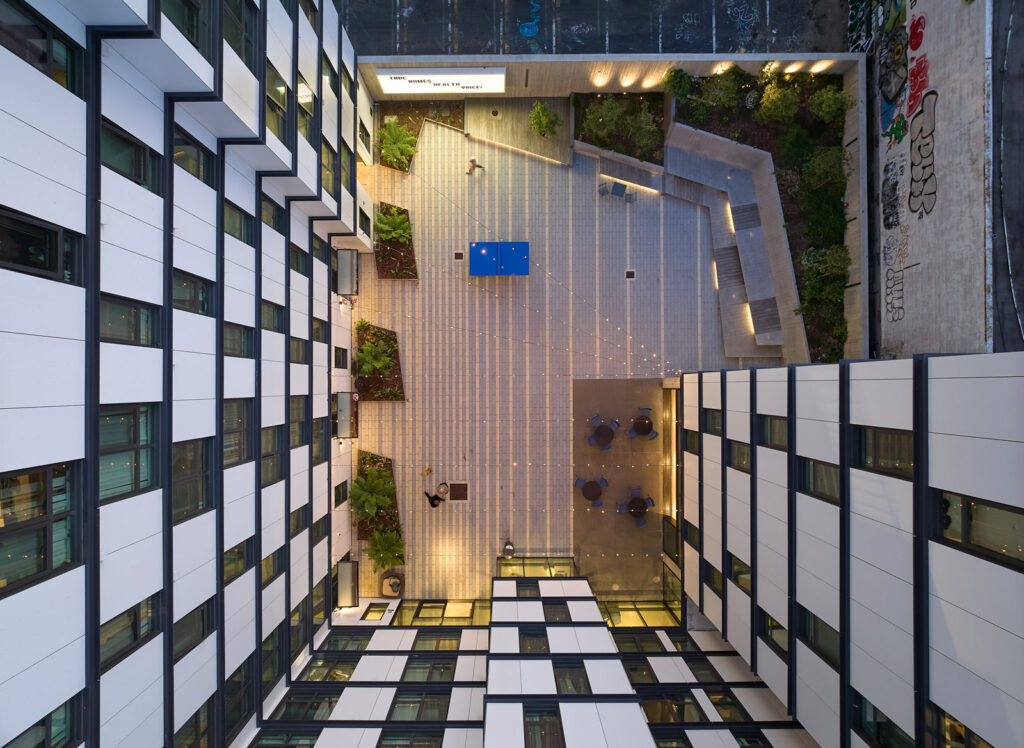
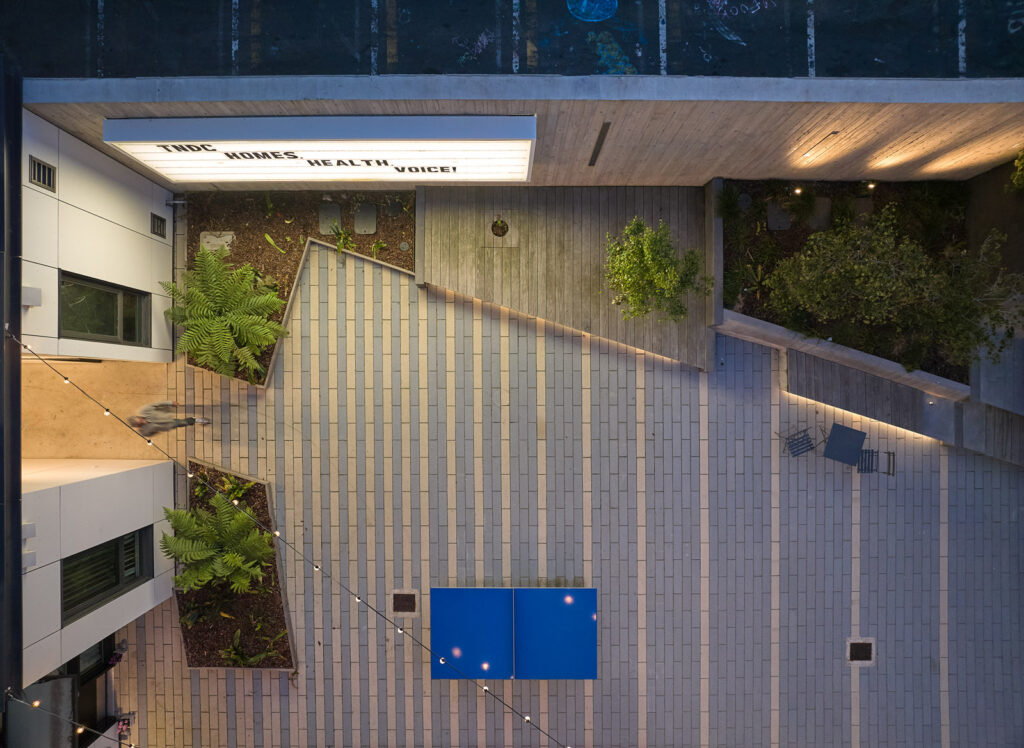
Location: Tenderloin Neighborhood, San Francisco
Owner/Client: Tenderloin Neighborhood Development Corp. / David Baker Architects
Scope: Courtyard Landscape & Streetscape
Status: In Progress
Photography: N/A
Sunnydale
Building New Affordable Southern SF Neighborhoods
The Sunnydale Mixed Use and Affordable Housing Landscape creates a vibrant place for community from its at-grade pedestrian mews of turf mounds, with oversized animal sculptures, chess boards, and long picnic tables supporting family and neighborhood celebrations, to its more intimate podium-level communal courtyards, where perimeter plantings frame social spaces.
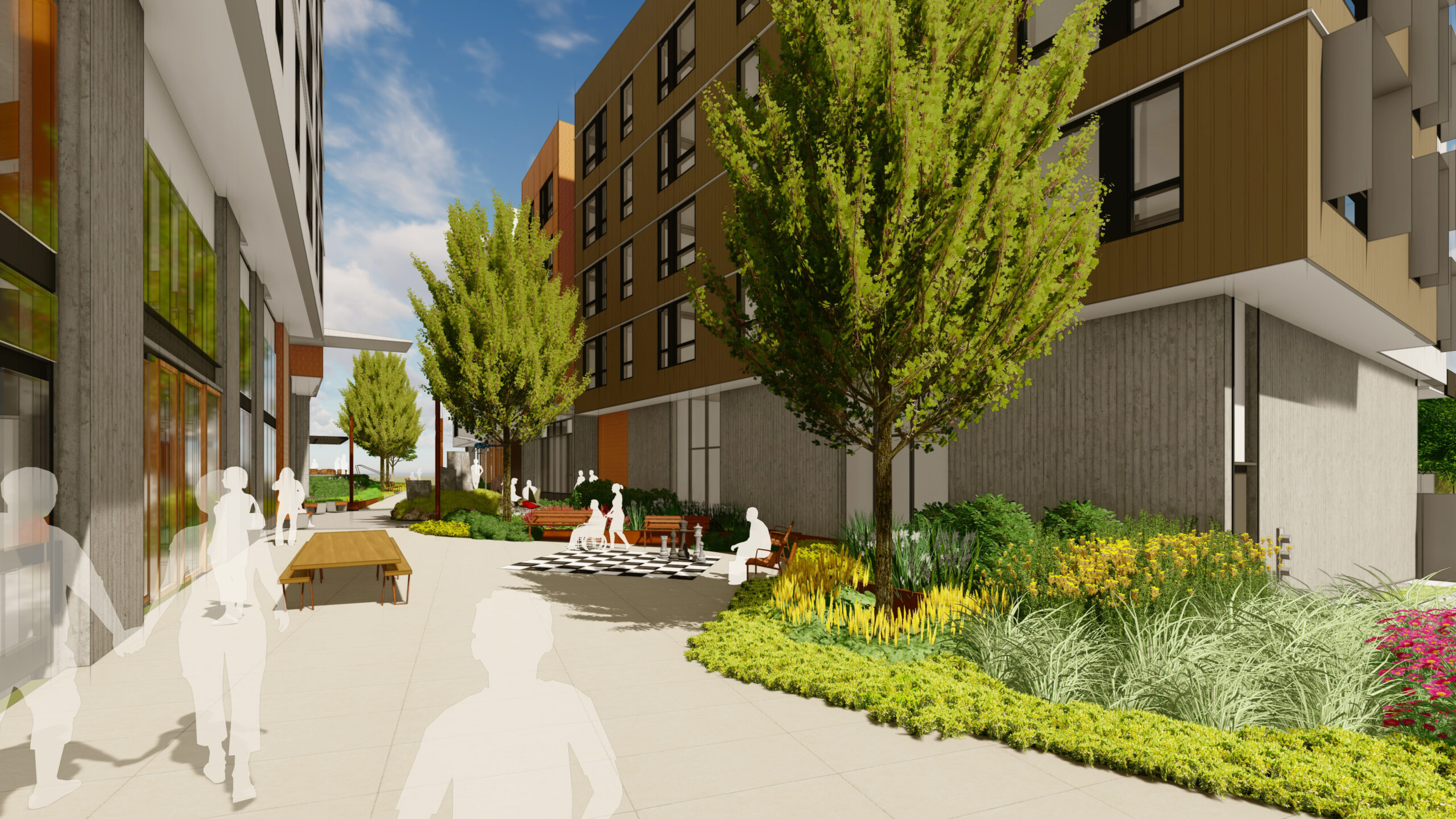
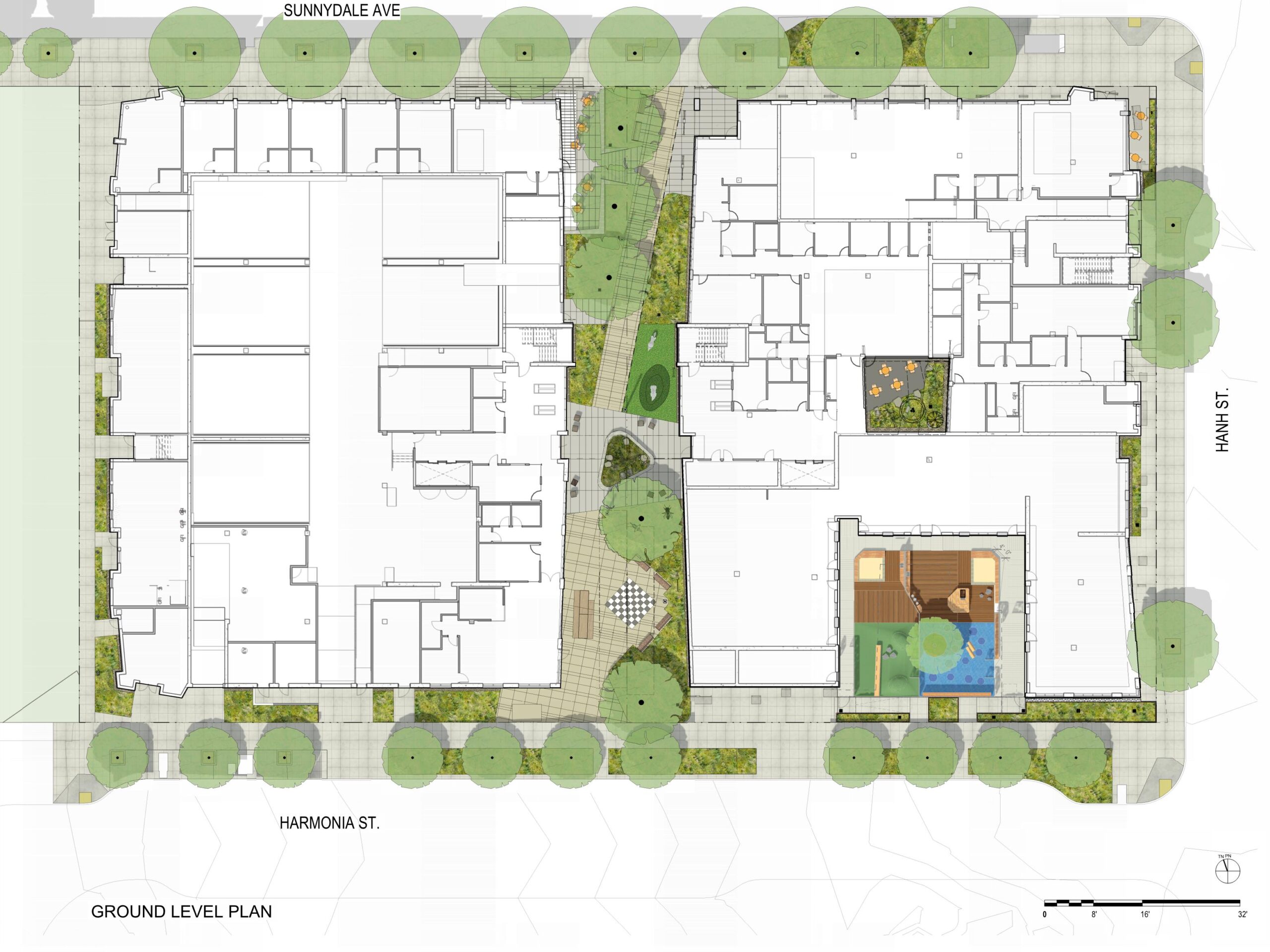
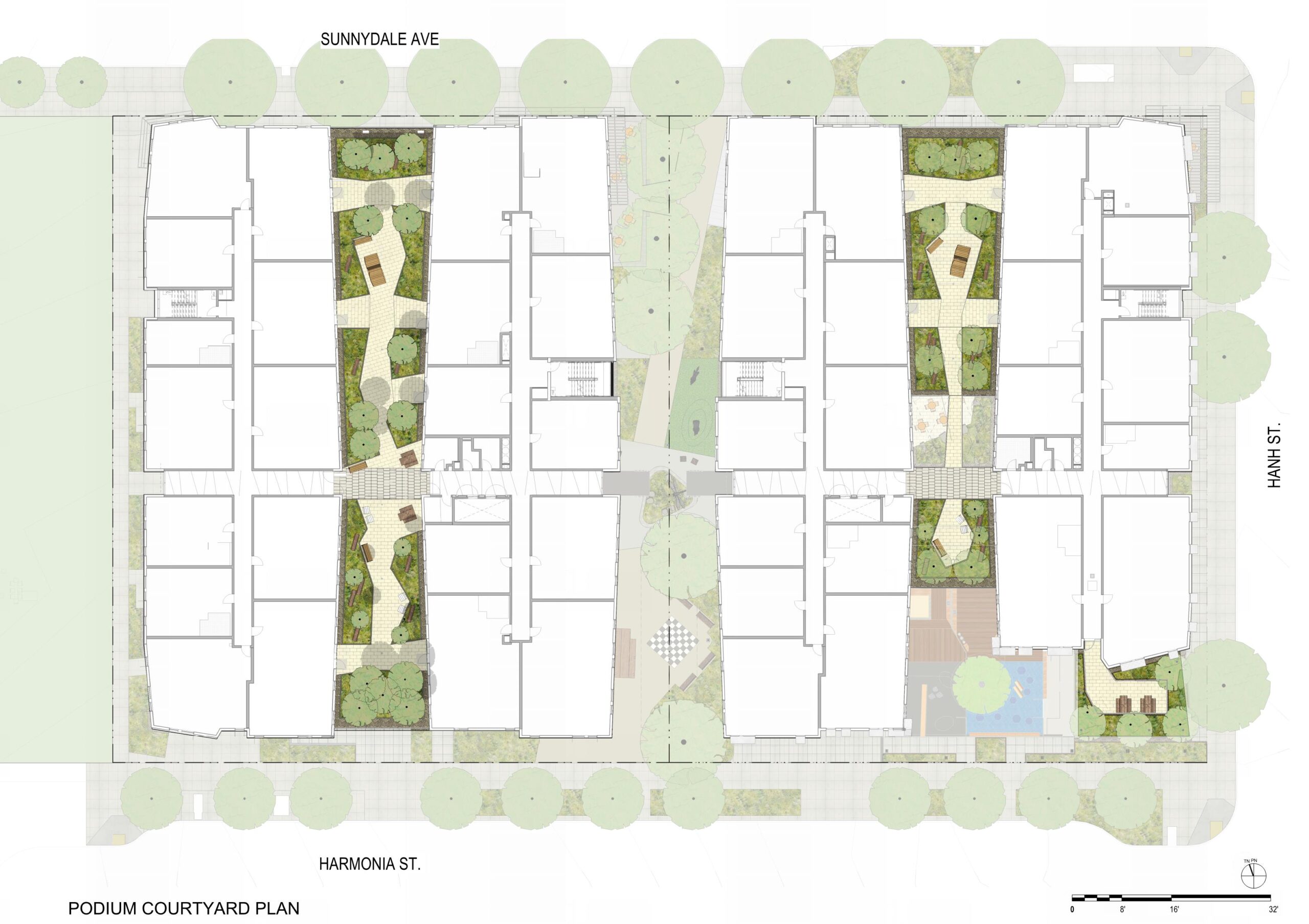
Neighborhood Focused Design
The ground level is a service-rich mix of uses including space intended for a future market hall and grocery where two landscape terrace areas support food-related use with outdoor dining. Across the Mews, a large office suite of housing management offers resident services for the larger Sunnydale development, including a Wellness Center and early childhood education center with a private outdoor courtyard. The office suite has a lushly landscaped courtyard that provides light, natural boulders and seating for lunch breaks and impromptu meetings. At the western side of the site, the housing units face a future park and includes ground-level micro-retail spaces activating the street edge and providing opportunity for local residents to serve their community.
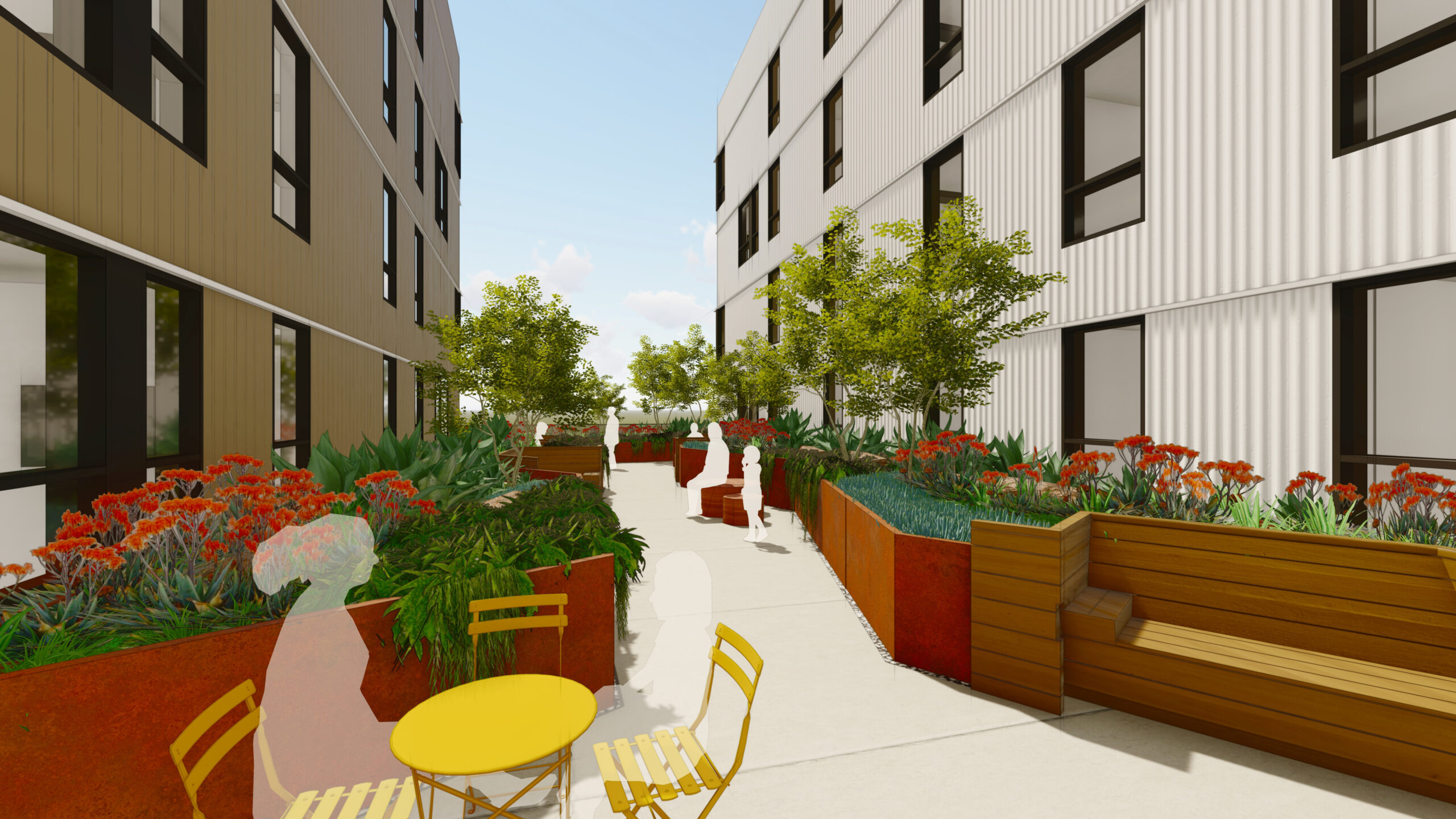
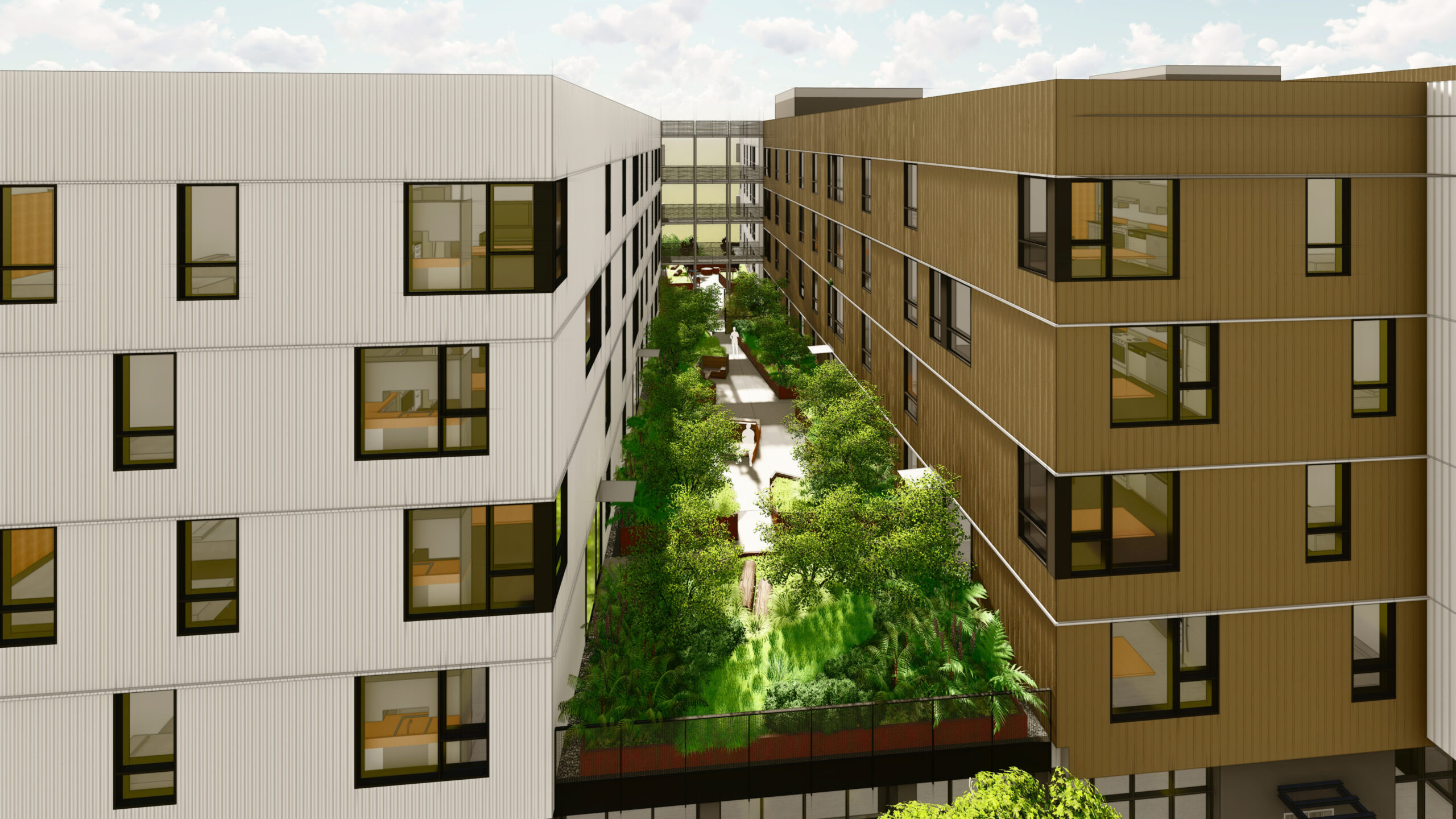
Public Facing Mews as Spine
The site design connects two new affordable housing communities creating a village-like pedestrian passage of vegetated, activated, and socially-oriented spaces. This new San Francisco POPOS takes the form of a central Mews lined with retail, collective gathering spaces, and lobbies for the two residential communities, located as a public “spine” connecting the larger neighborhood-serving mixed-use perimeter and the community center to the north and housing community to the south.
Shared Green Courtyards
The podium level of each building parallels the ground-level mews and are enclosed garden courtyards that provide access to adjacent living units. These second-level podiums are open to the street and sky. The internal pathways weave through these rooftop gardens to provide smaller intimate gathering spaces for residents, where they can dine outdoors, sit and enjoy the garden, or lounge with friends on larger furnishings. Outdoor open bridges connect the wings across the central axis providing covered seating with views onto the long vistas over the deeply planted courts.
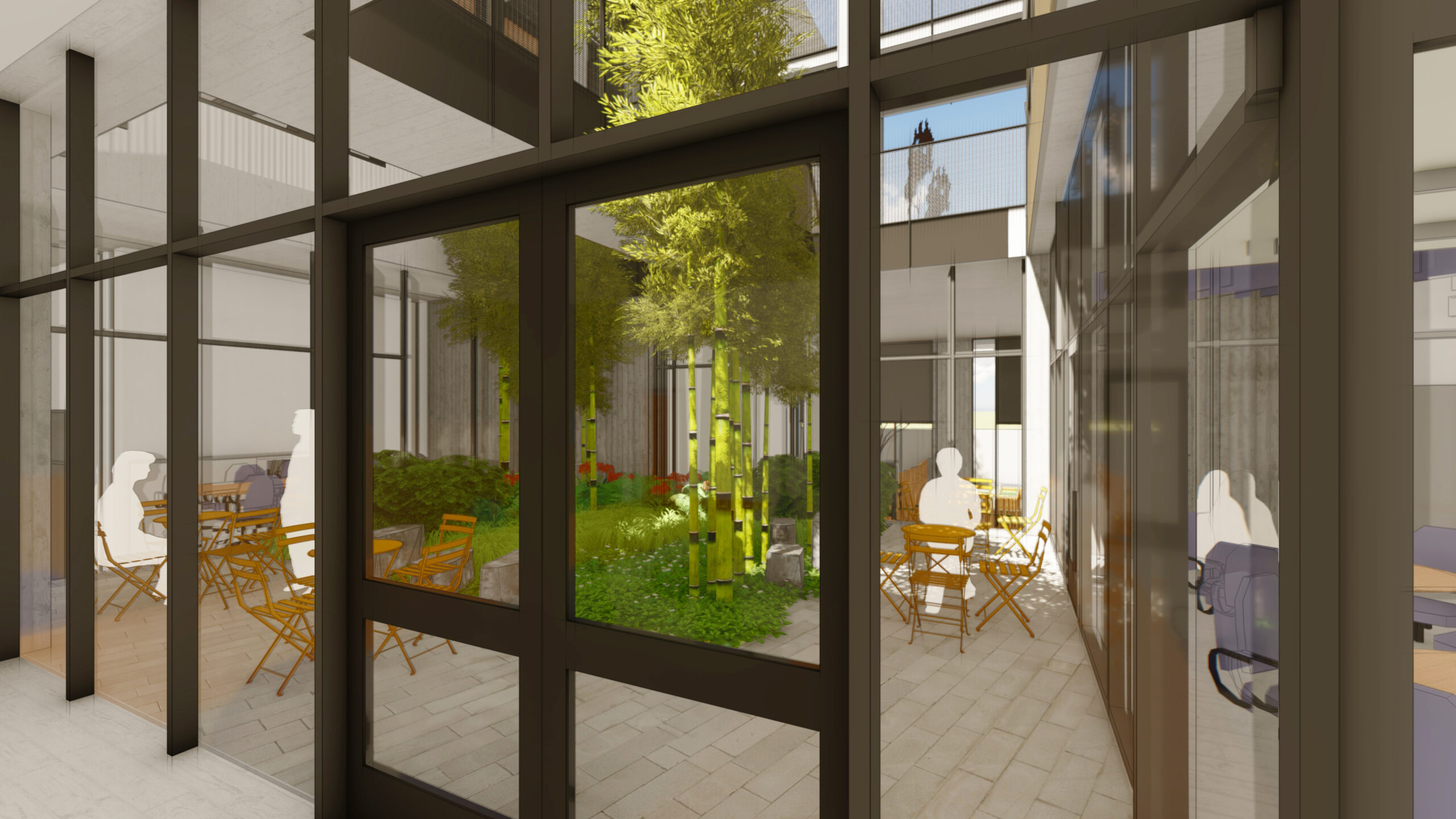
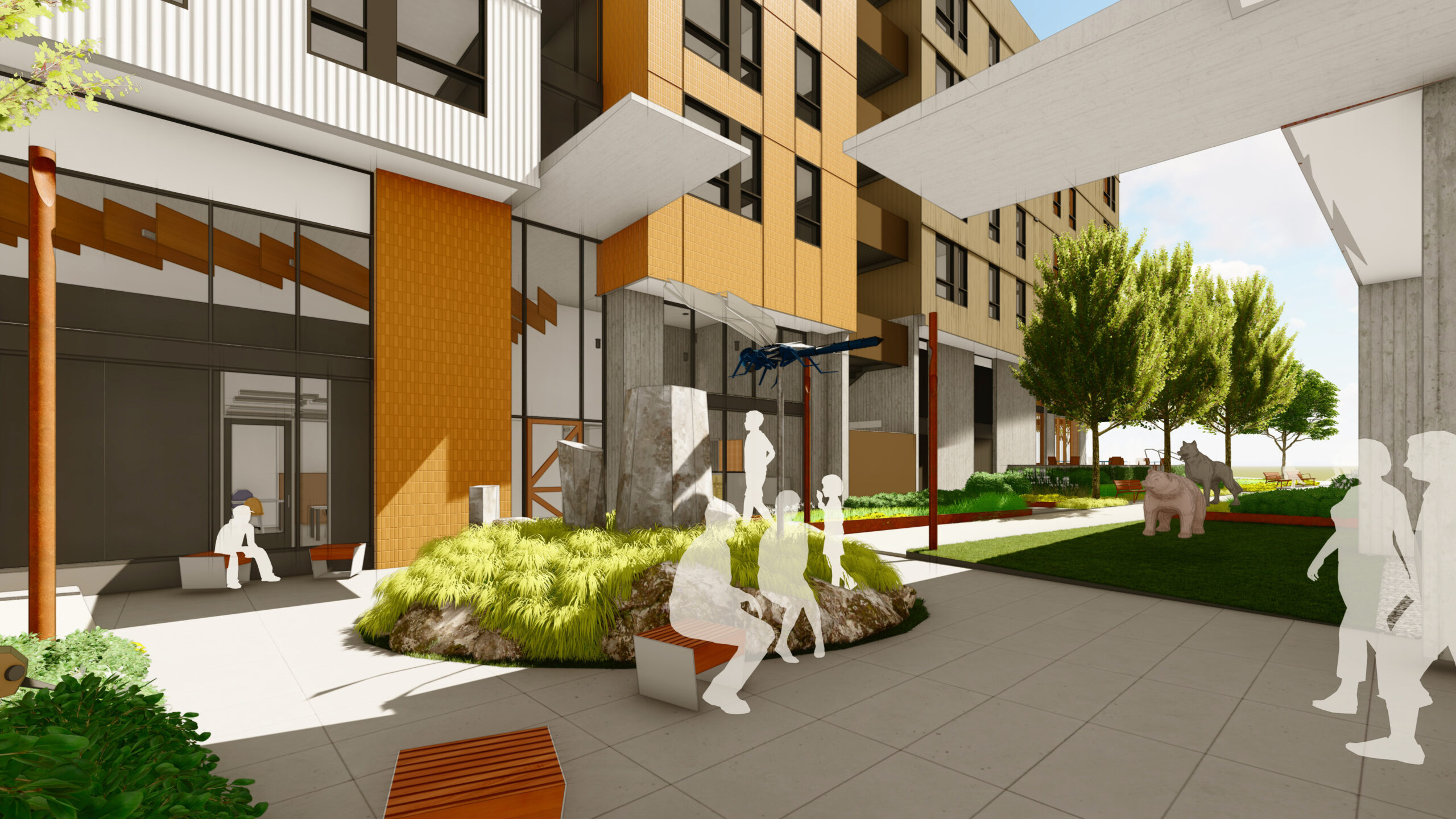
Outdoor Recreation
Games and dining areas are integrated into the surrounding landscape on multiple levels and the on-site child care has its own playful courtyard with carefully differentiated age groups occupying forest and meadow-themed play areas closely connected to the adjacent classrooms, cultivating an integrated creative environment for educational gardening, sand play, and imaginative partitions and furnishings to maximize cross-disciplinary learning and play. A ceiling of festoon lights brings down the scale of the space and radiate from a central column, while a new tree provides additional canopy and shade for this safe and stimulating learning space for toddlers.
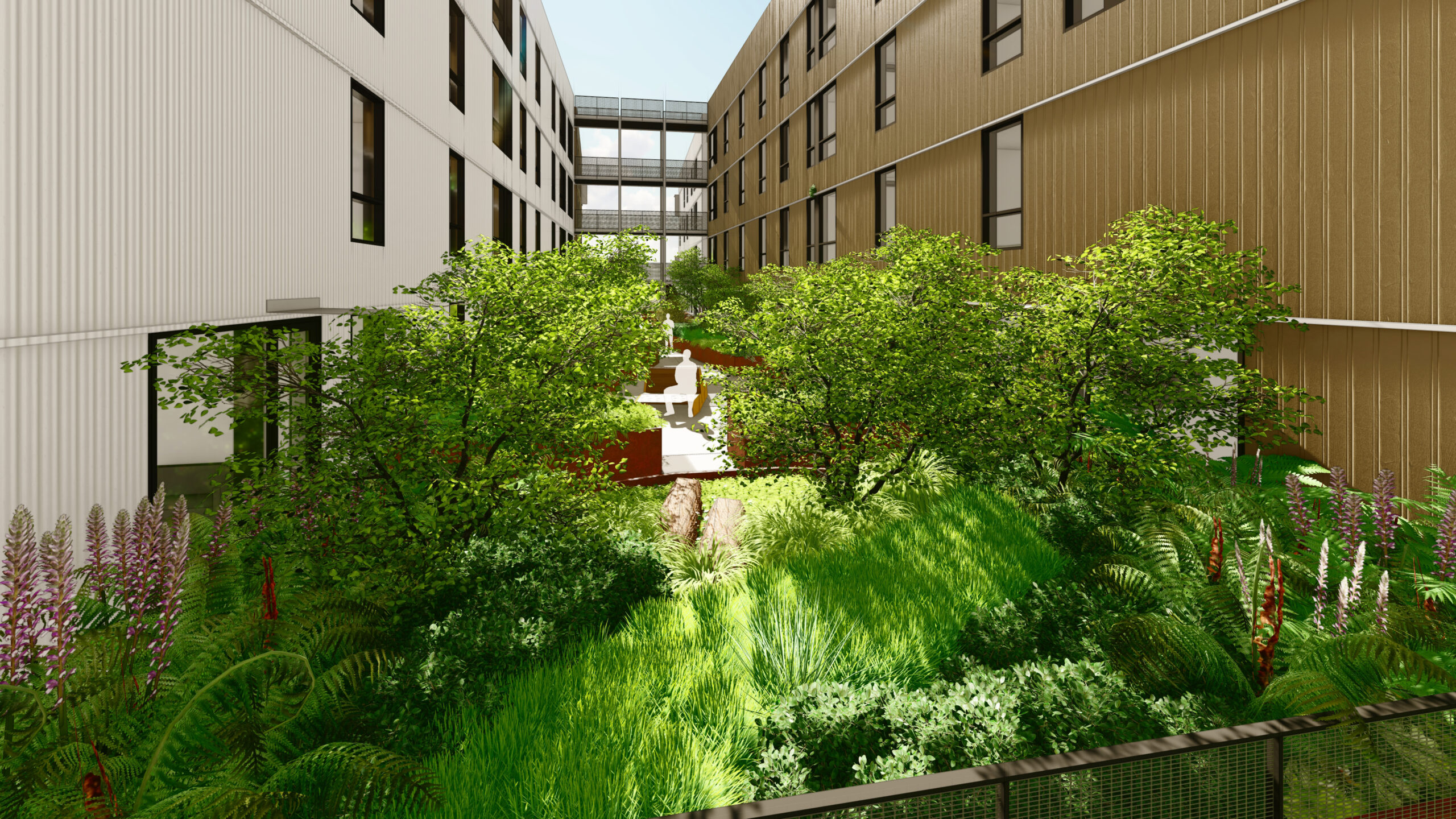
Sun Terrace
The south-facing upper terrace provides a warm and sheltered respite from the other more shaded court spaces and looks out over the street-edge plantings that surround the project maximizing porosity and groundwater recharge throughout the block of the 170-family unit housing complex. this space is furnished with picnic tables to accommodate family gatherings and celebrations.
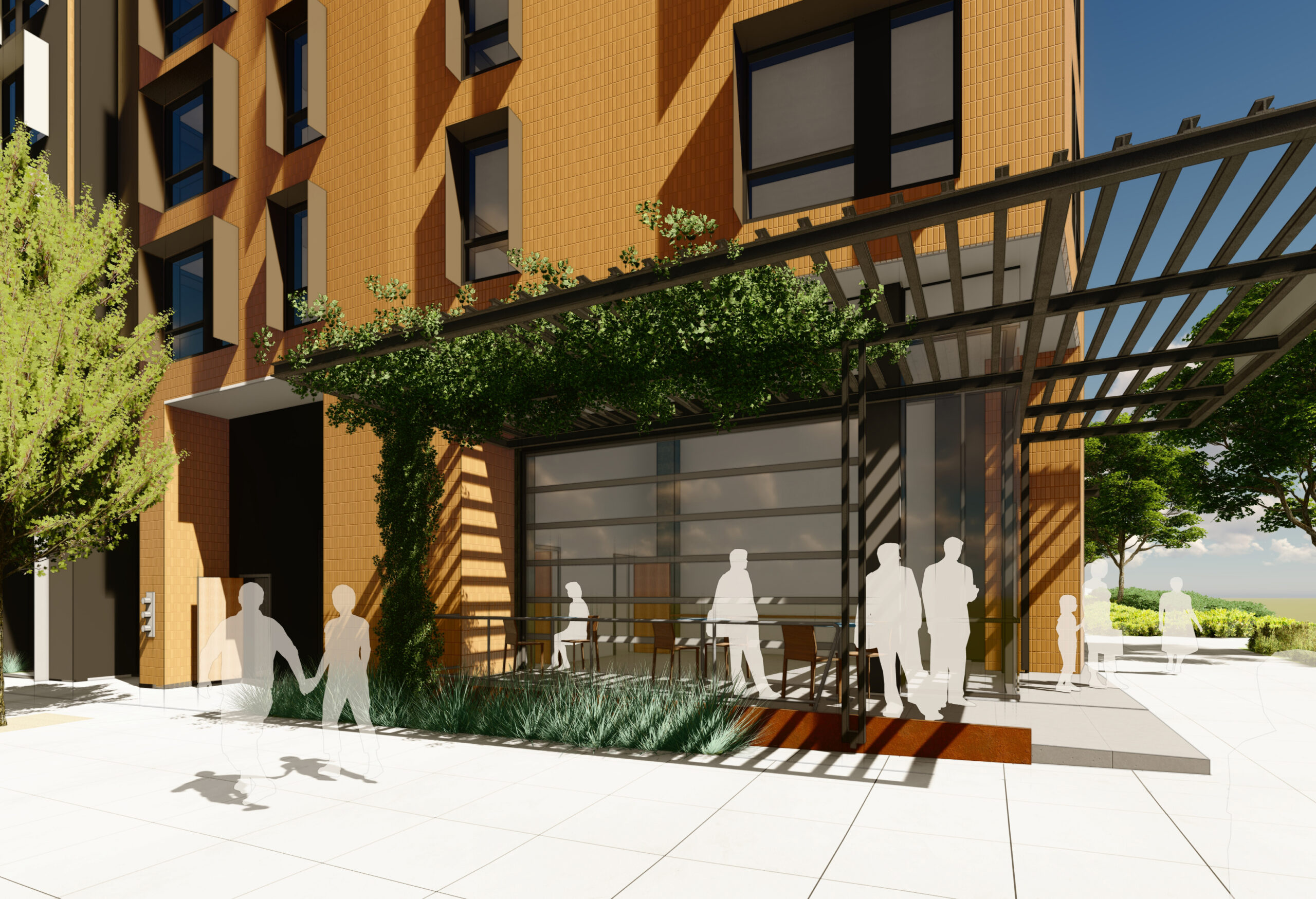
Location: Visitacion Valley, San Francisco, CA
Owner/Client: Related CA/ Mercy Housing/ David Baker Architects
Scope: Landscape Site Design, All Phases of Construction
Status: Under Construction
Project type: Landscape, Residential
Eichler Remodel
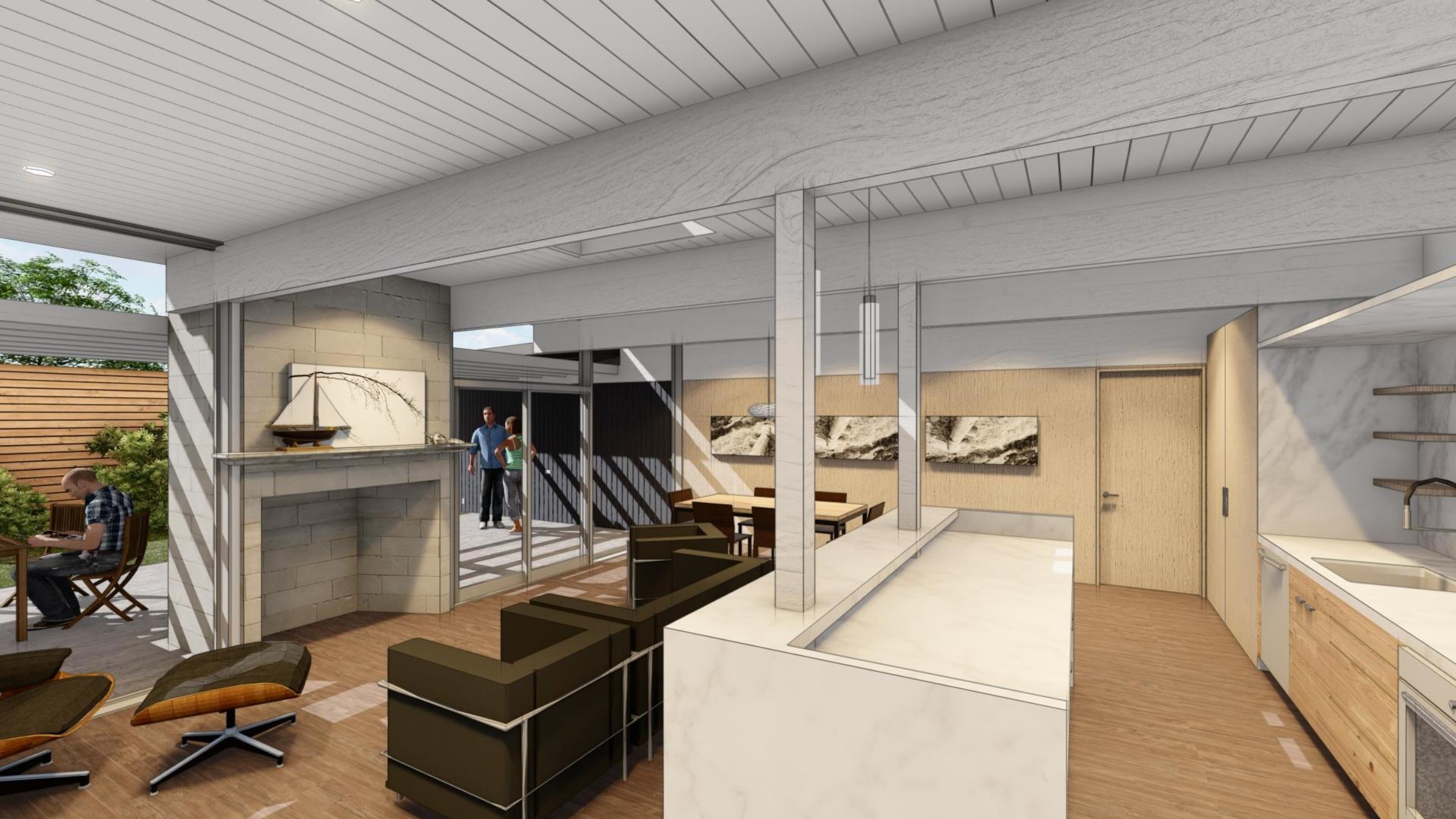
The Eichler Opportunity
At INTERSTICE we love California Modern’s deep tradition of open simplicity, fluidity of space, and clear elegant structure, that is perhaps best characterized by the design boom of post-war housing across the entire mid-century period during its expansionist development. Joseph Eichler, a prolific 20th century California developer inspired by modernist architects such as Richard Neutra and Frank Lloyd Wright, was able to bring quality affordable architecture to millions of Californian families. These ubiquitous single-family dwellings were more than just homes, they were a way of living; iconic designs that merged interiors with exteriors. They have become synonymous with the California lifestyle
Reversing the Sprawl
The suburban legacy these homes created was unfortunately a low-density “sprawl”, outwards from the metropolitan areas, and with them came extended infrastructure and new roadways in an outward dispersal of resources and energy, but that may not be the end of the story. … Due to their simple open and elegant structure, clear core to peripheral planning, and expansive open-glazed spans – they are also easily converted and expanded. INTERSTICE was asked to tackle the Eichler in the Marin County suburbs and found an opportunity to leverage new ADU legislation and state tax incentives to help turn around the negative legacy of sprawl and densify the suburbs one Eichler at a time.
Case Study E-1
Our first Eichler became a Case Study for our team (“Eichler#1”), for us to see what opportunities there were for this classic California building typology. The owner’s young family was evolving. They hoped to modernize and renovate over the next ten years, as children grew and matured, aging parents needed support, and extra room and revenue became paramount. We realized this larger home could serve more than just one purpose. Through good design it could be made better: more flexible, more functional, and intensified to serve these new 21st-century needs.
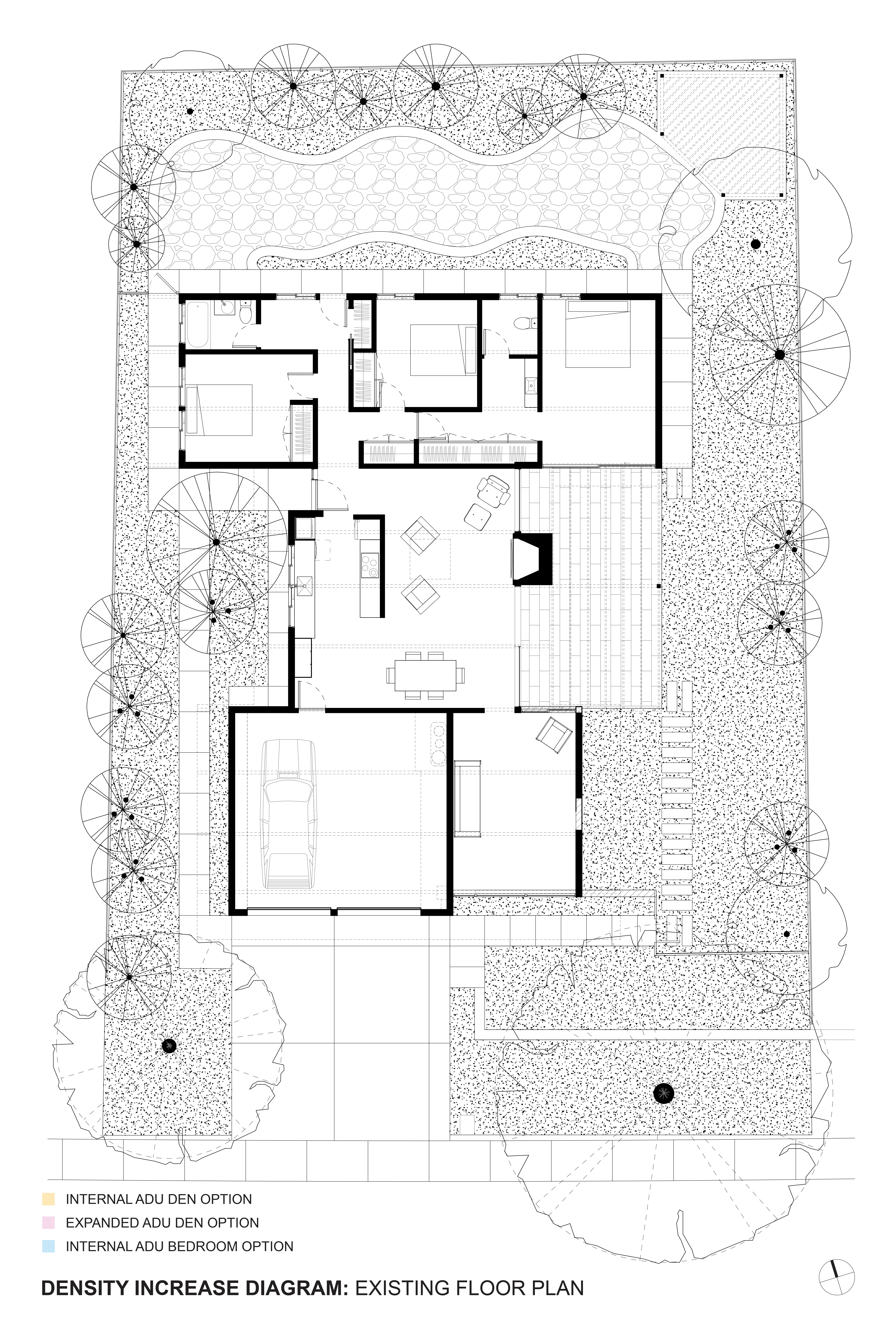
Fractal Living
Looking at the spiral unfolding from public to private space typical of the Eichler plan disposition, from garage and entry, the home naturally moves from the most public of spaces at its core, towards more and more private spaces. We discovered these outer areas to be fractal-like in their ability to become new “accessory micro-dwelling units” in their own right. Keeping the material palette simple and circulation to a minimum, extra bedrooms and dens become new semi-detached homes, designed with direct access to private exterior space; now designed to be completely functionally independent from the original Core Main Home.
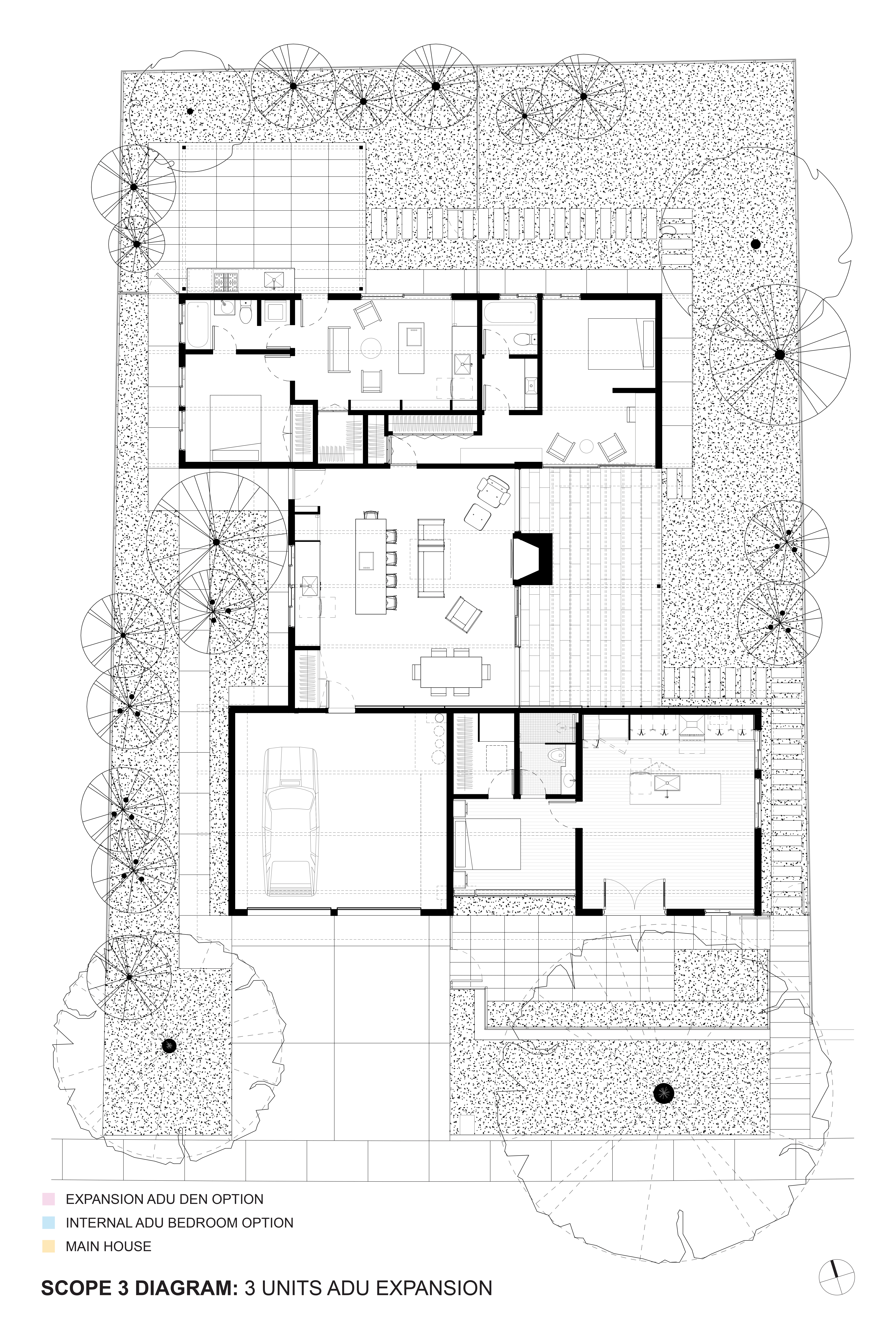
What Was One – Is Now Three
The three-bedroom home with den is Converted in Phase 1: To a 1-bedroom ADU + 3-bedroom main home. Phase 2: Creates a second 1-bedroom ADU bracketing the original now 1-bedroom main home. All 3 homes have their private entry, associated yards, and access to a shared garage with a central workshop and off-street storage. The once “Single-family Home” becomes a three, smaller home community, all on the same site, with minimum investment, and little to no expansion to the envelope. With the first phase complete, and the new exterior kitchen installed Phase 2 is that much closer to realization in the next five years. An affordable conversion that triples the density of each parcel without consuming more land or resources. We see it as an Eichler win-win.
Main House:
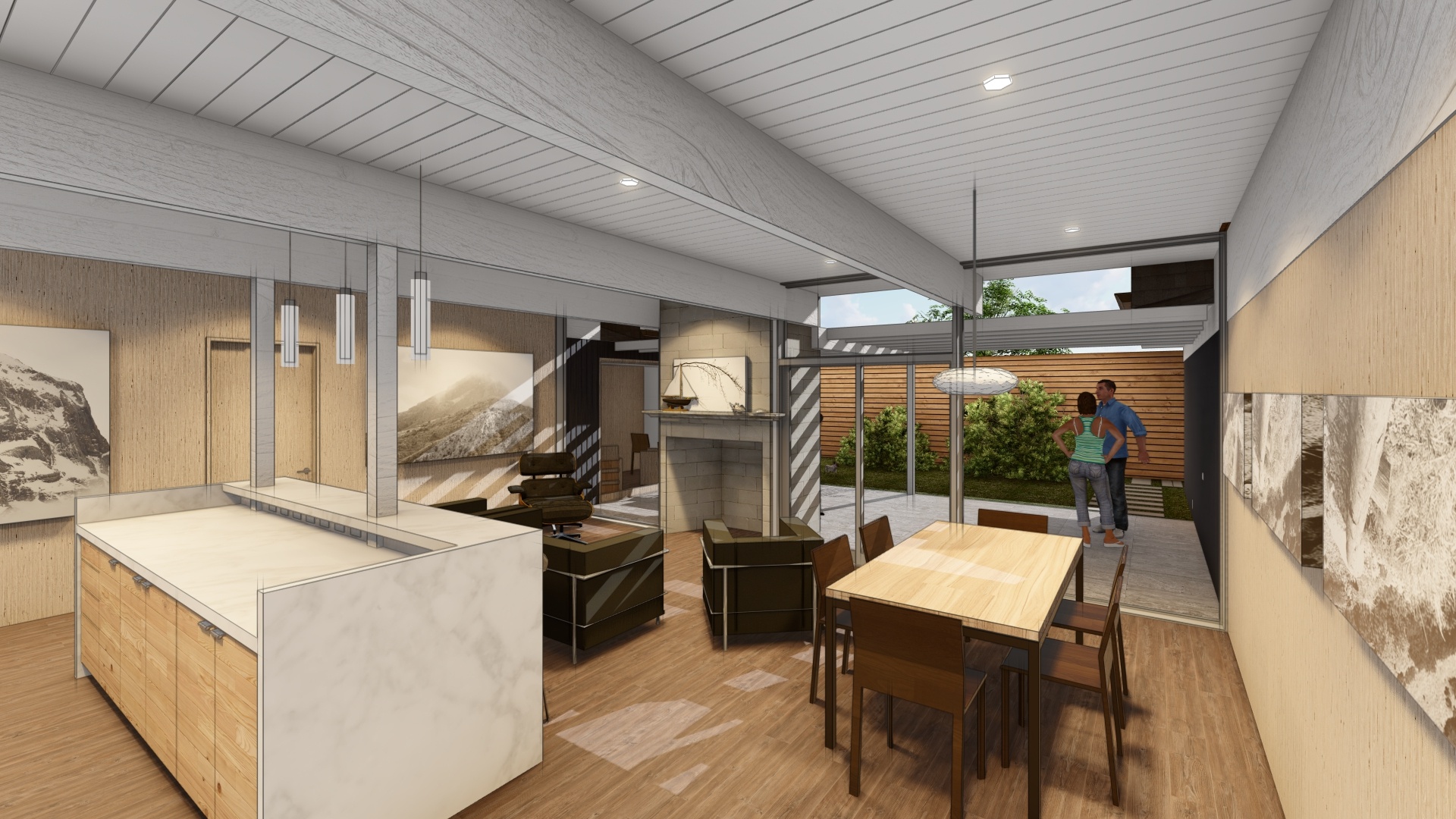
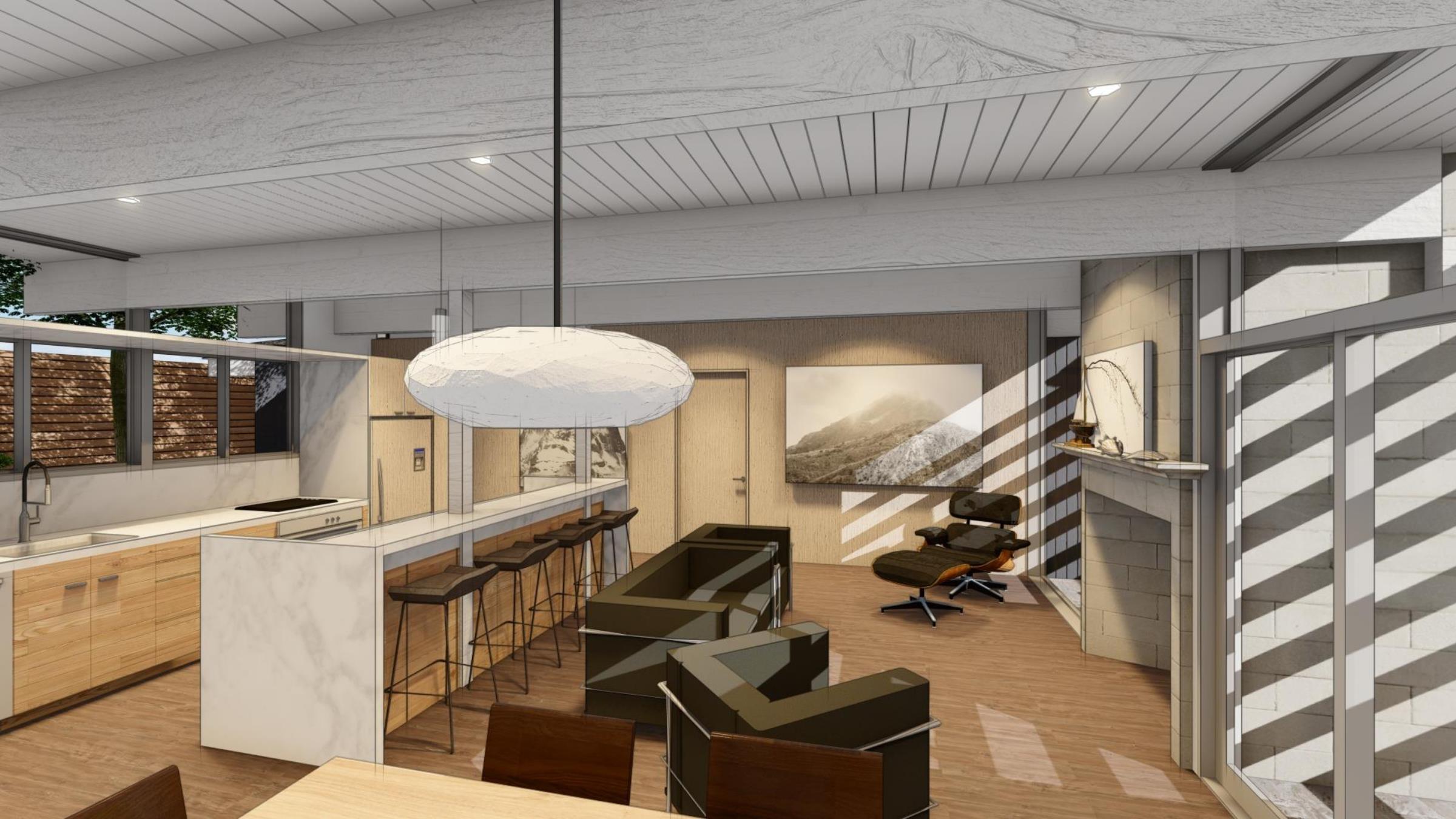
Exterior Views:
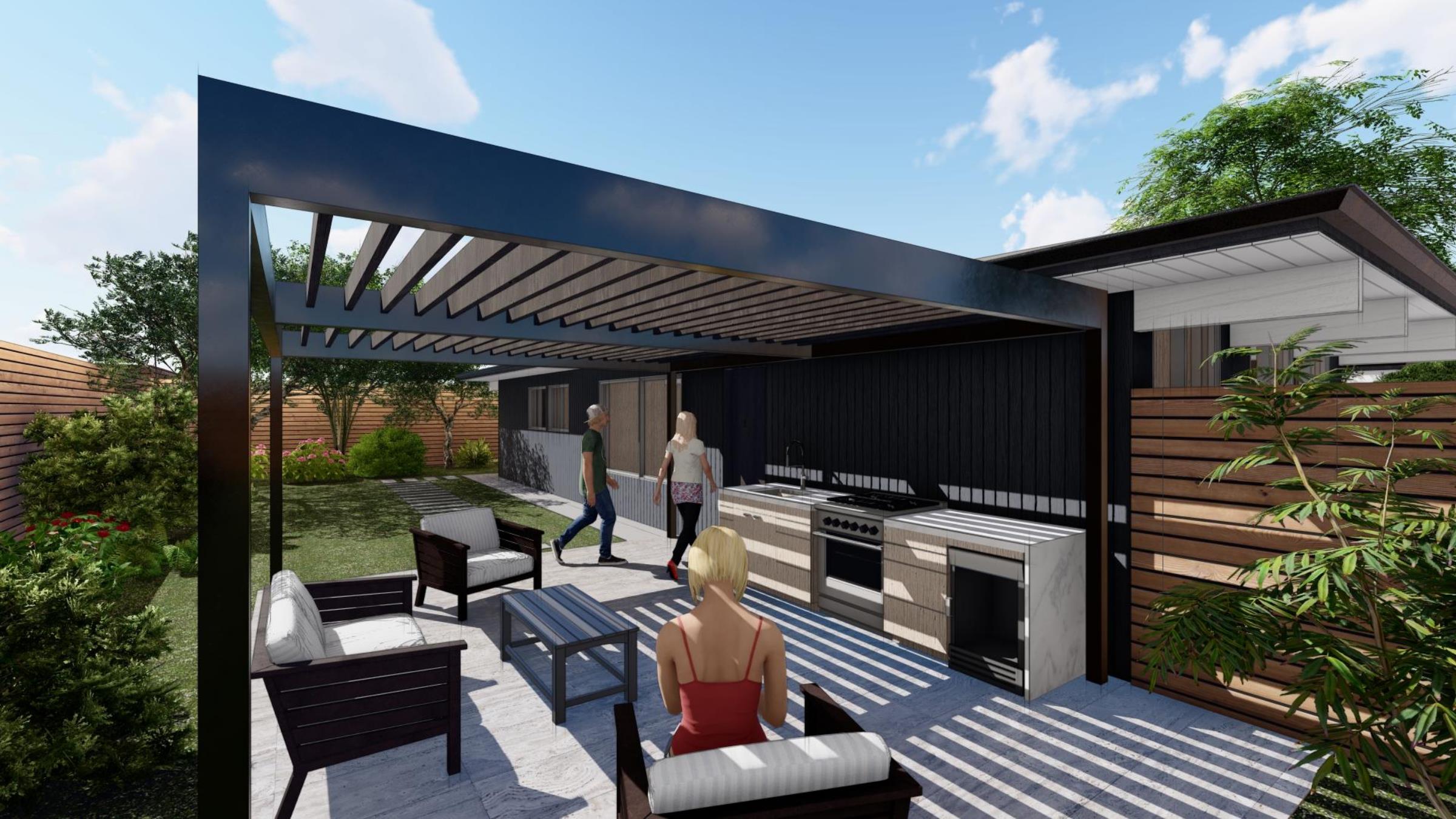
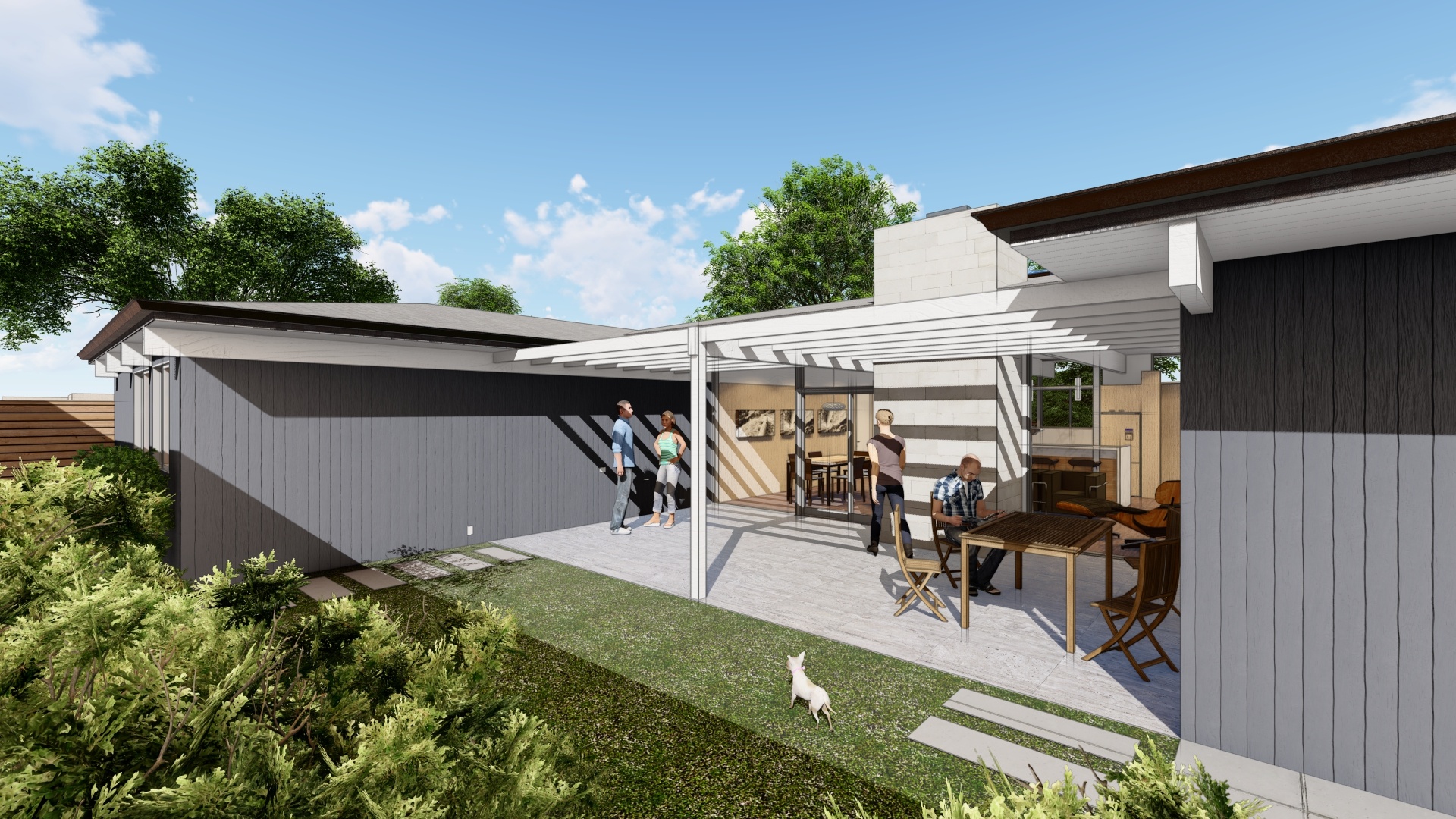
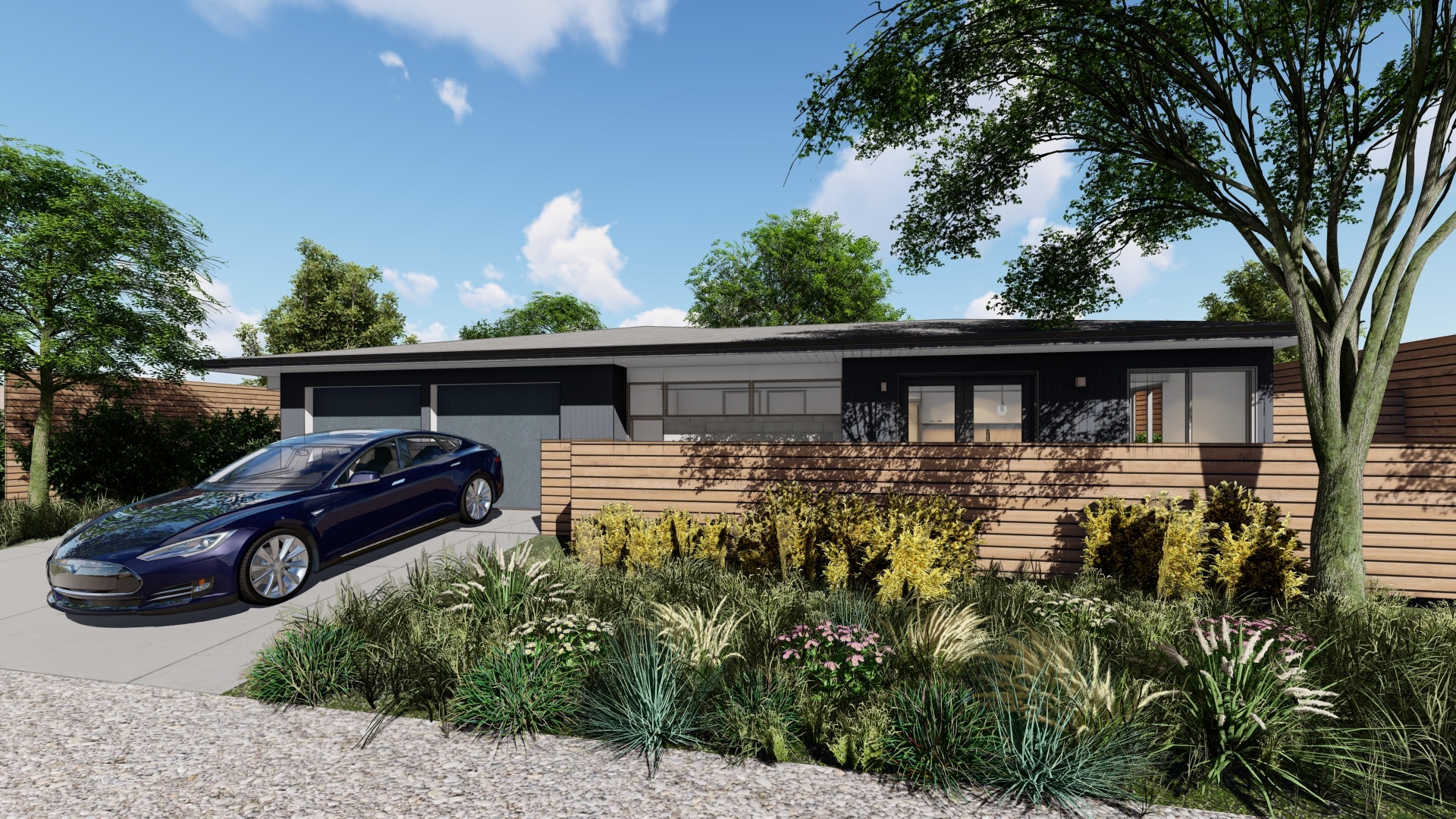
Accessory Dwelling Unit:
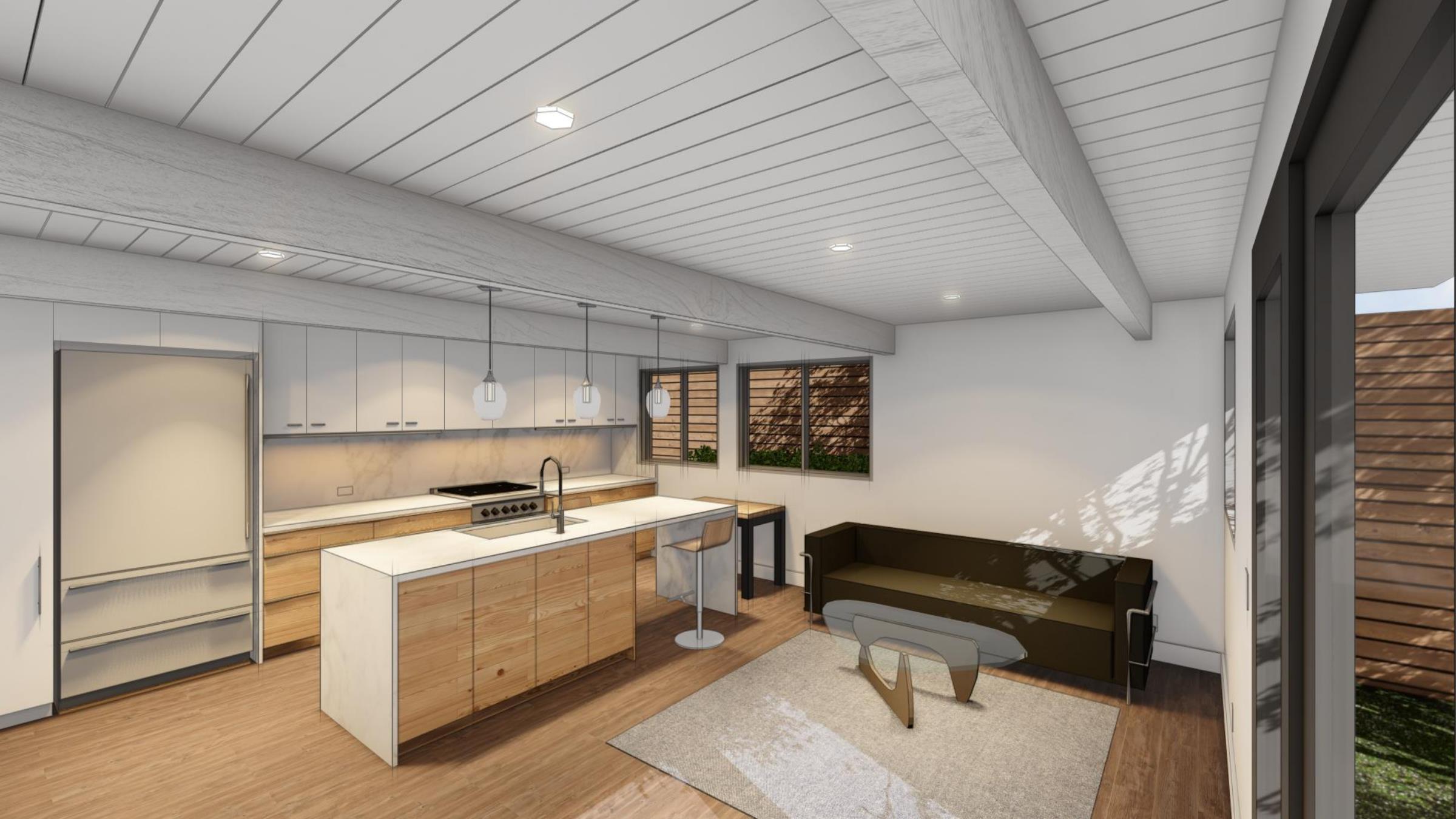
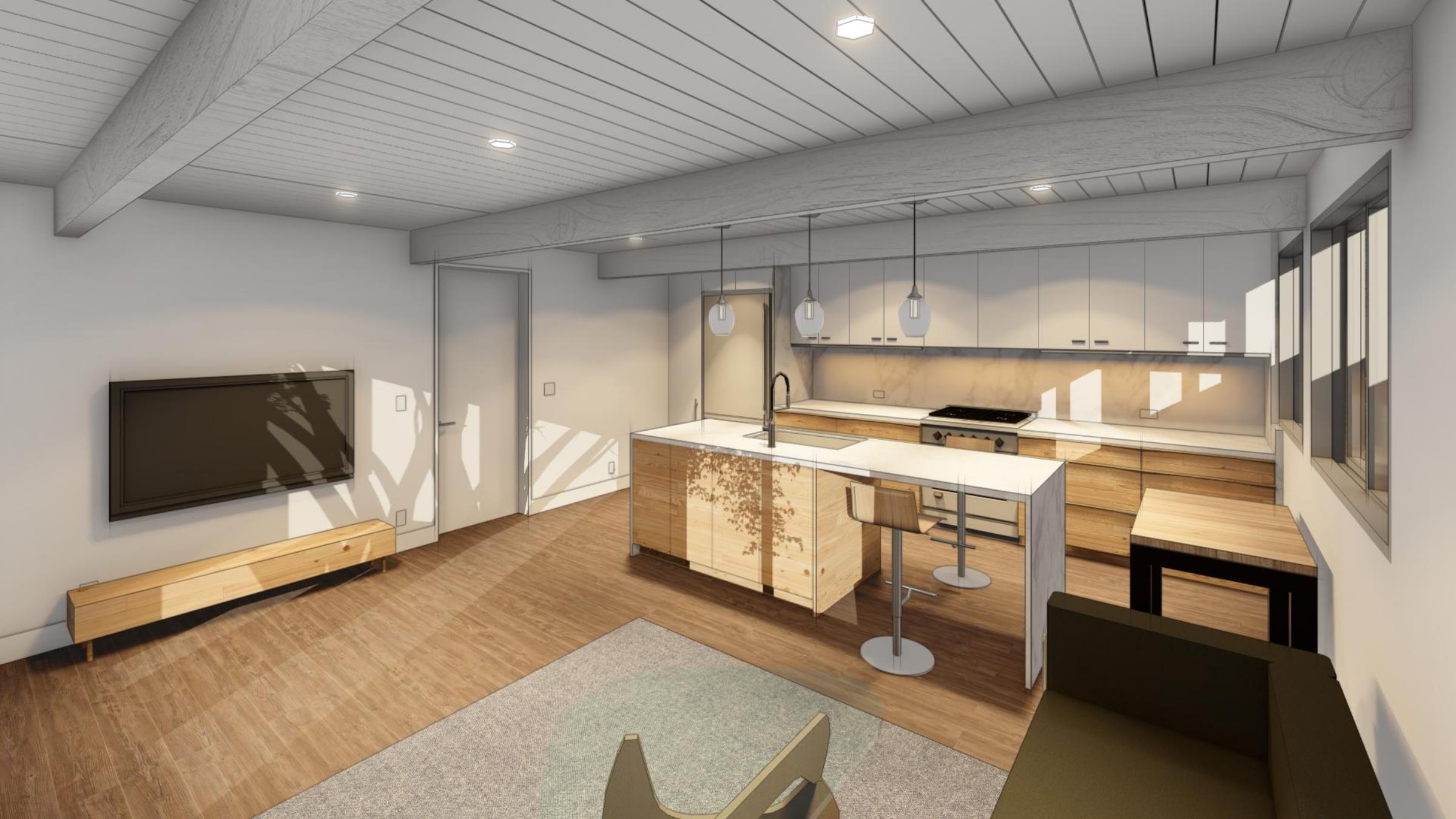
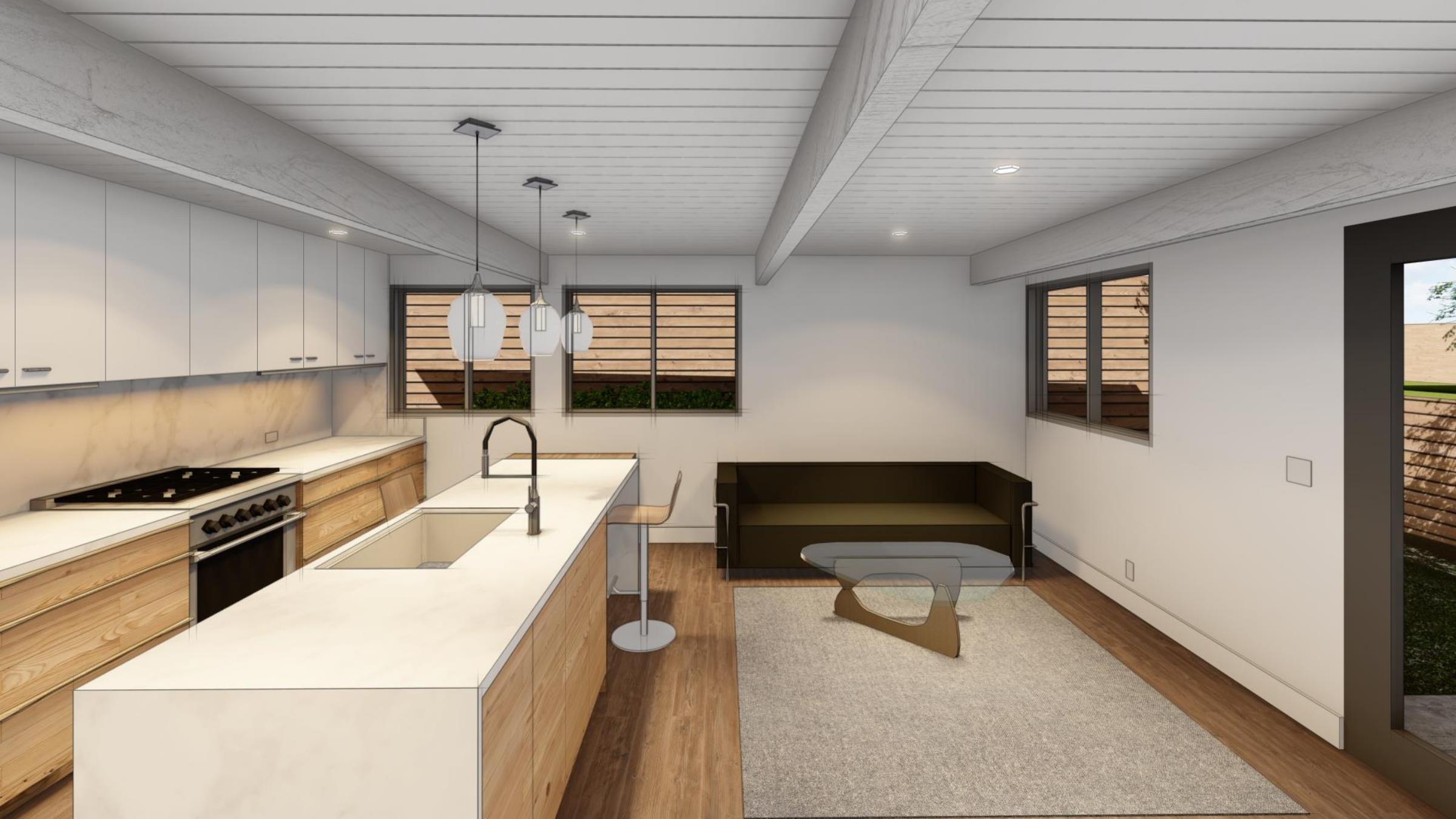
Forestville Family Retreat
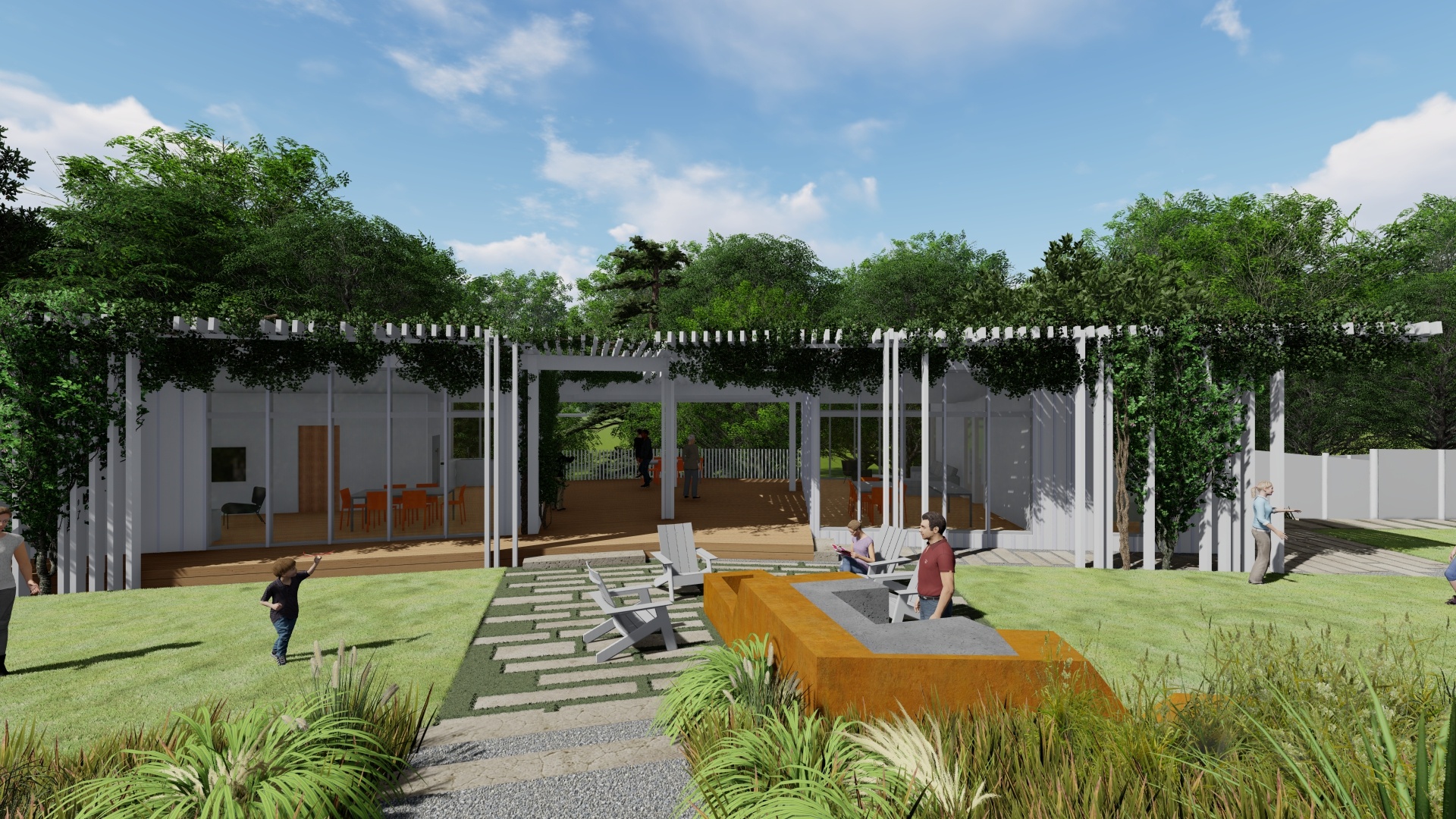
Shared Tiny Homes
The family wanted two “tiny” super-space efficient houses connected by a shared shade trellis roof that spans between the two structures. One structure would have the communal kitchen and interior dining while the other the shared living room – which both face inward toward the shaded vine-screened “Porch” allowing the interiors to expand between the units – to create a large exterior open program space.
A Grounded Perch
The guest house and primary dwelling are designed to be closely connected to the steeply sloping landscape with its north side porch at grade with the upslope patio; while its river-facing edge to the south looks into the riparian tree canopy. From this elevated cantilever, over the drive below, the west deck descends as a cascading porch; half sculpture half-giant furnishing it conceals the lower carport entry under the westernmost structure.

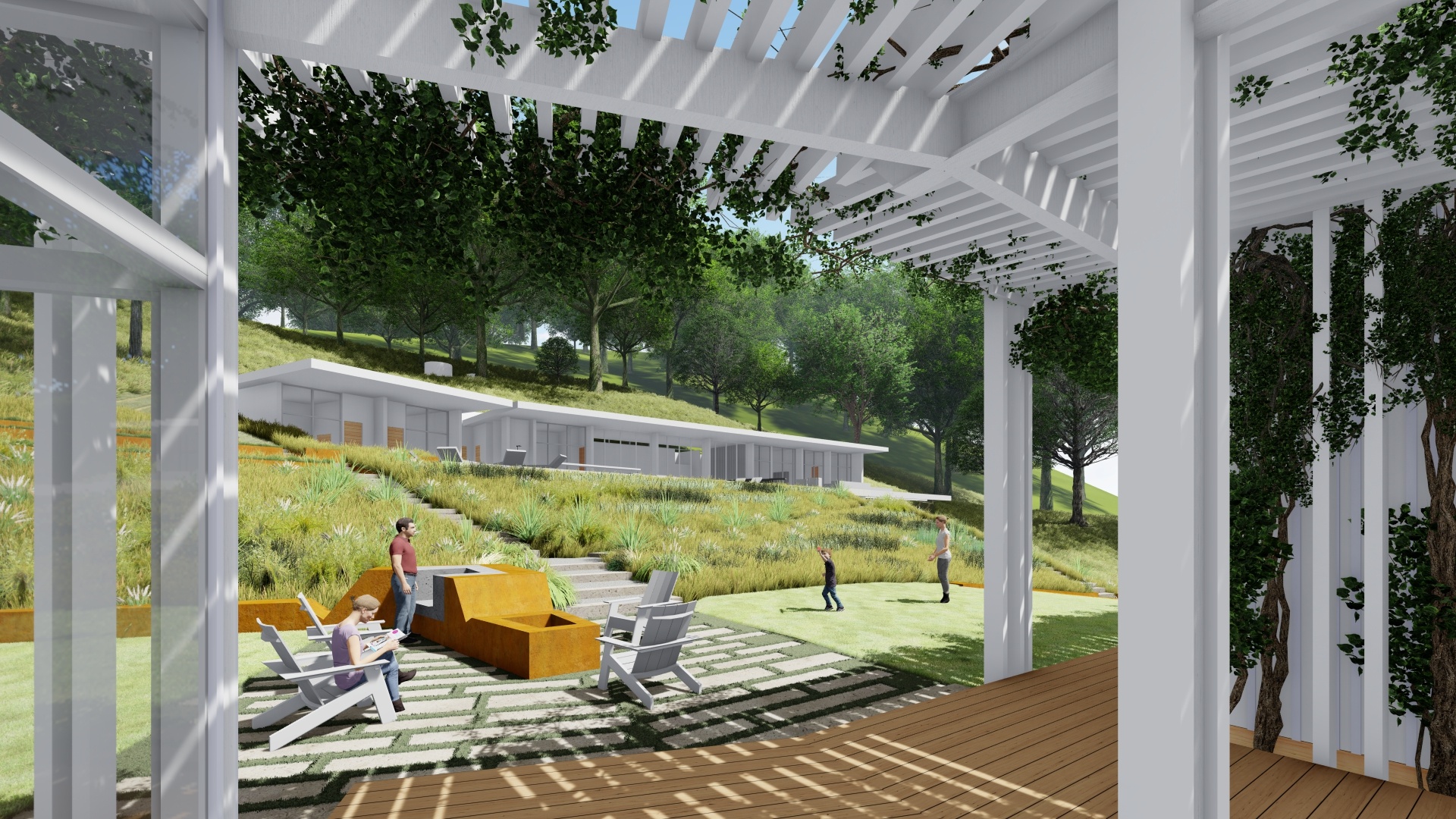
A Gathering Form
On the uphill side, the ground forms a naturally protected valley between the orchard slopes above, and the dwelling. Here the fire pit and outdoor cooking bench retain the hill edge and provide a social center for the home with room to play and gather – passing through the shady porch which looks out over the seasonally fluctuating riverway below.
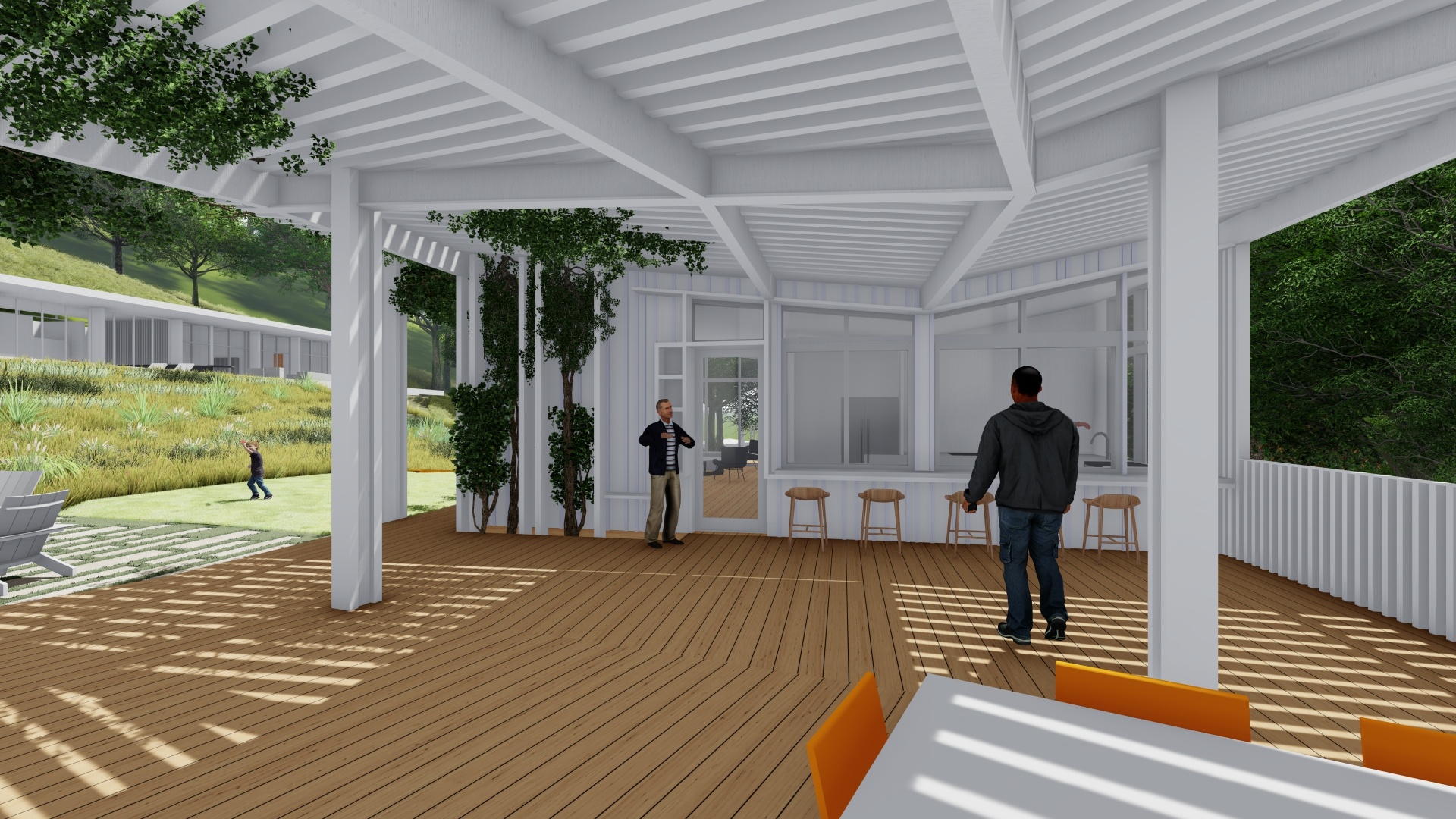
Folded Canopy
The roof is flexed and folded to look out upwards on both sides. Looking over the river’s southern high opposite ridge on one side and deflecting up toward the open hillside views to the east where hardwoods and meadows provide space for sunnier activities, like gardening, and games in the newly planted orchards and oak stands that will grow to meander up the southern facing slopes.
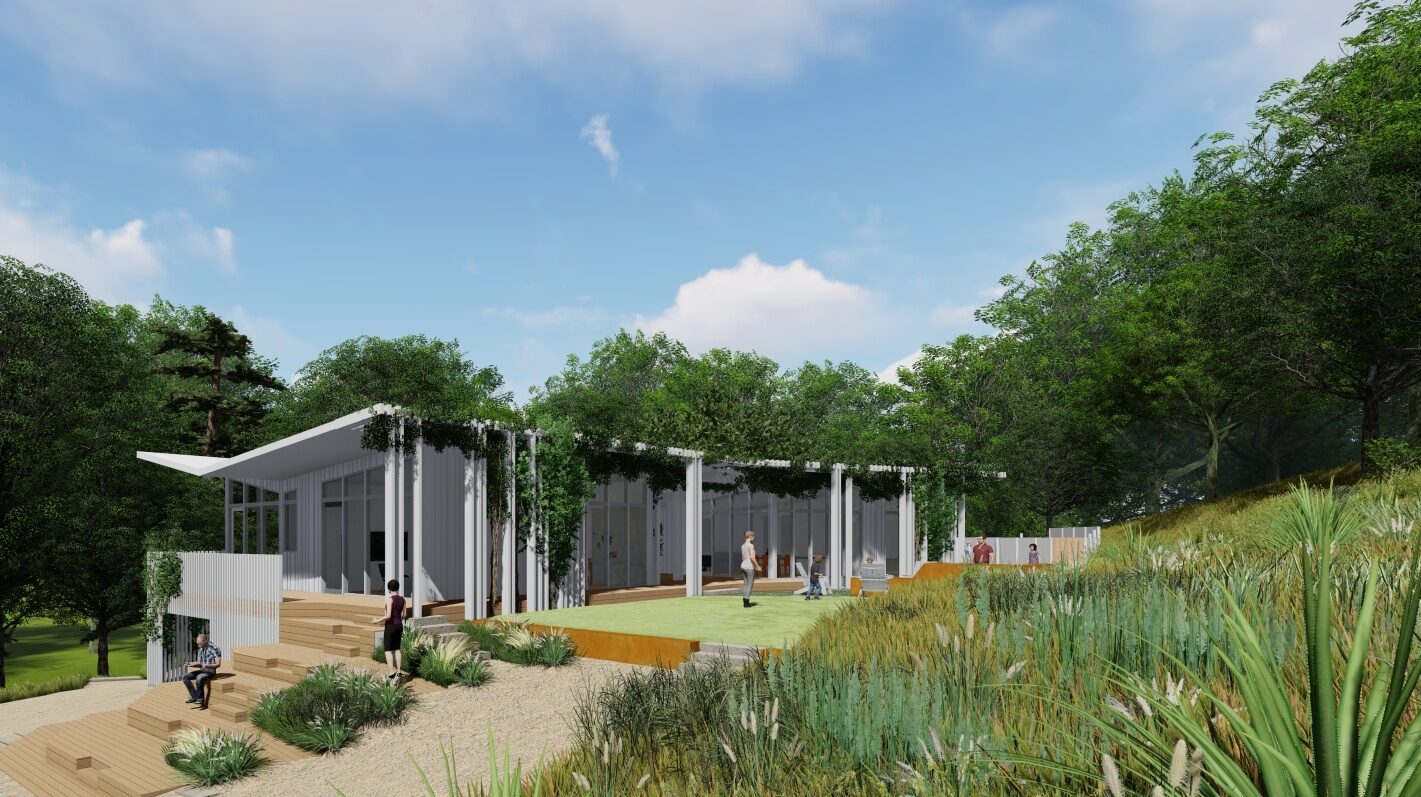
A Stone to Fire
The home is fireproof. With a Metal Roof and Clad in strips of fiber-cement board & bat that open and spread to become trellised vine supports for grape-vines the home is a perfect Sonoma Valley host for grapes to spread up and over between – like a filigree of stone this pale lacework of mineral screens glass from sun, forms guardrails, roof soffits and protects walls while integrating its permanent and maintenance-free fingers into the landscape to blend with the greenery that surrounds it.
Location:
Owner/Client:
Scope:
Status:
Ashbury Terrace Home
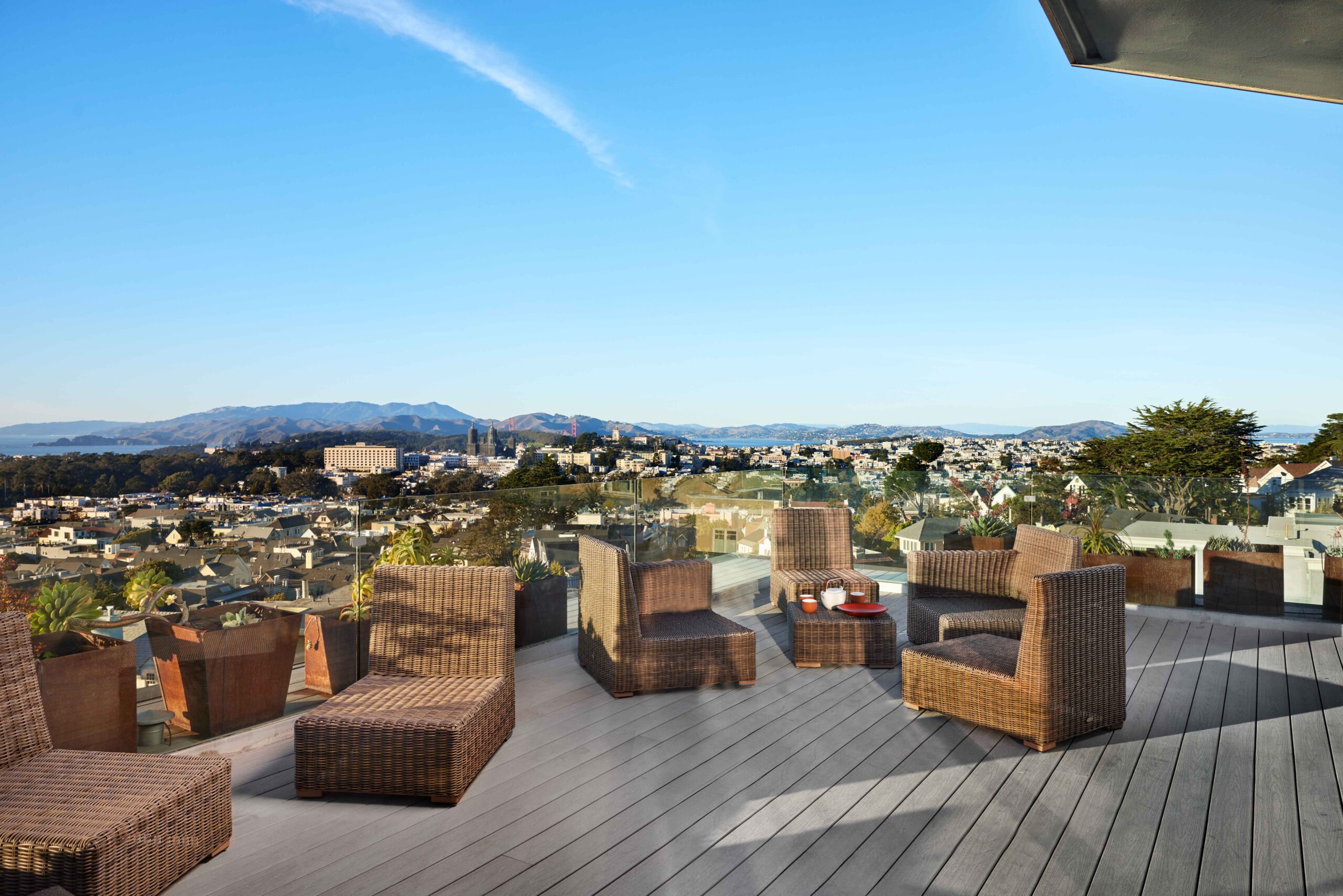
A High Home
This Home in the heart of the City commands a spectacular view of the sweeping bay, framed by San Francisco’s seven hills. The Original early period home was very closed in, and chopped up inside, with low windows and an oppressively hierarchical circulation (borrowing from the hegemony of bygone servant eras) – unbecoming of such an opportune site in the northern California Climate so INTERSTICE was hired to transform the home in collaboration with its enlightened new owners.
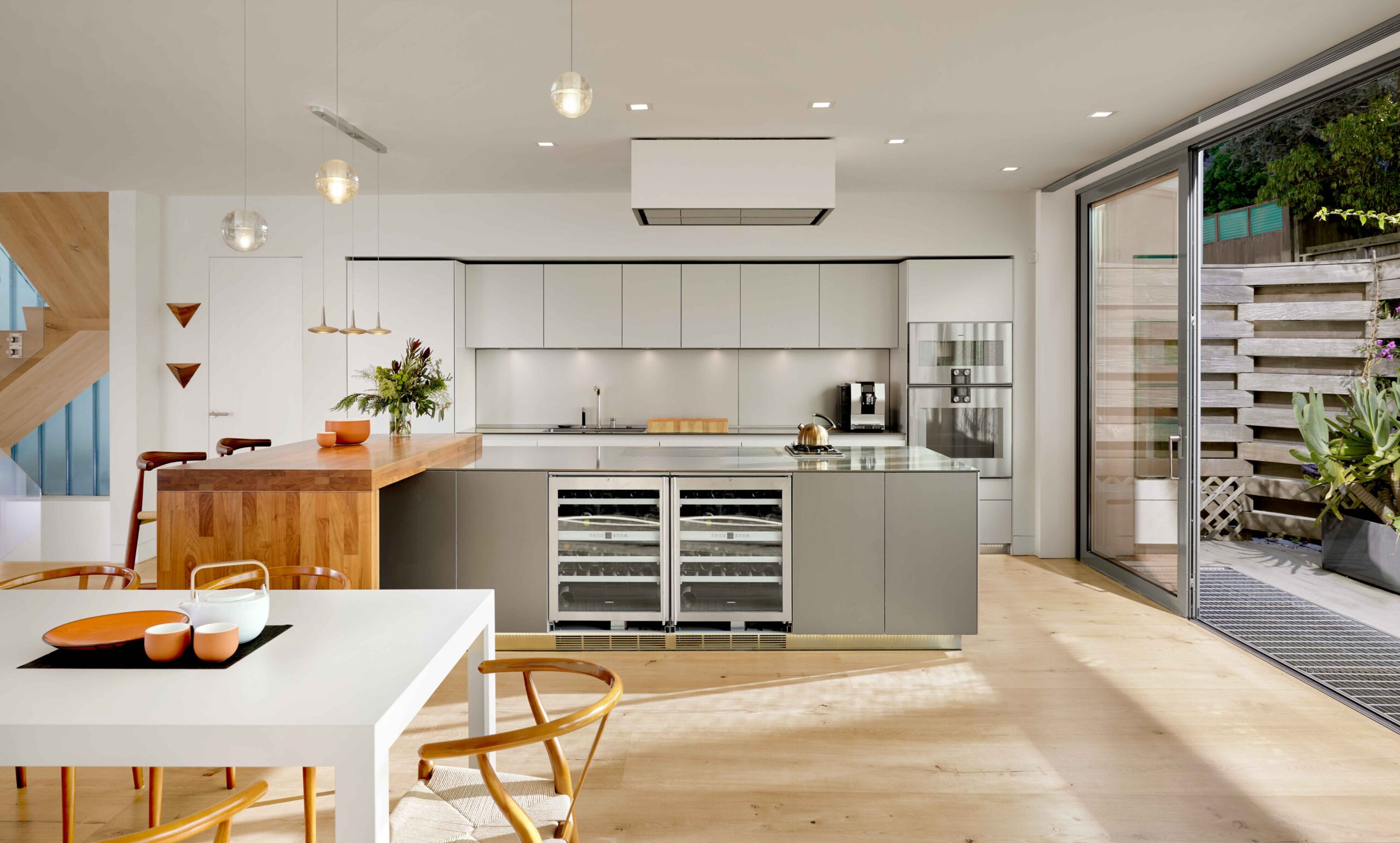
Metamorphosis of Space
Its lower floor was a buried basement and unused space that further called for a total landscape and architectural reconfiguration: bedrooms were added, bathrooms and all the floors were gutted to start over. A vast seismic overhaul allowed us to open up the structure to create a flowing “Raumplan” that tied the sunny rear South-West paseo entry and new patio sitting areas into the kitchen, all the way through to the 70 mm Dolby-Stereo view to the North West across dining and living rooms all connected to the vista.
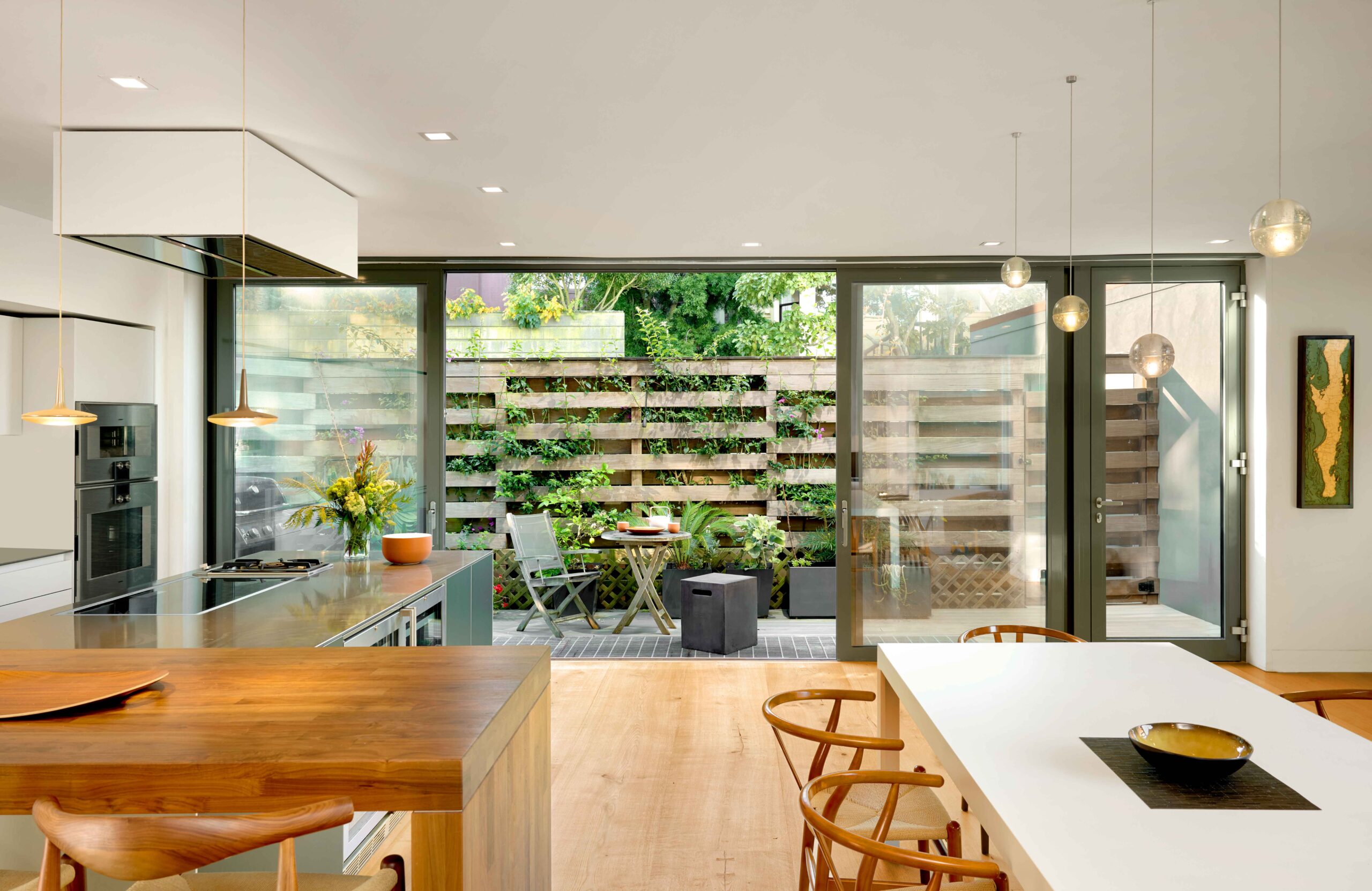
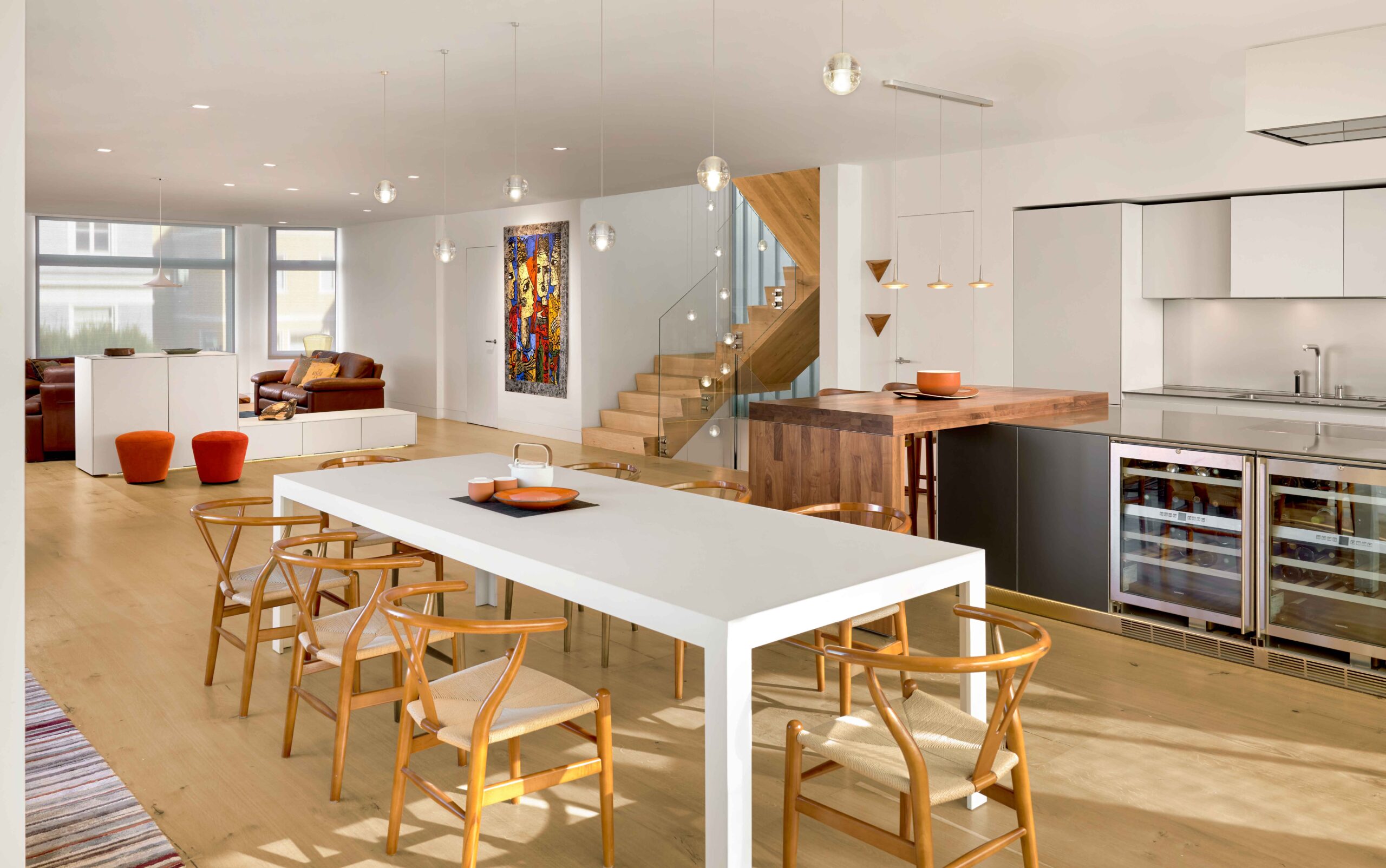
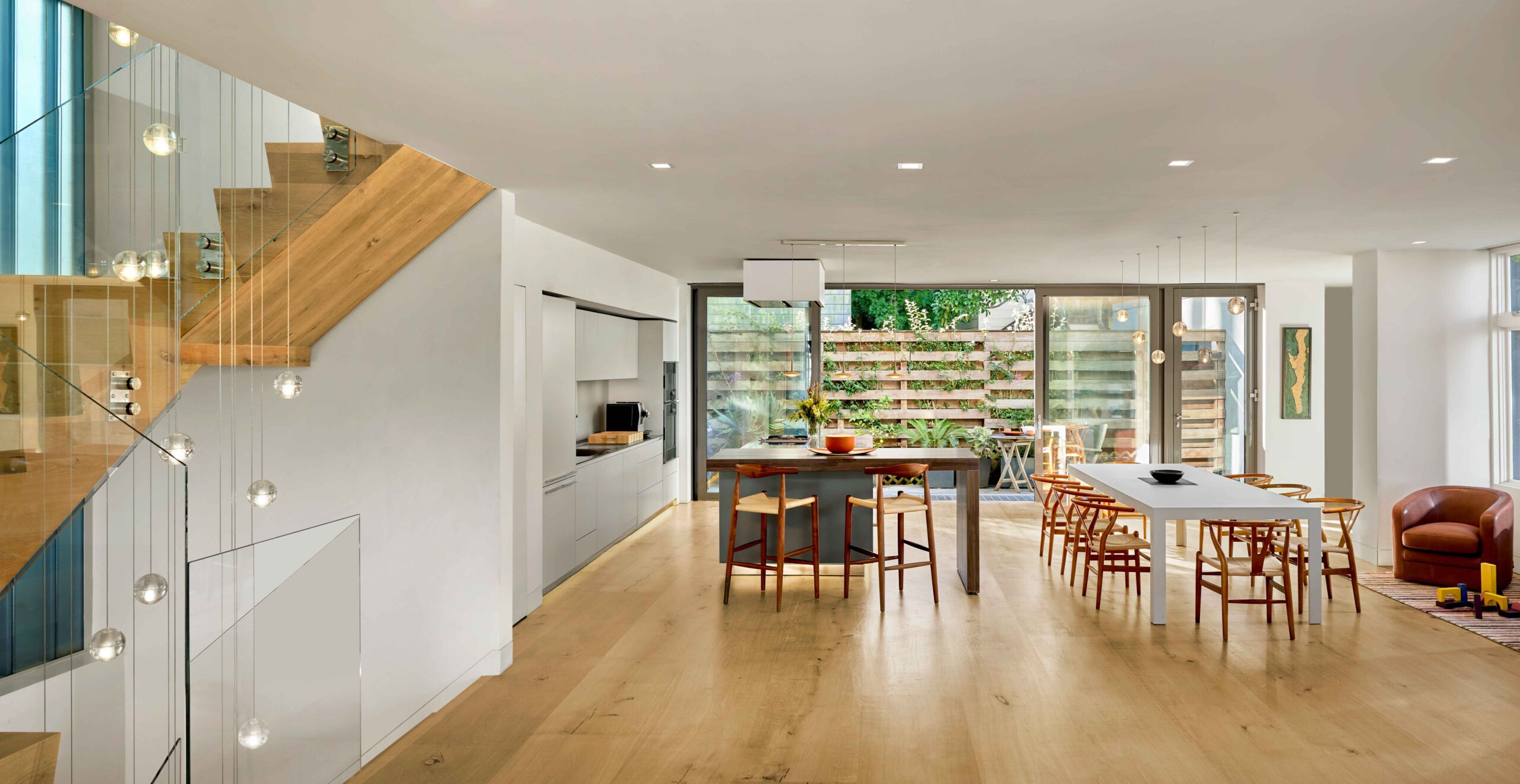
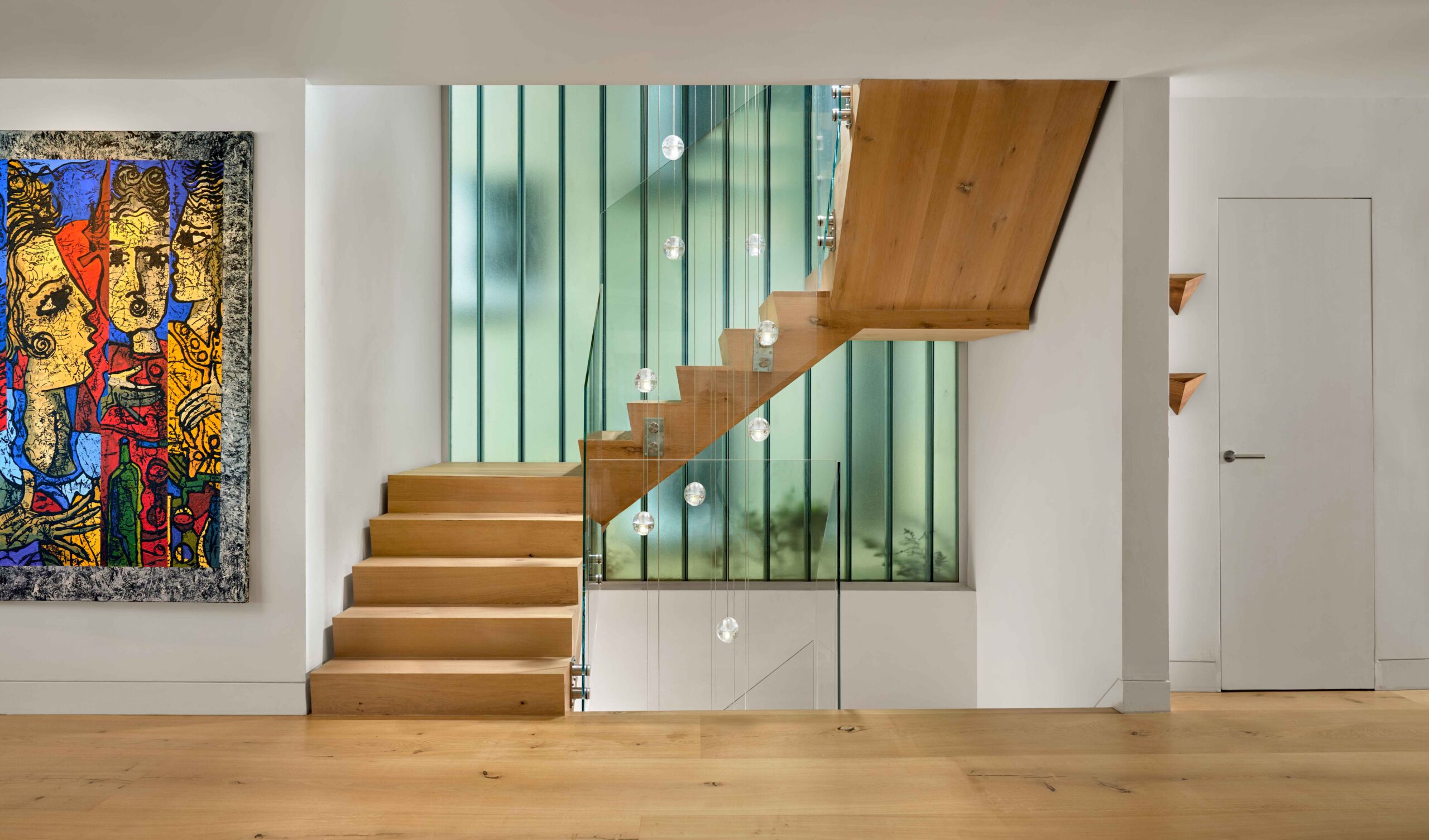
A Tower of Sunlight
A new central stair was carved from the side of the structure. Clad in fluted channel glass ‘beams’ it creates a vertical sculpture of a solid wood monolith spiraling through a tower of light from the roof deck into the wine cellar and cozy sitting rooms that share the lower private family garden level. Bathrooms with Italian floor-to-ceiling single porcelain sheet tiles, and European solid wide plank floors, help to simplify surfaces, and allow the rooms to breathe in light and float on the soft warmth of natural materials on all three levels.
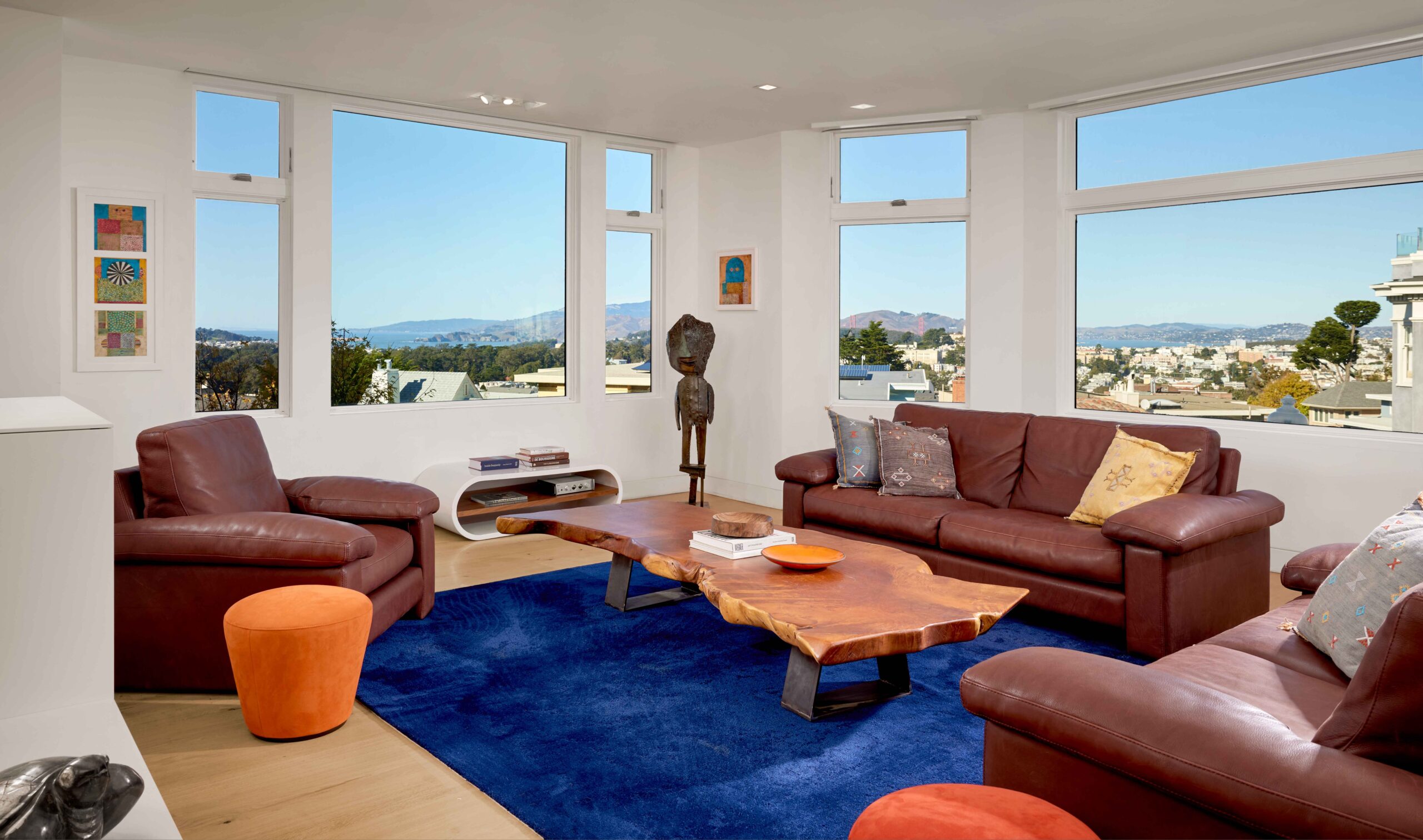

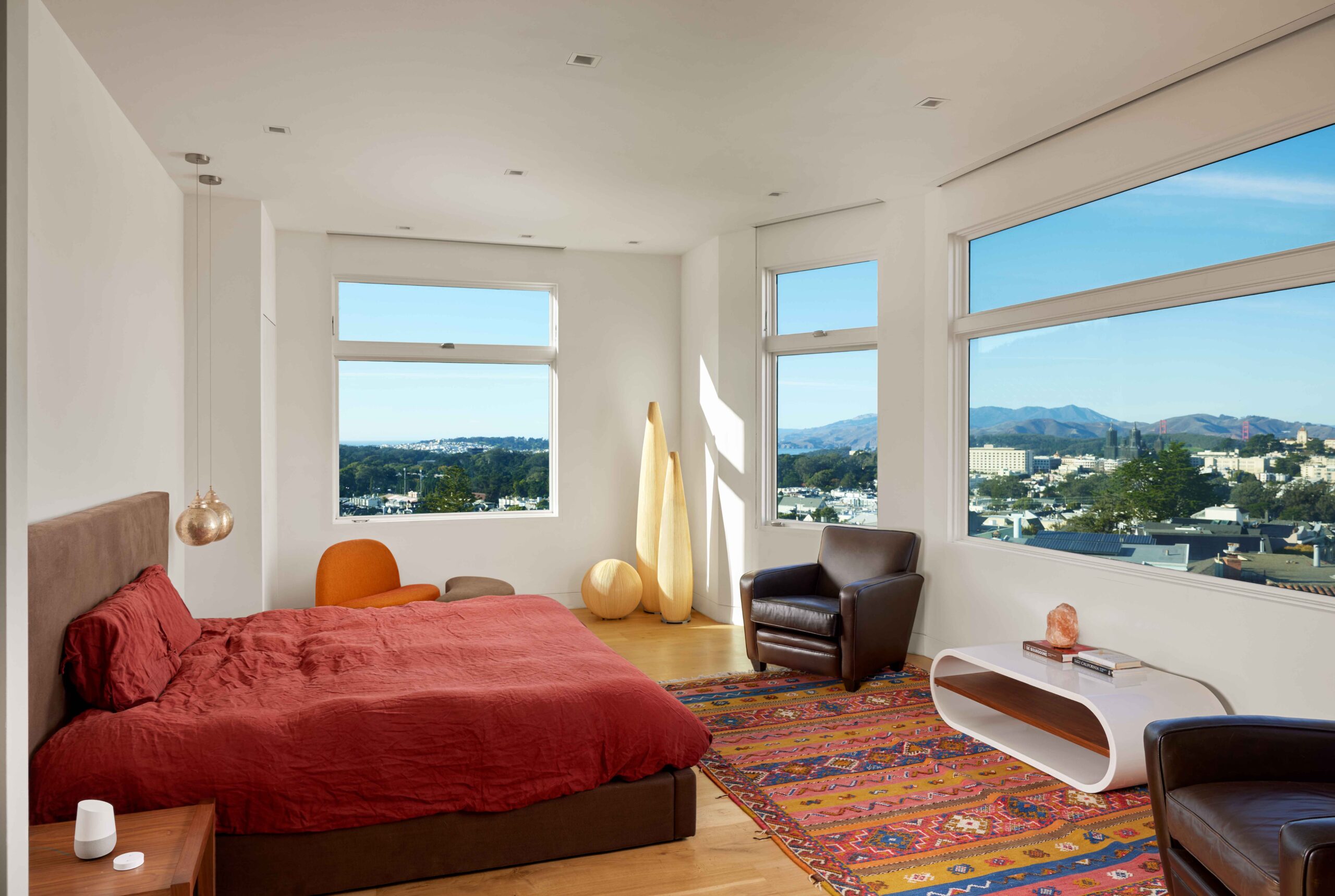
A Garden Lot
The Garden wraps the home in this generous lot and connects through large French doors to the lower level connecting bedrooms and family rec-rooms to the exterior play area at the lowest level where the hanging glass droplets of light end their cascade from the rooftop atrium down through pine of the new modern home.
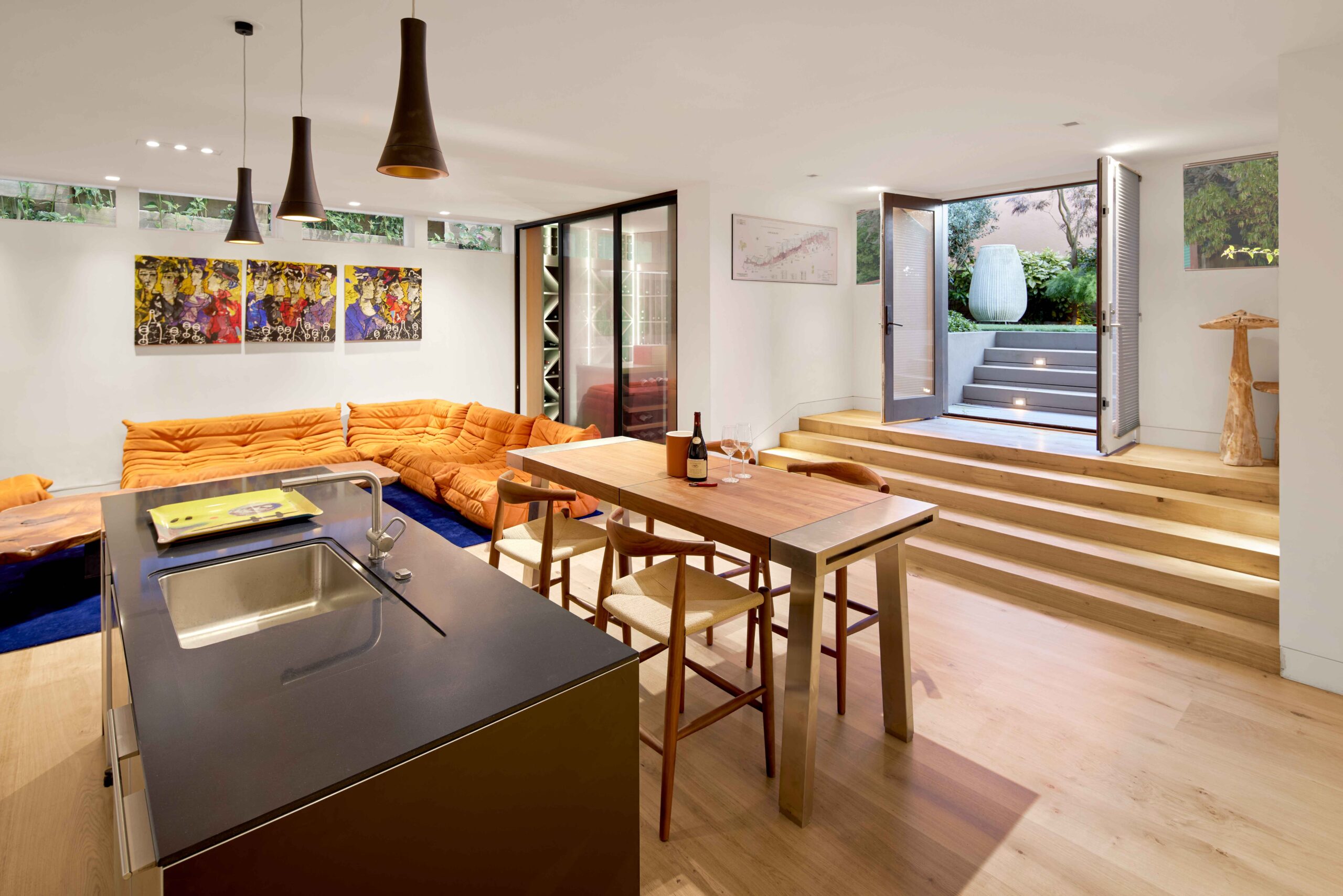
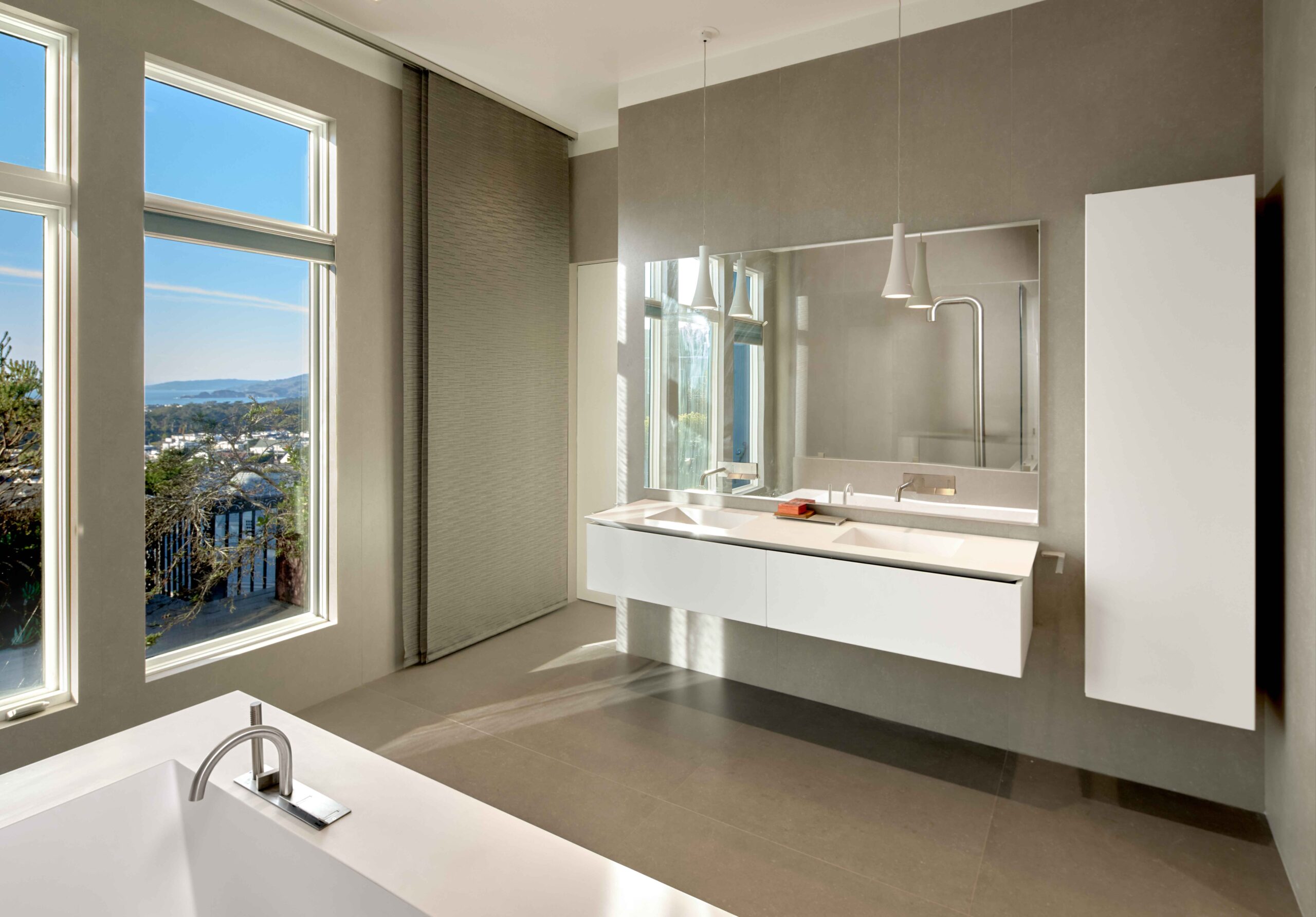
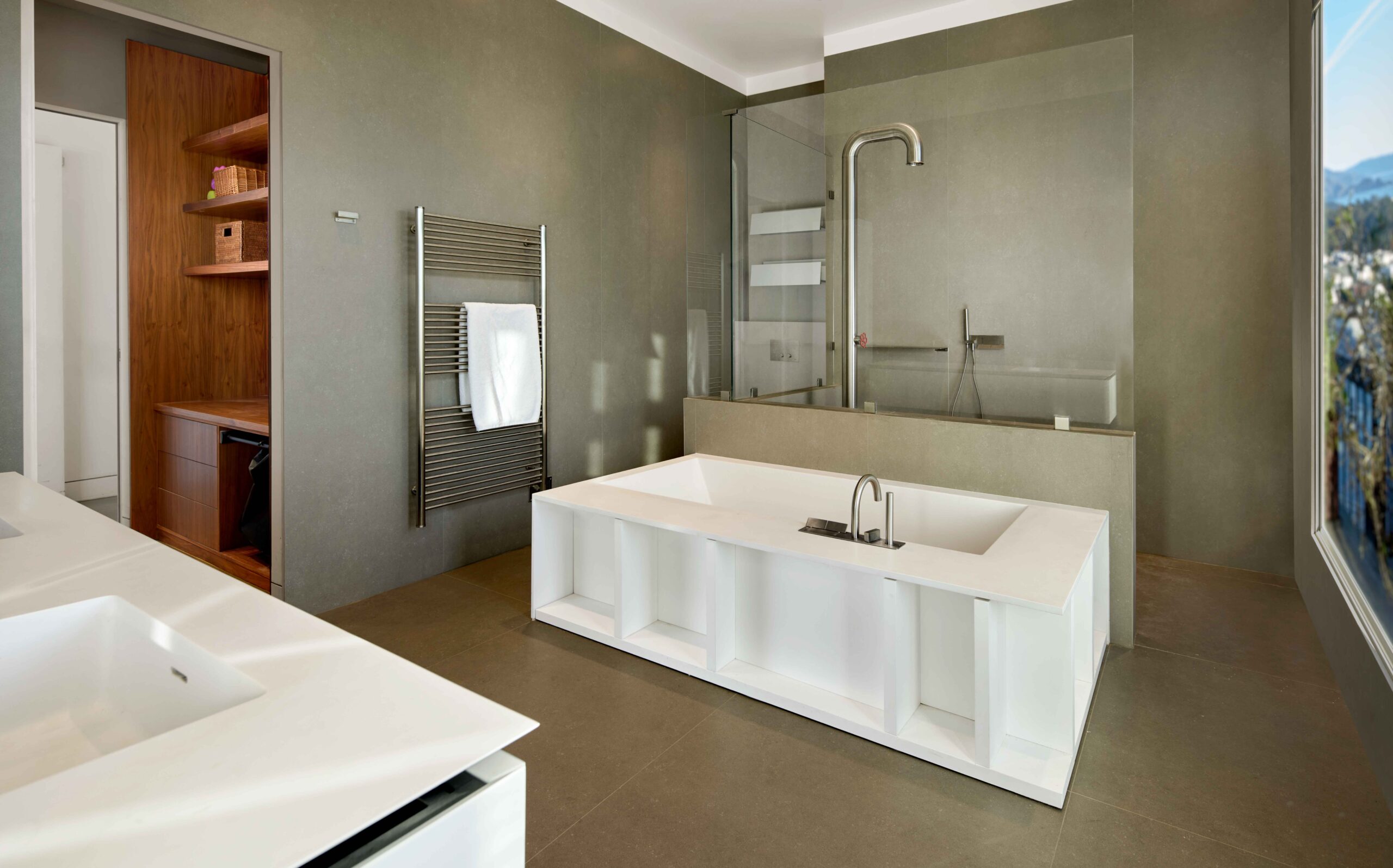
Healdsburg Guest House
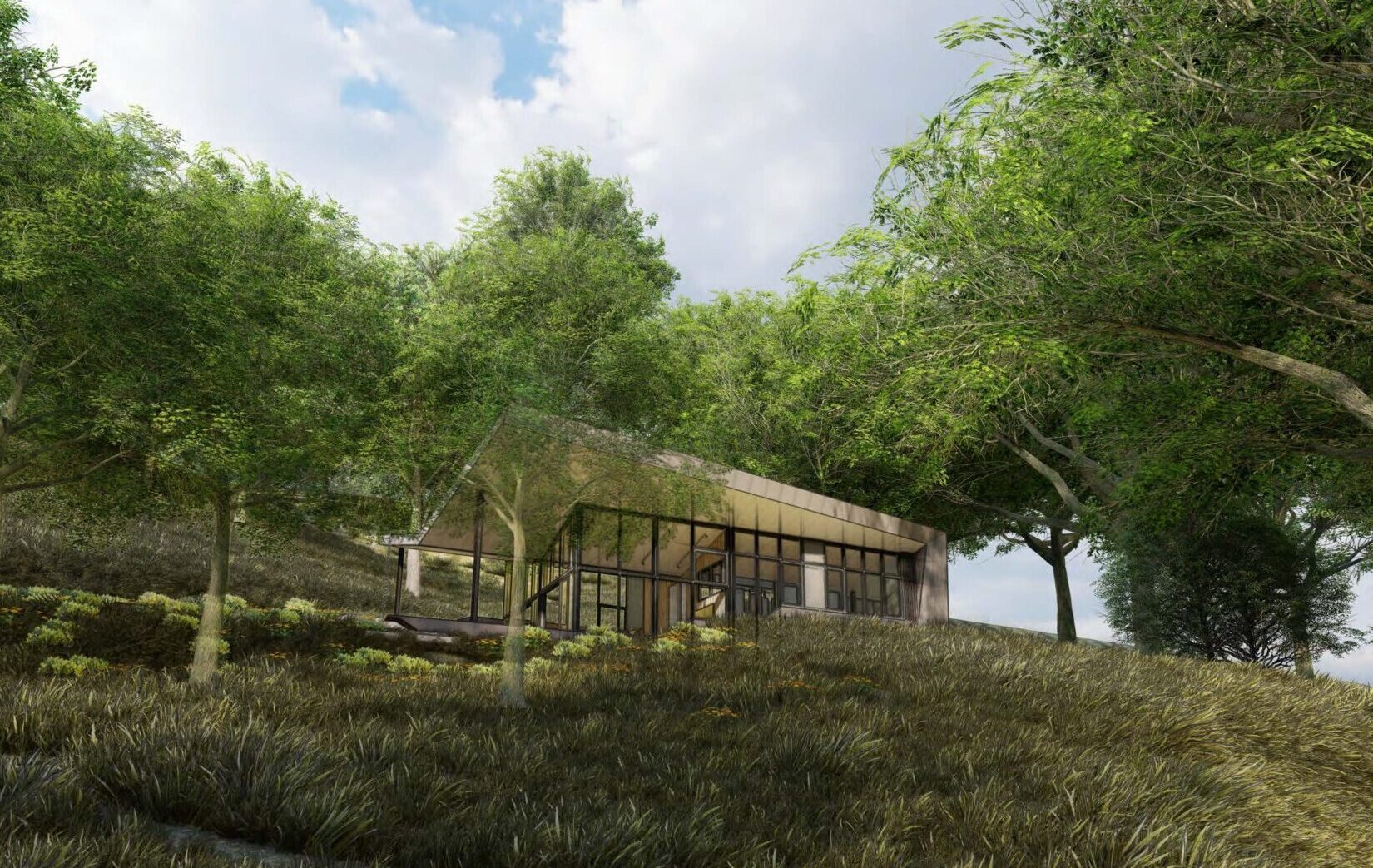
Building Into the Hillside
This new accessory dwelling is sited along a woodland path that leads from the larger main home to a favorite upland swimming spring on this 200-acre property in unincorporated Healdsburg, located deep in the Sonoma Valley foothills of Mount Jackson. The efficient open plan is split-level and partially buried into the sloping site allowing the private” Bedroom Block” to be elevated from the open “Living Porch” which extends outwards into the patio garden beyond the tall glazed surfaces extending the interior space under a wide cantilevered folded roof embracing the larger landscape and abundant open space.
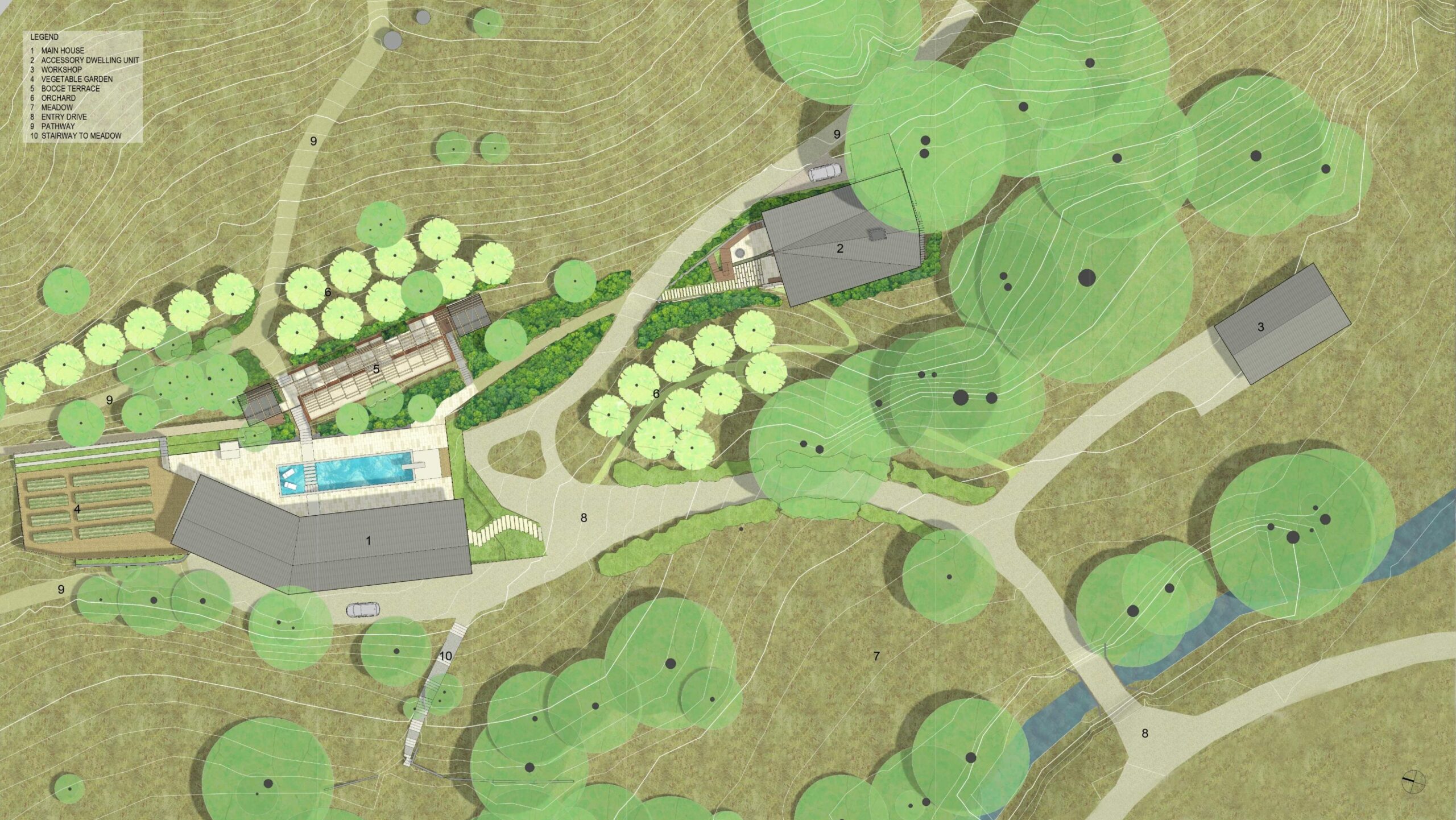
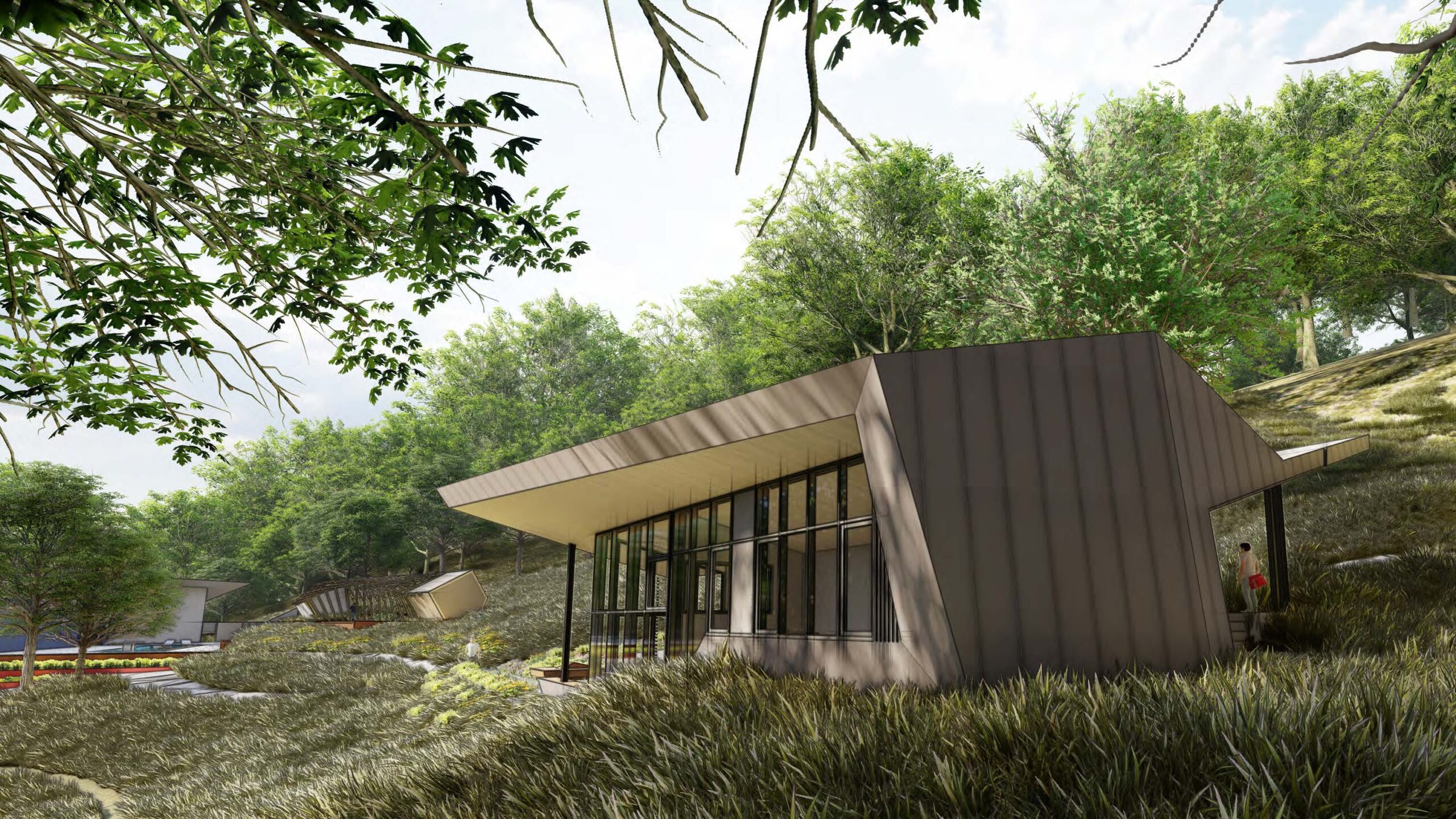
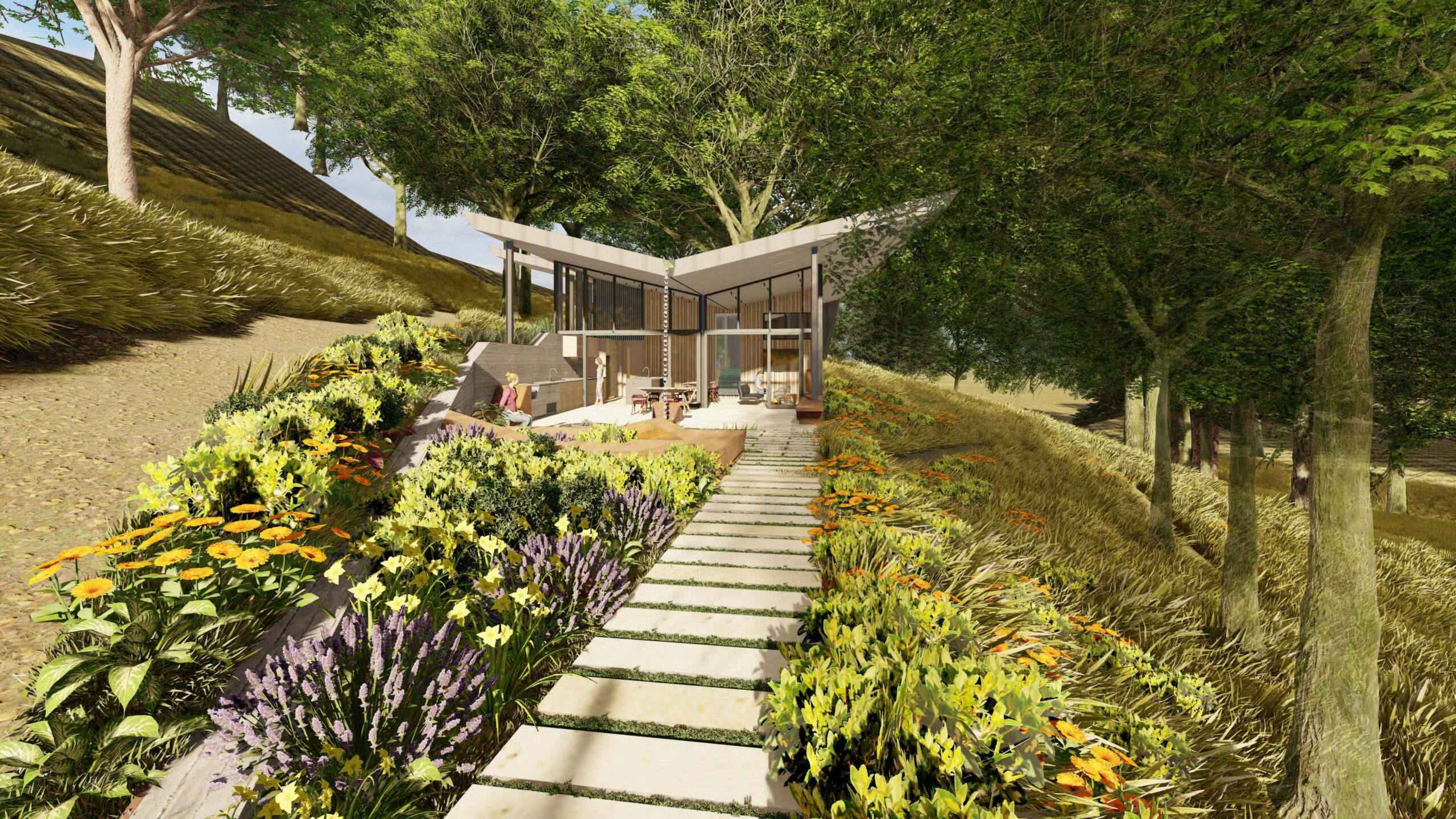
En-Folded towards the Light
The butterfly-roof form allows views to the sun-speckled uphill meadows and also downhill towards the high mountain ridged horizon beyond the creek, where meadows cascade towards the road below, over orchards and gardens that serve the home. The Metal Roofs form an open shell that descends to enclose the rear forest-facing bedroom wing of the house while opening like wings to reveal the interior soft wood soffits that extend the interior ceilings outwards into the landscape.
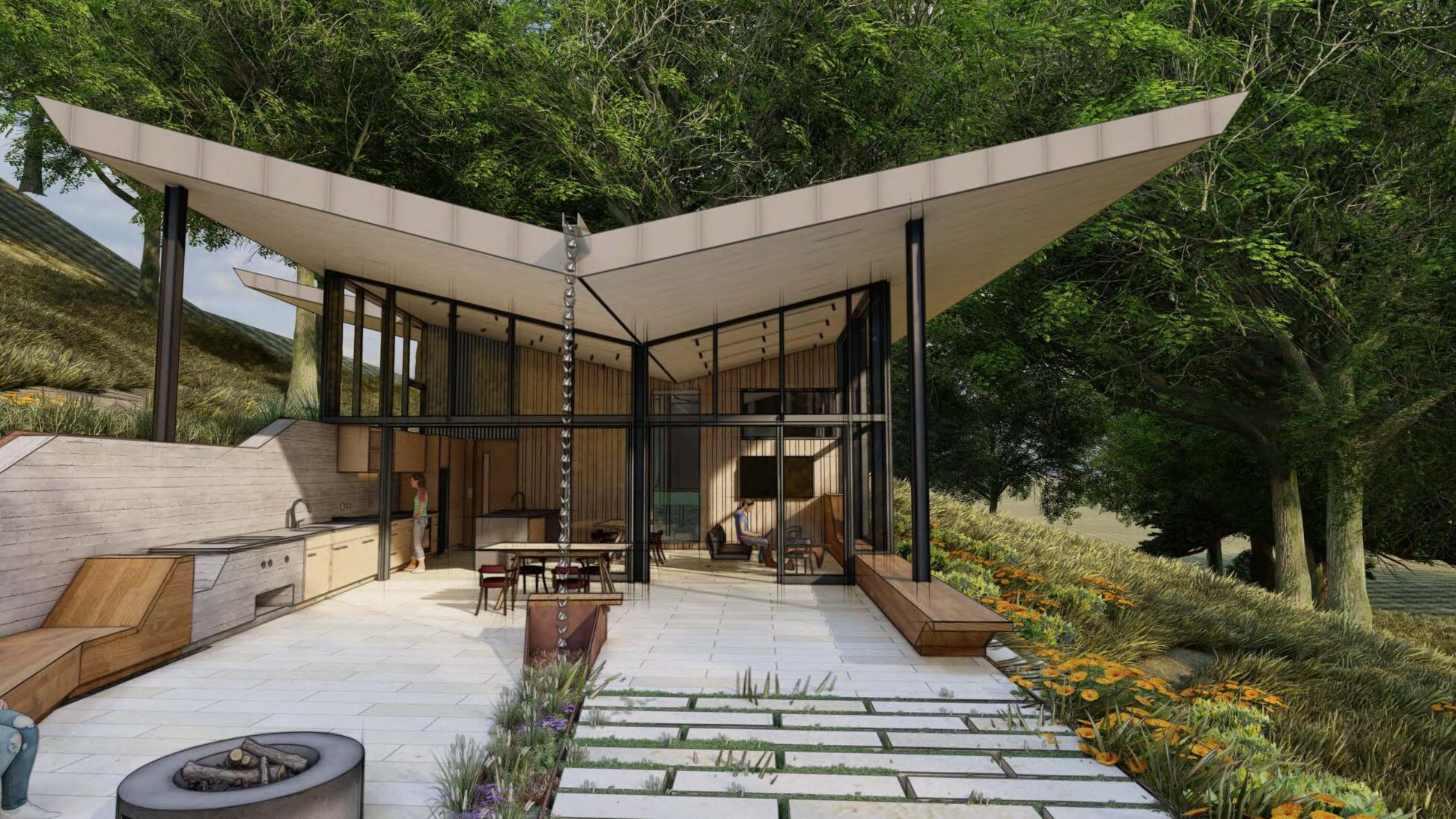
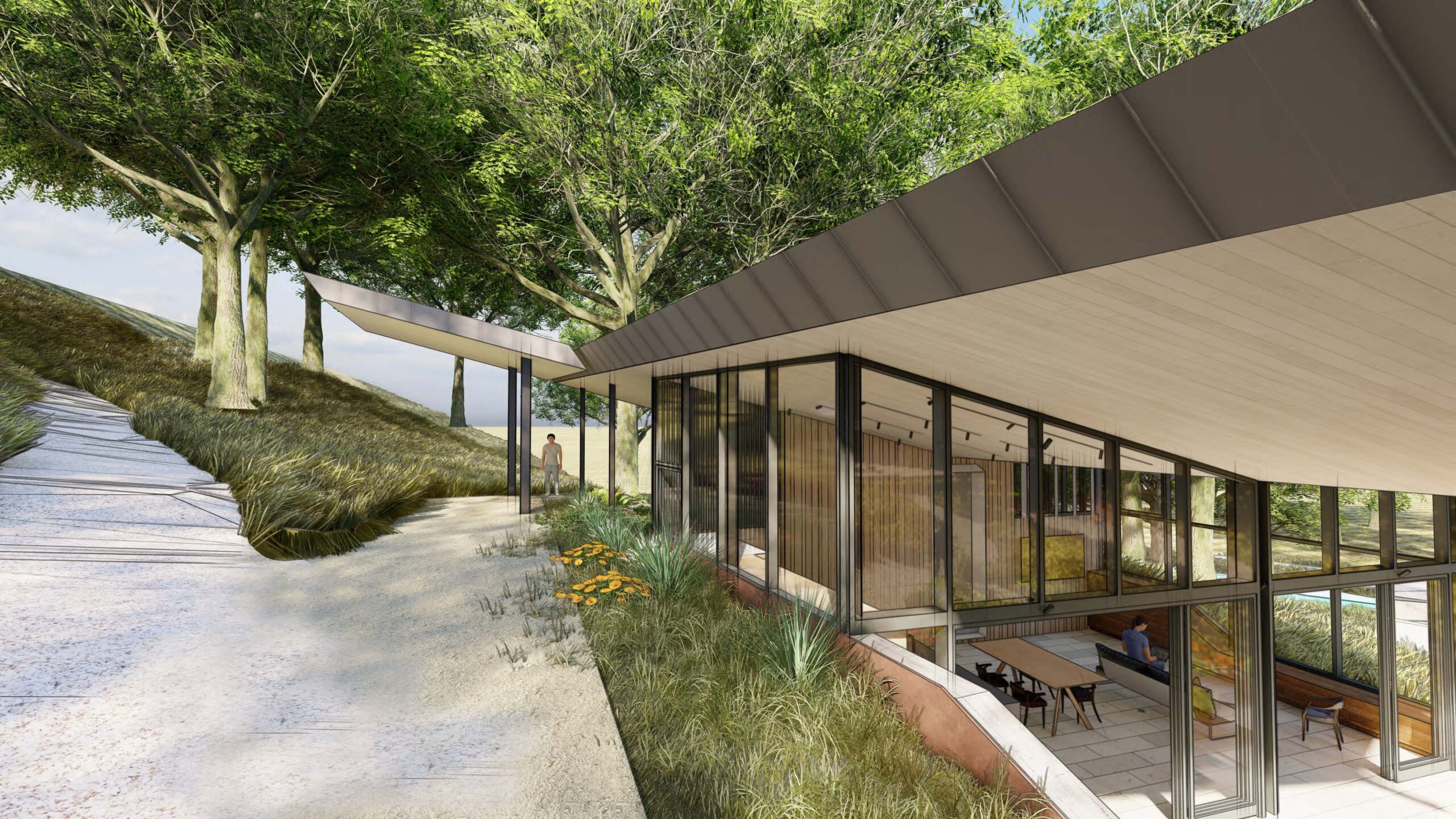
Exterior Connected Living
The exterior finishes travel inside just as those within travel outwards – and there is a breezy openness to the home that allows the family to live “outside” within the cozy, warmly textured interior. The bench-low walls extend the indoor kitchen outwards to an exterior kitchen and second living room focused on wide wood benches and a protected fire pit that catches the last rays of the setting sun each day.
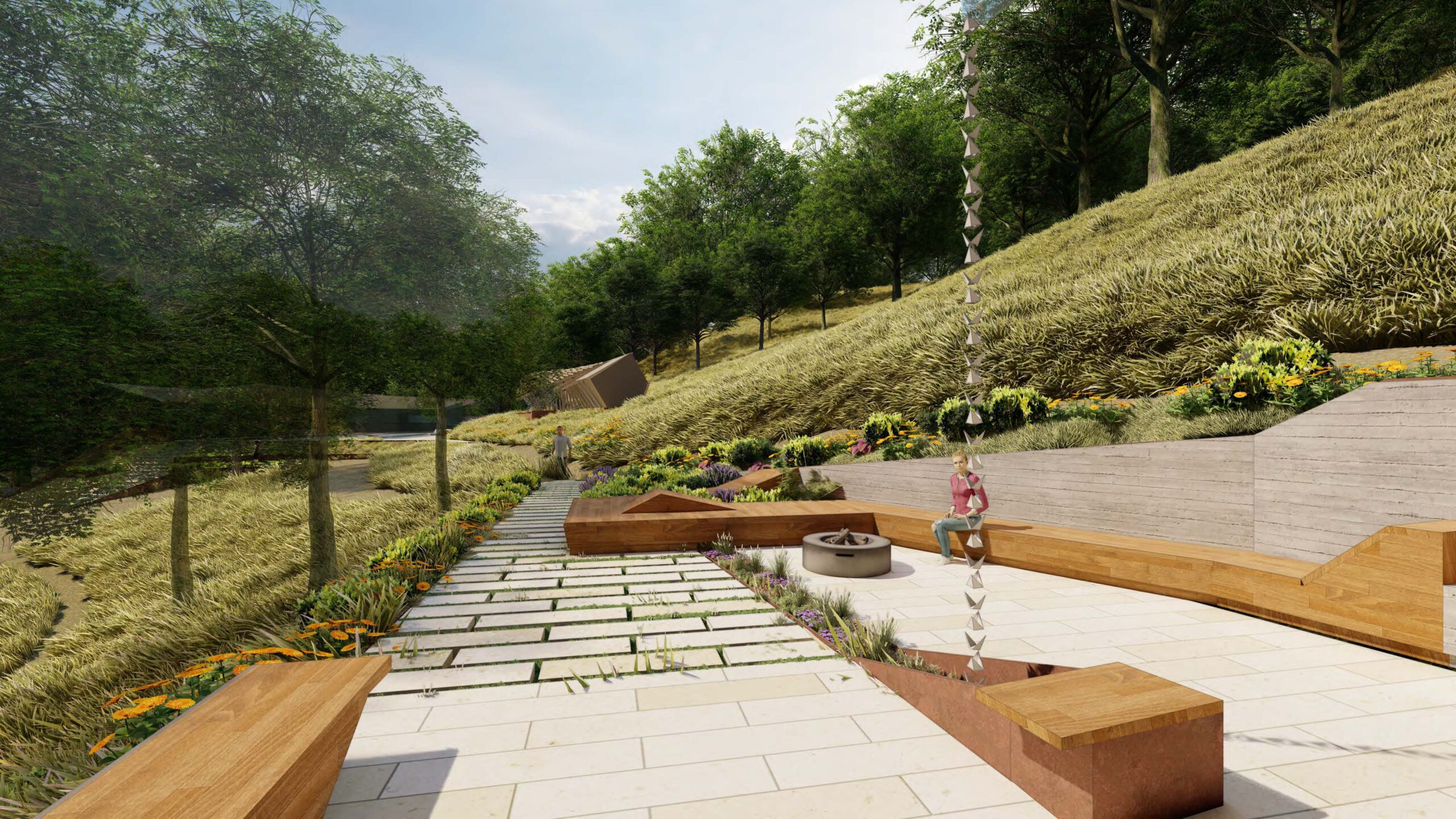
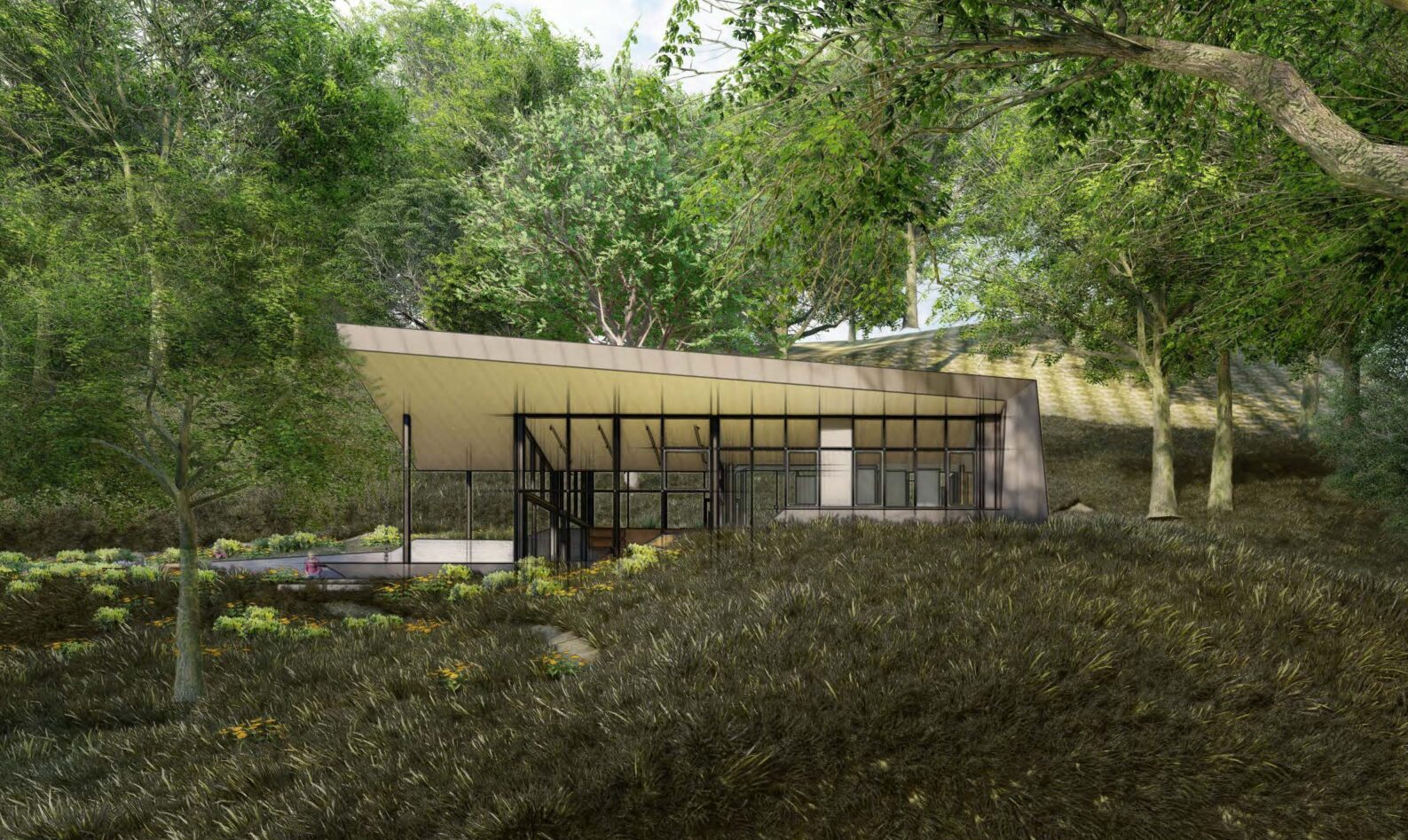
A Water’s Tale
The Solar paneled roof also collects and concentrates water towards the patio garden and herb beds that line the entry path beside the sunny orchards. A small corten steel channel bisects the patio social space becoming a vertical water feature with every storm while channeling water to the south where the gardens surround the sitting areas, pathways, and gathering spaces.
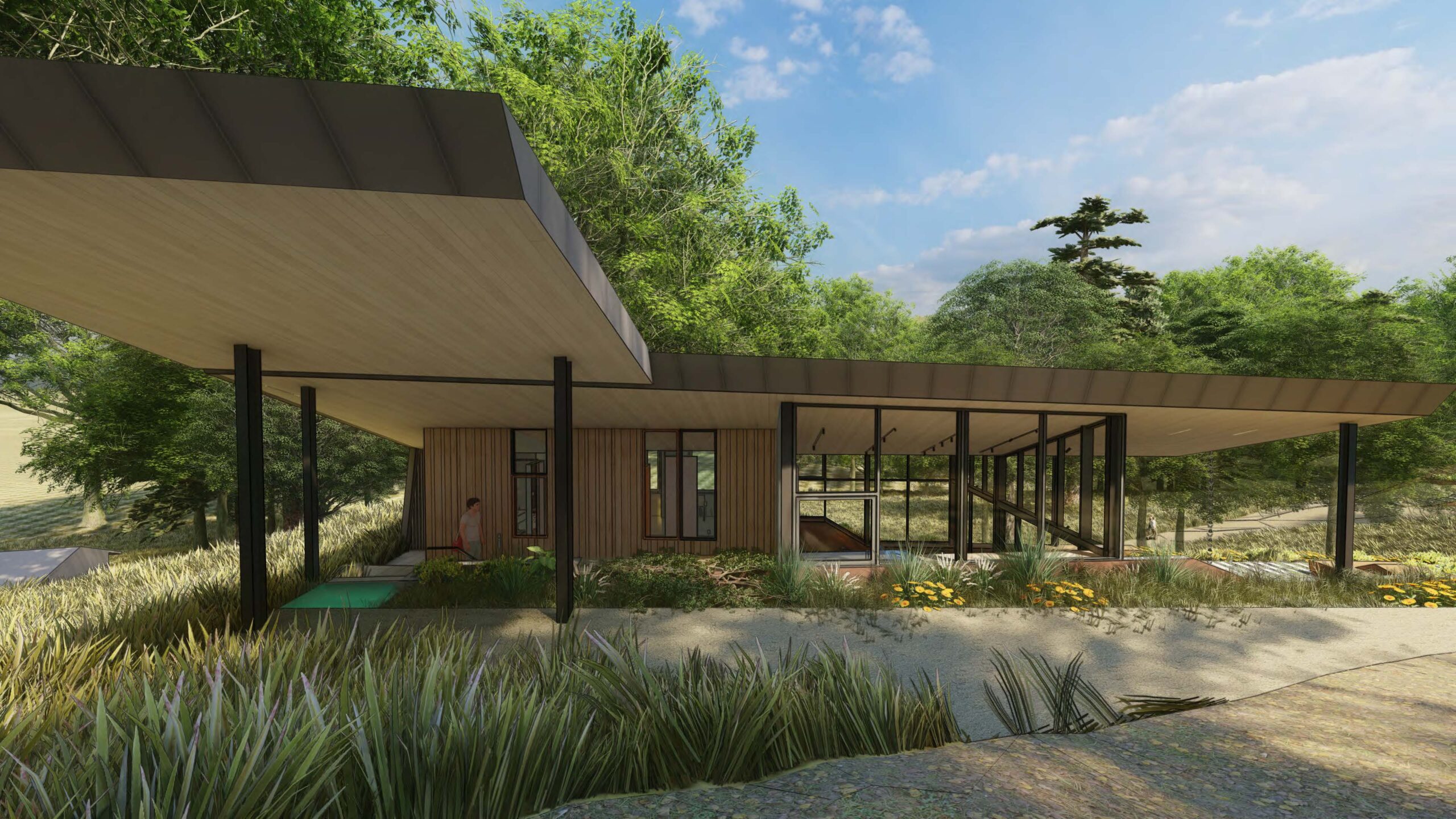
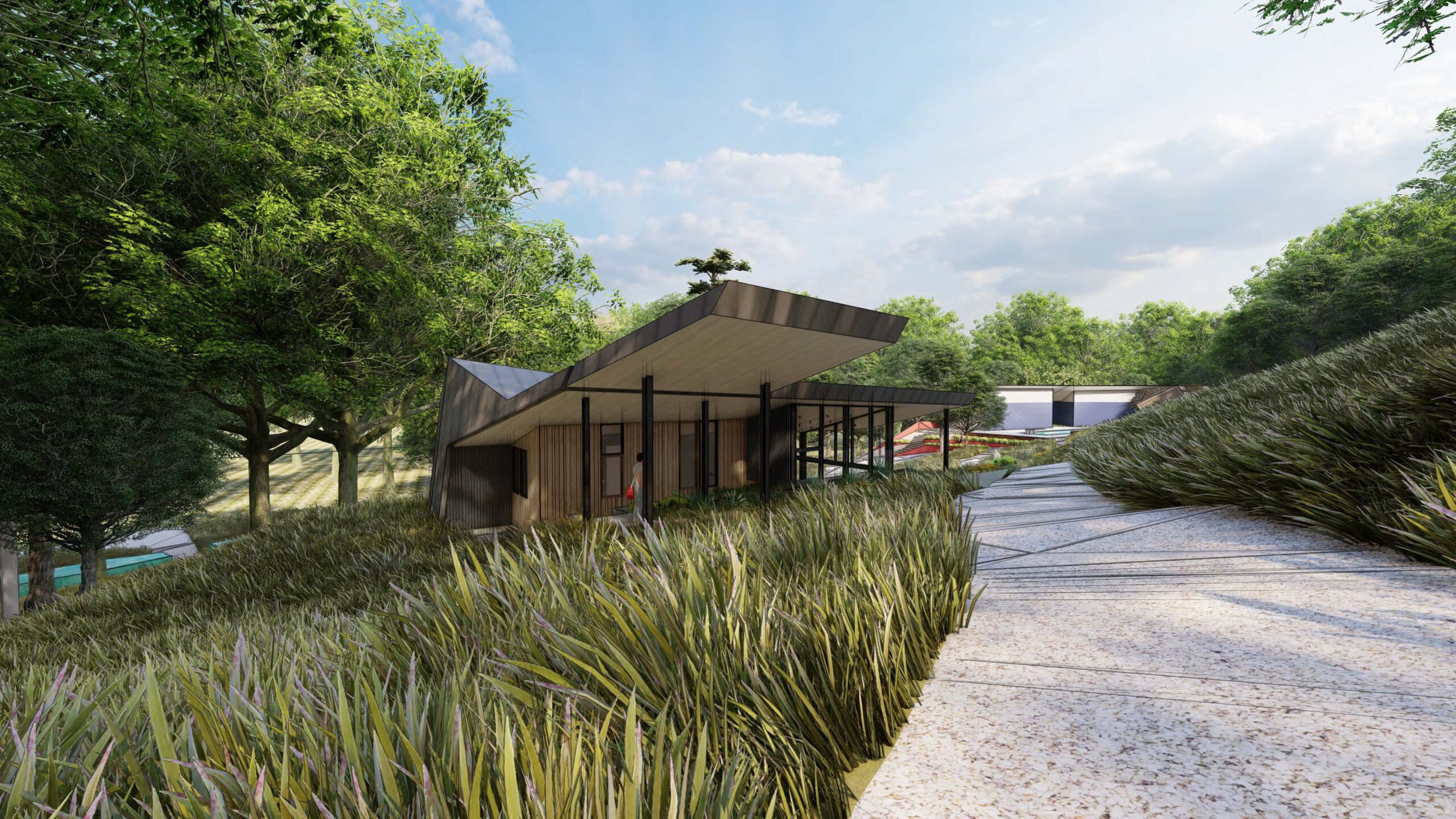
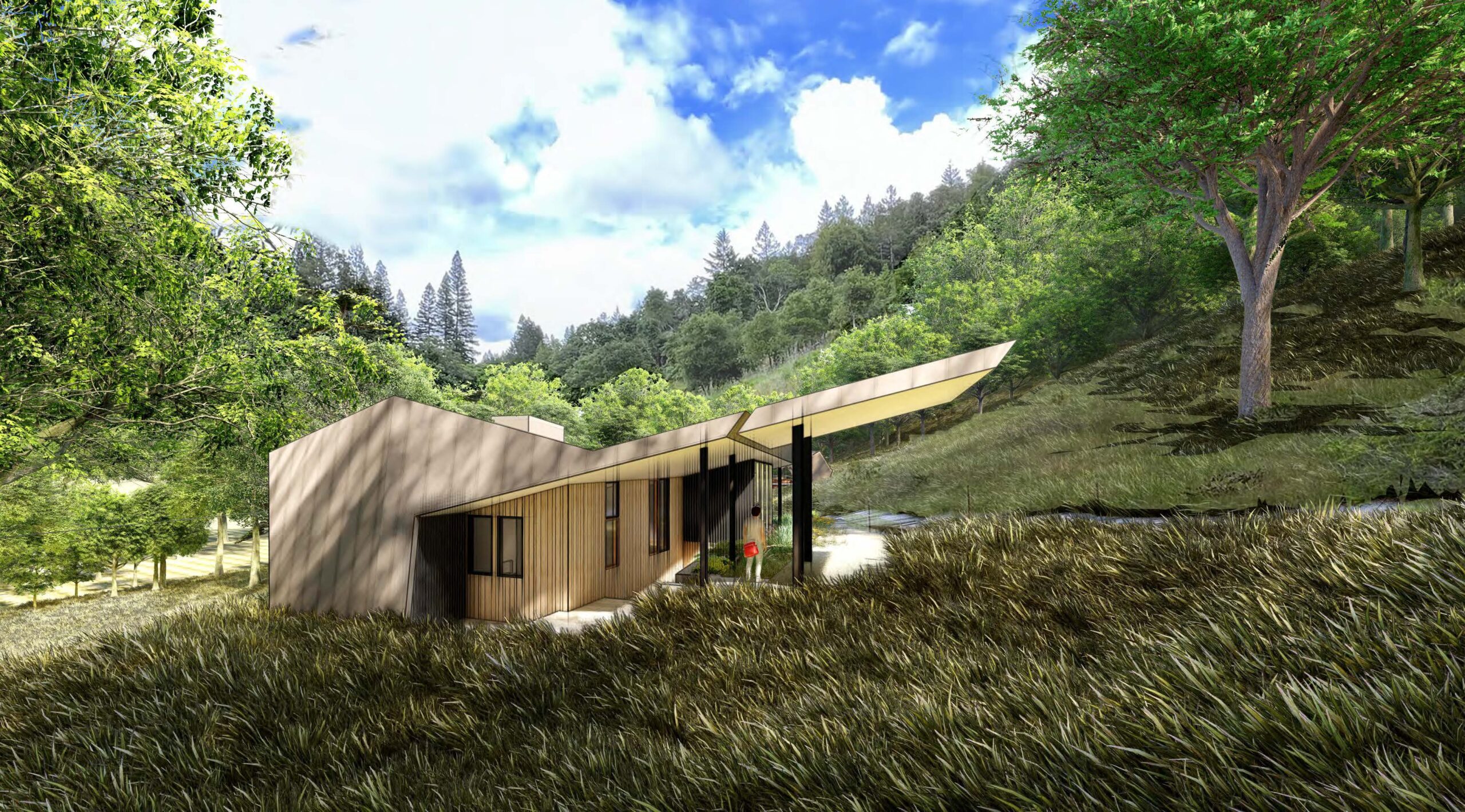
Location:
Owner/Client:
Scope:
Status:
Park Pavilions
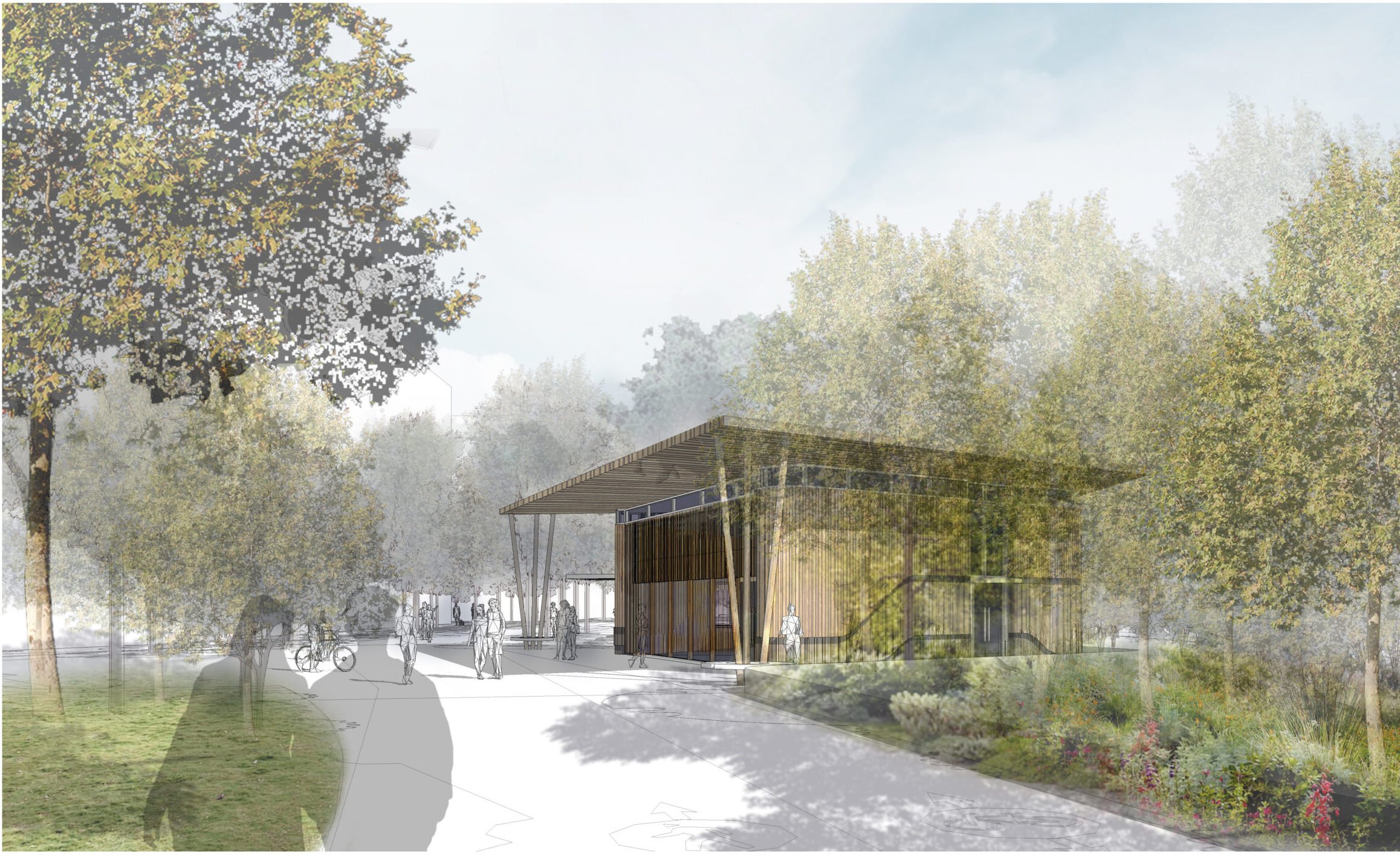
A Forest of Buildings
A new planned community serving thousands of new homes in mixed-use development will have as its central feature a large park that borders a regional transit line station. INTERSTICE was asked to design a series of five separate park structures from a shared Community Center, Food kiosk, Community Garden Trellis, Art Focused Orientation Beacon, and Transit Shelter that would be distributed along the 32-acre linear Park Promenade. The Park is to be a new forested amenity for the many medium-density buildings planned over the next ten years serving as the heart of the community-shared public commons.
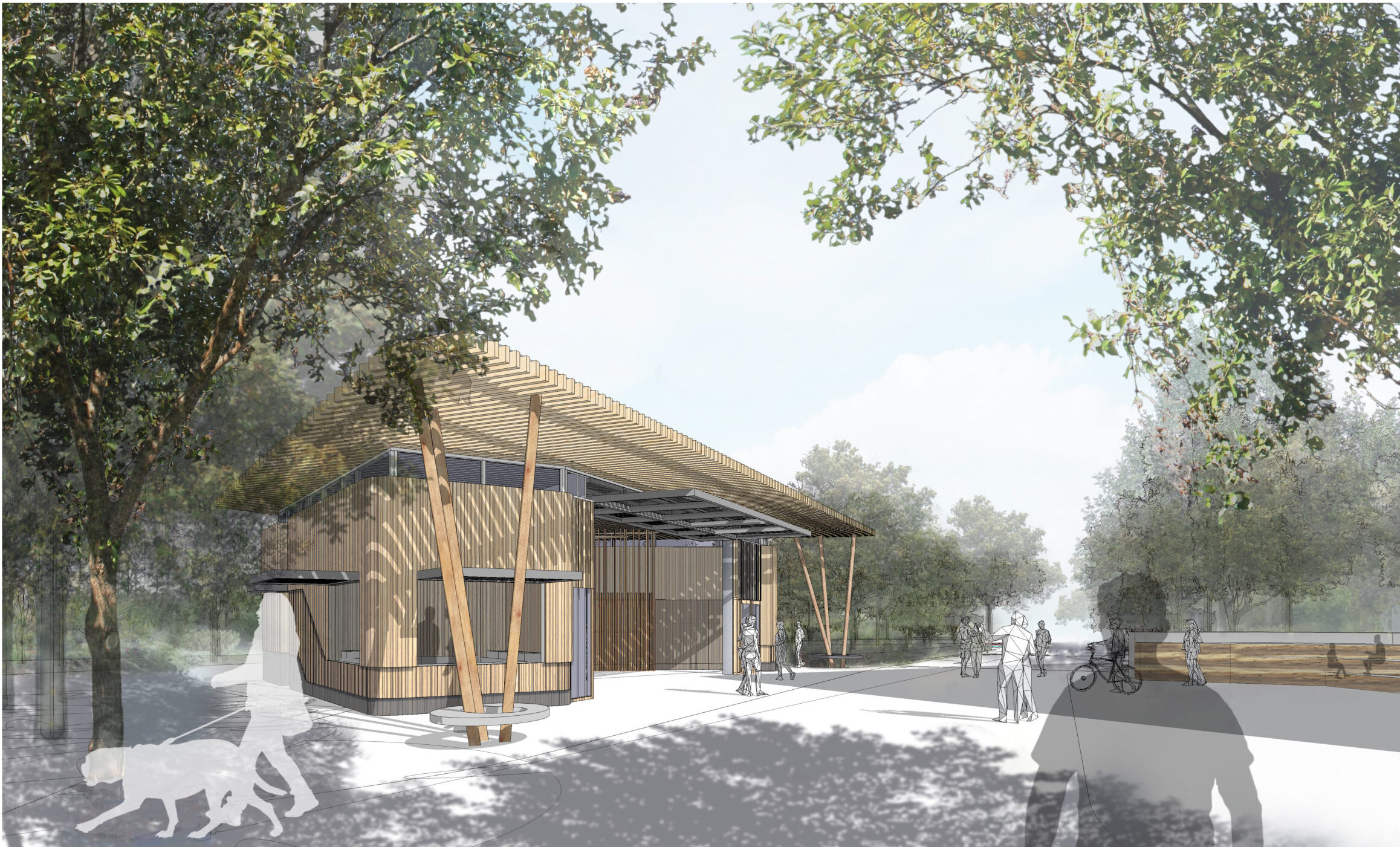
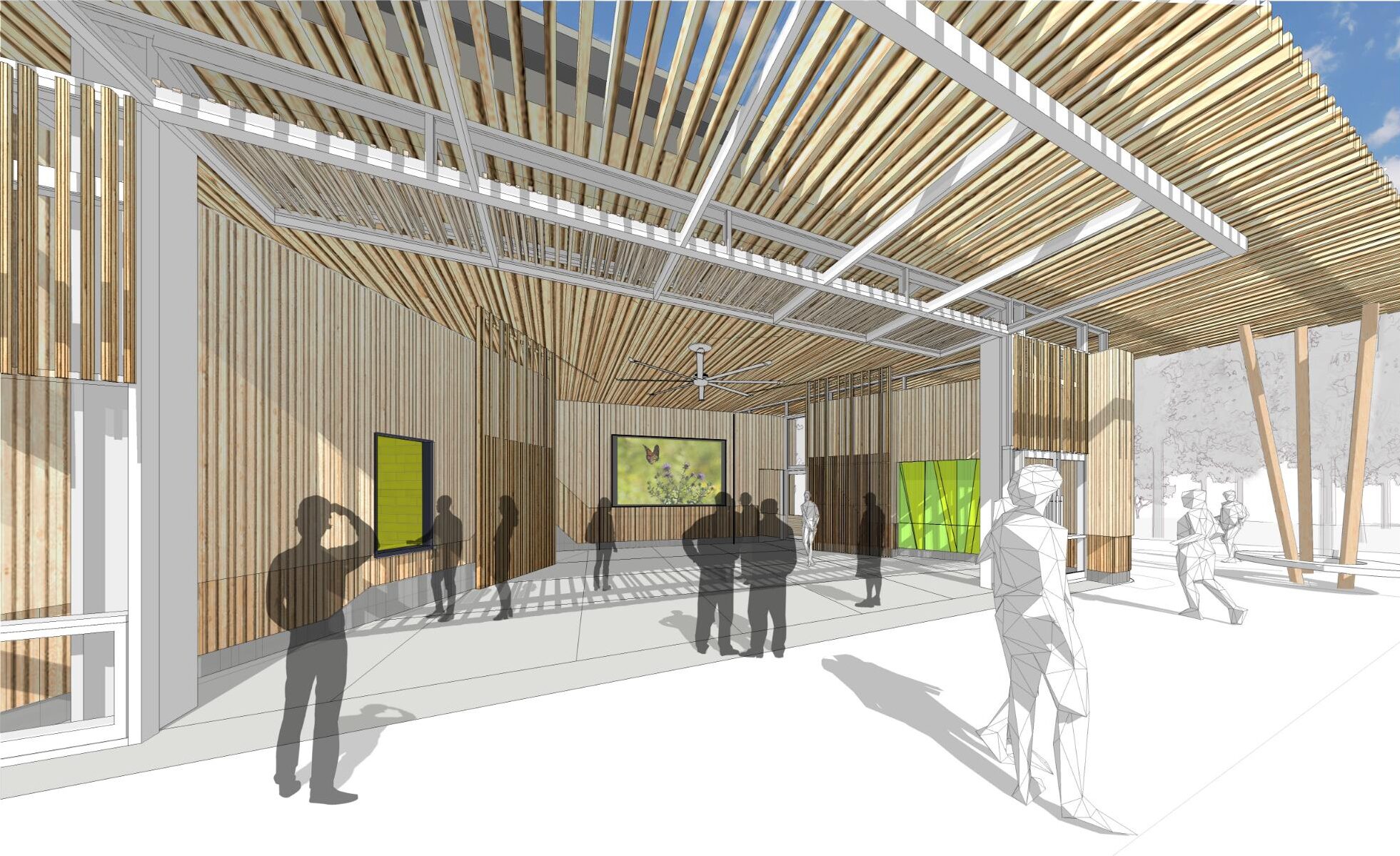
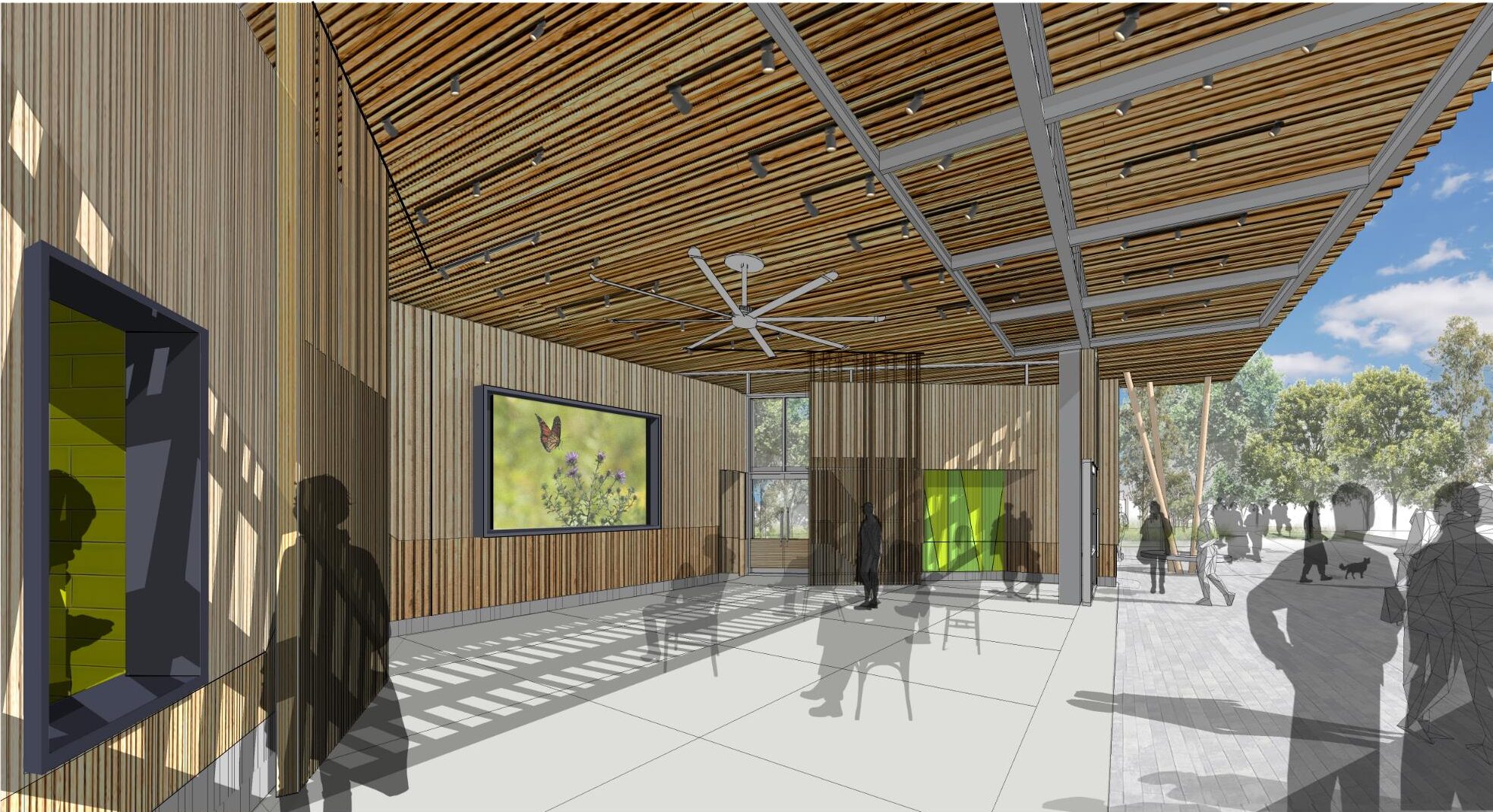
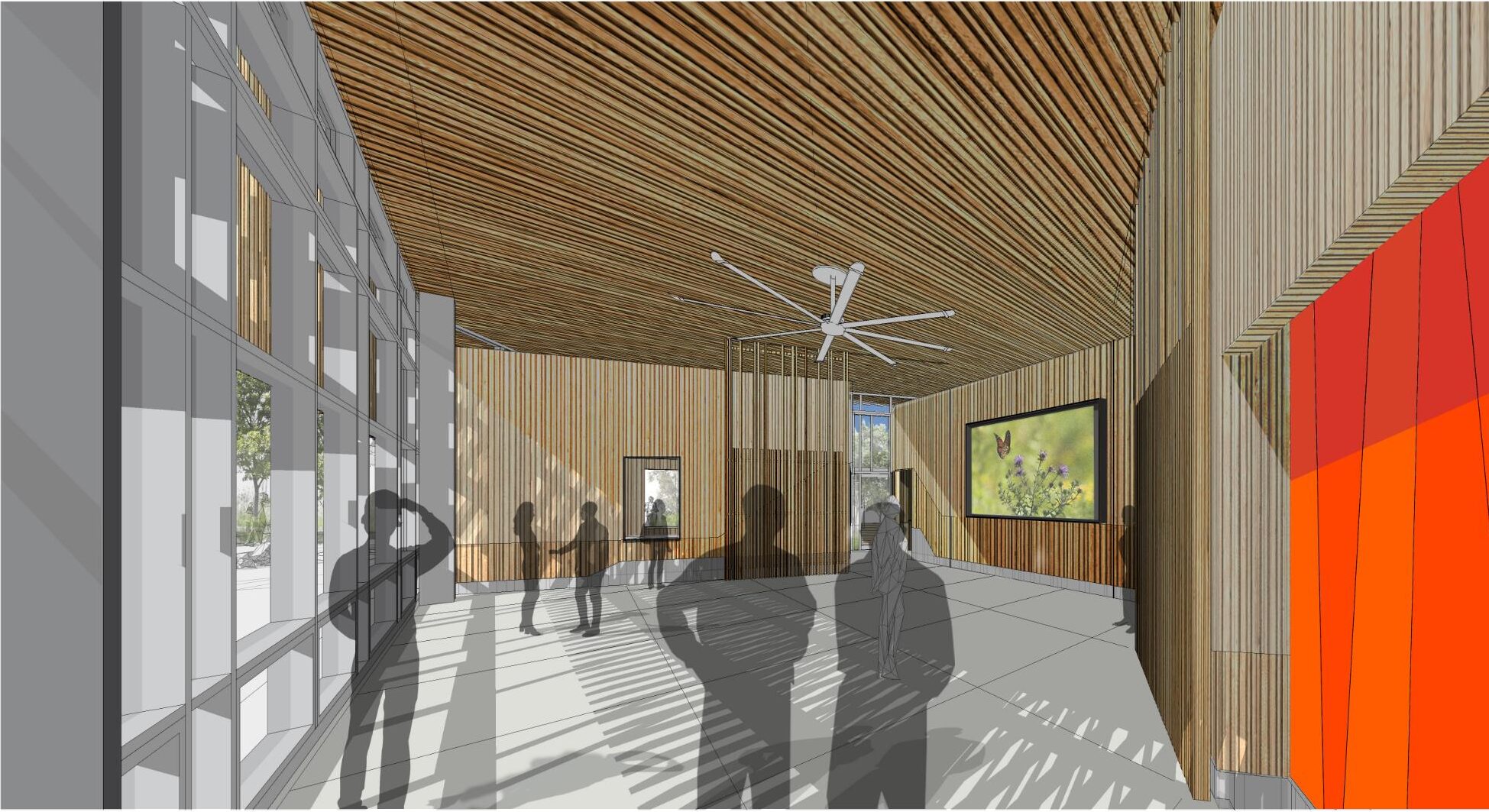
In this early design phase, three of the structures were developed to be complementary multi-use public pavilions with a shared architectural expression and formal language designed within the evolving forest and its maturation over time. The soft curvilinear forms clad in reclaimed woods from the surrounding landscape will blend into and extend the forest canopy of shade and filtered light.
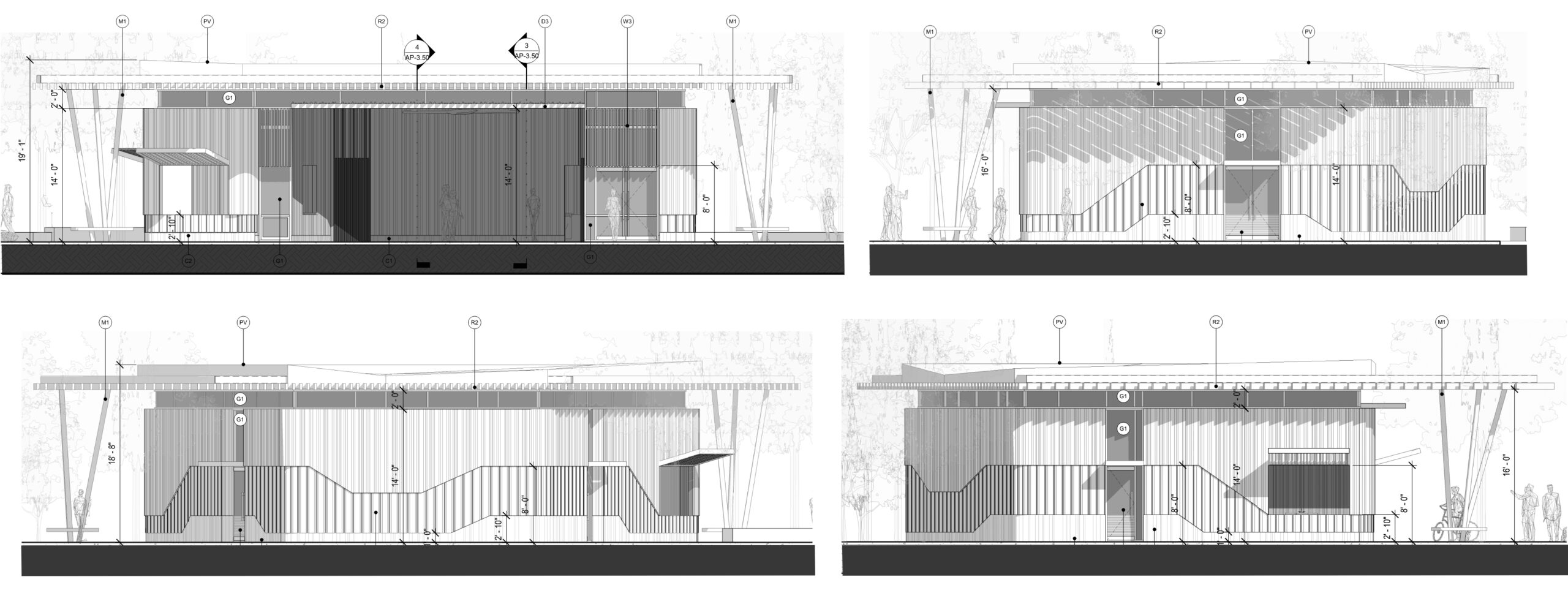



The porosity and shape of the pavilions allow for them to be read as both inhabitable “trunks” within the larger forest, and as porous social filters allowing space to flow between and around them; merging inside and outside spaces through dynamic walls and deep overhangs – while at night becoming lanterns that sparkle and glow within the parks seasonal vocabulary of change.
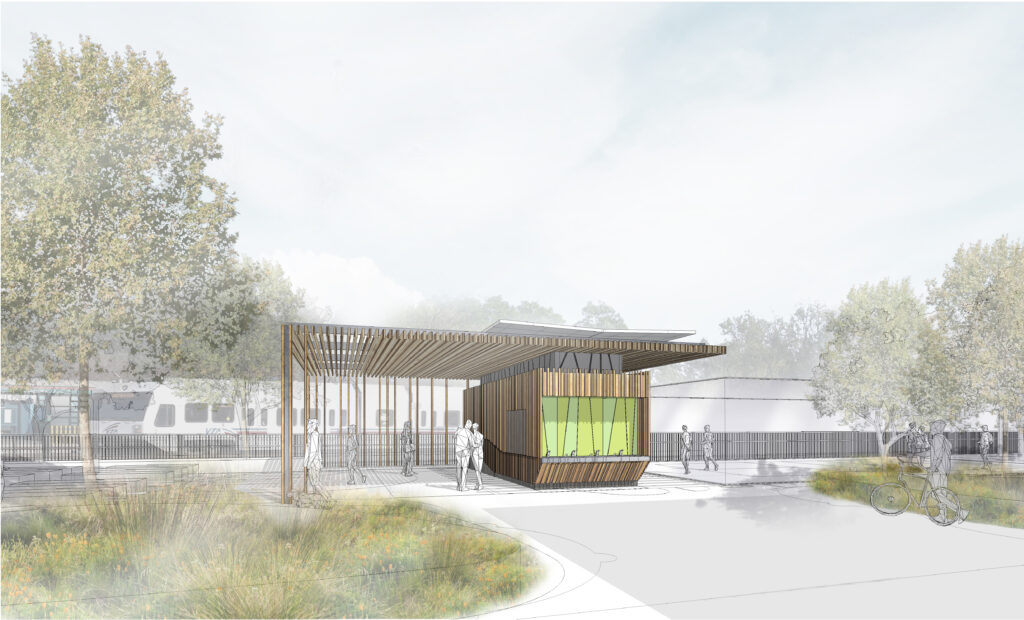
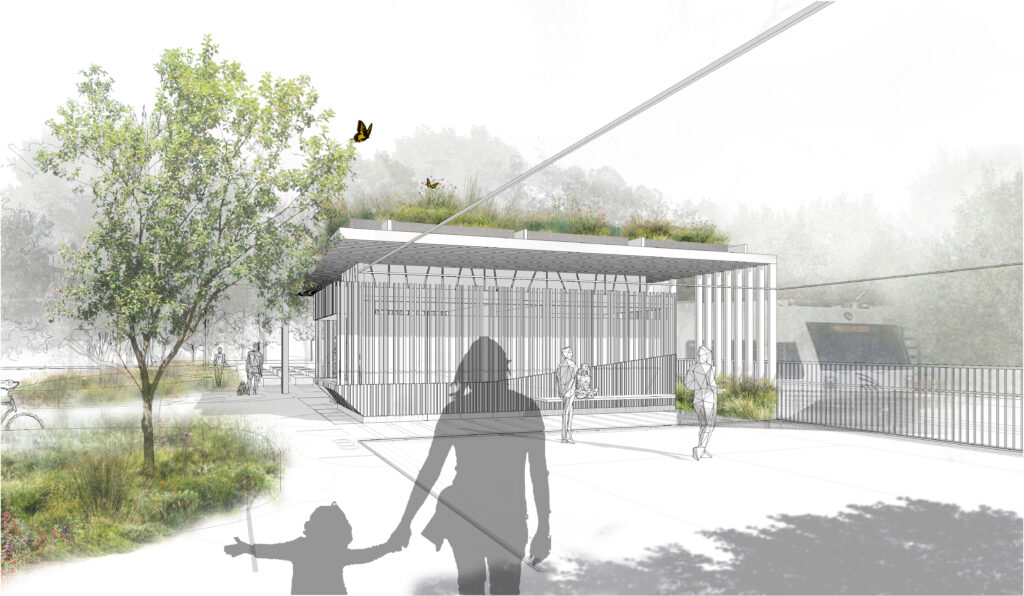
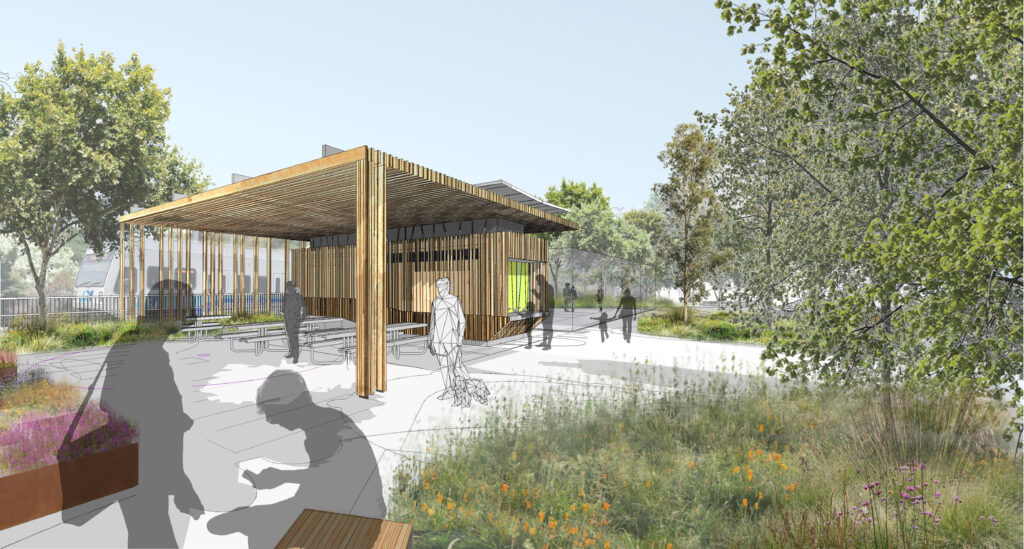
Location: Mountain View, CA
Owner/Client: Undisclosed Developer Joint Venture
Scope: Architecture
Status: Schematic Design
Project type: Civic/Institutional/Community
Russian River Residence
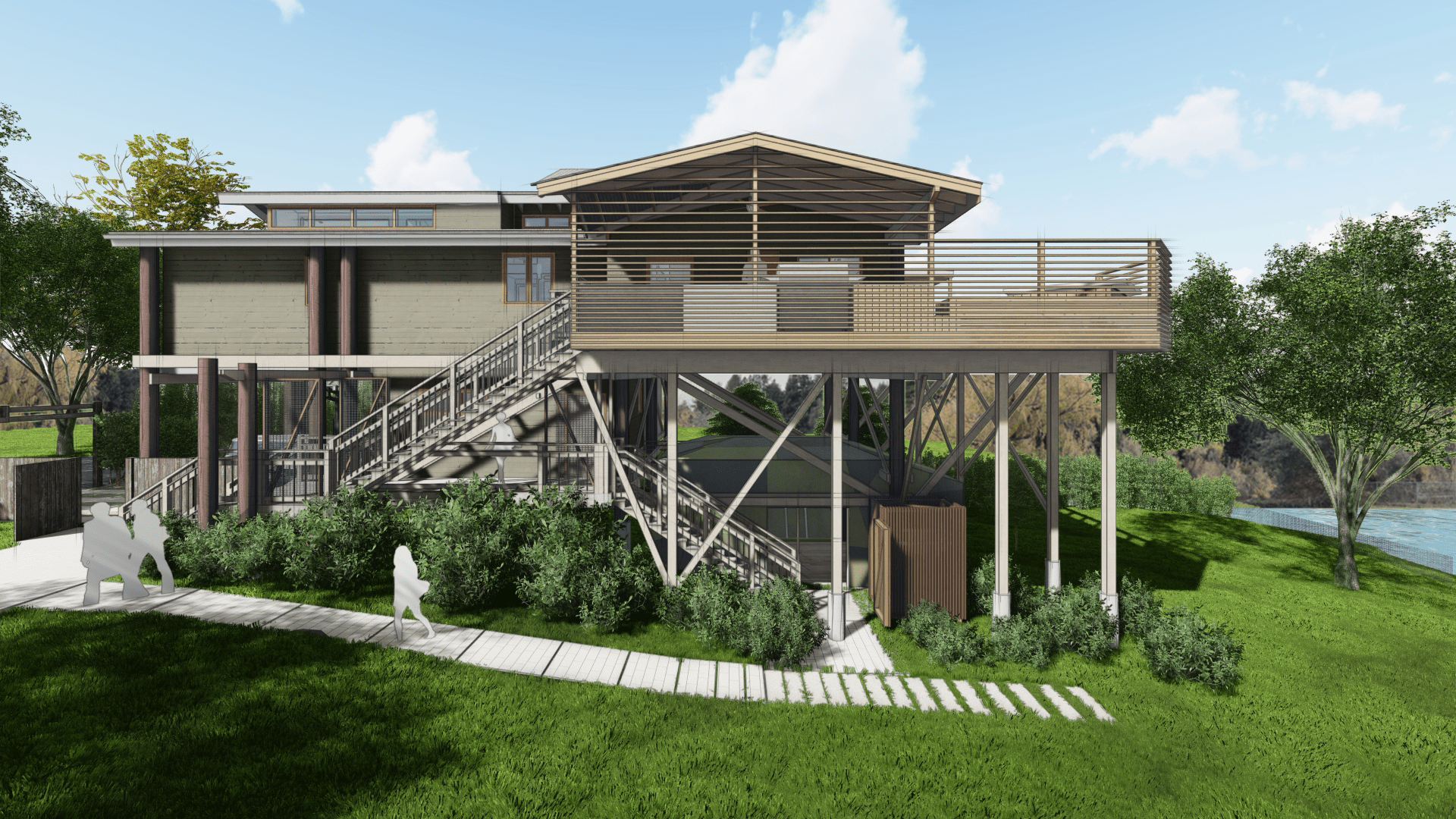
Elevated Housing
Up on stilts – to avoid the 100 year flood level the house is 30 feet up in the air – creating a ship-like detachment from elevated “deck” of this renovated house along the Russian River. Like a home perched between giant wood peers the original home is enlarged by INTERSTICE architects to provide a lighter, expanded home, better connected to the lake, and the new shared social spaces – some of which can occupy the comfortable shade of the flood zone volume “under the boardwalk.”
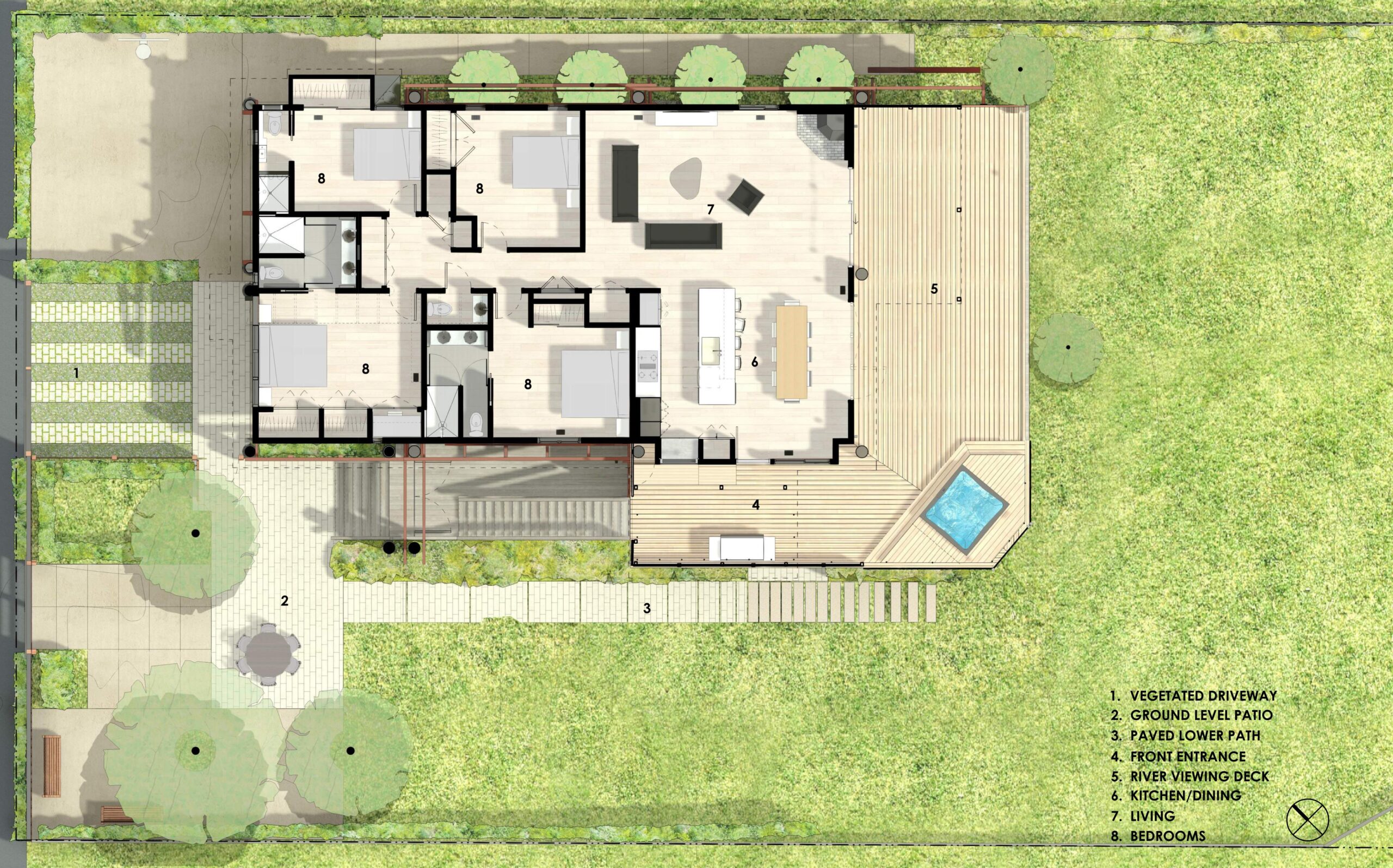
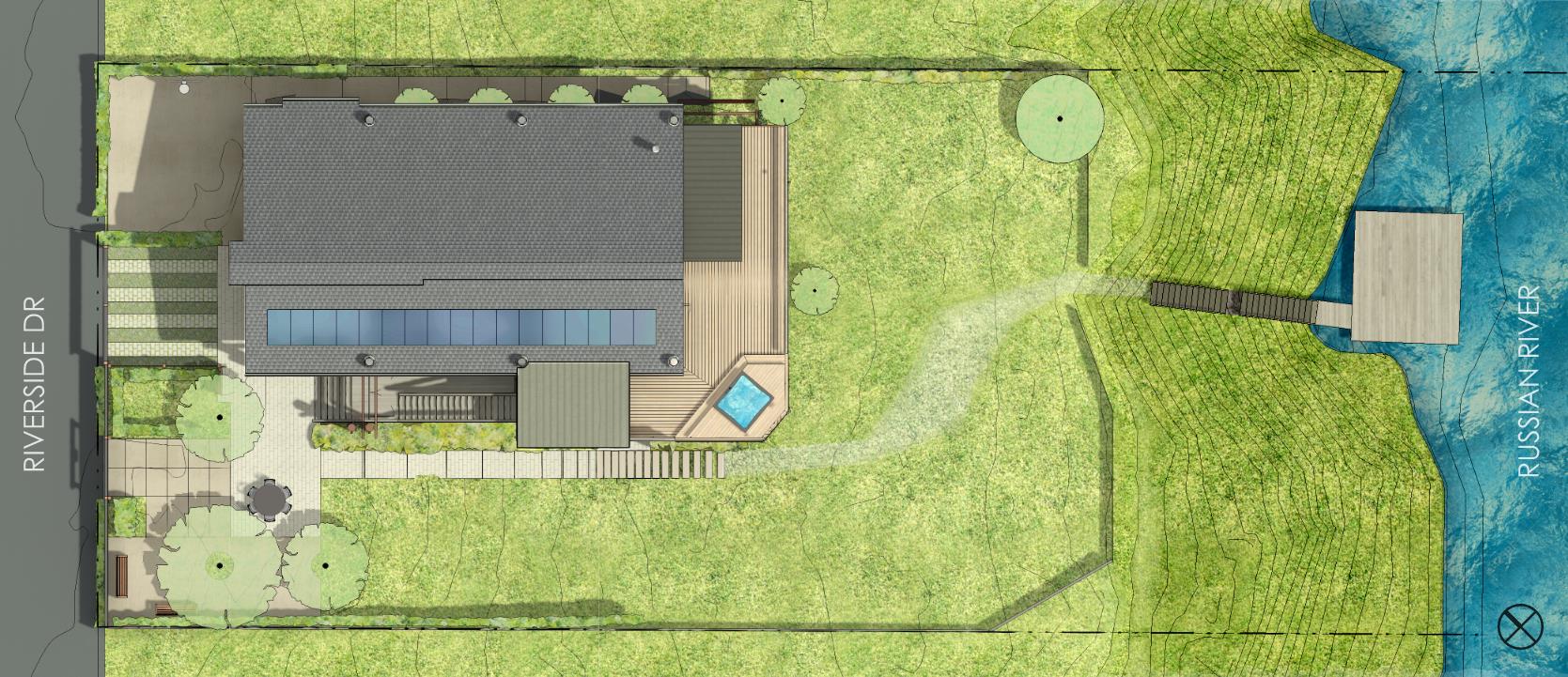
Extruding the Section
To honor the earlier structure INTERSTICE designed the extension to extruded the clerestory roof break so that it could provide an organizing feature for the new interiors – allowing light into the core areas of the home and connecting rooms – this element is then expressed as an entry feature toward the street. New stairs on peers allow an simple direct route past outdoor games porch, gardens, boat shed, utility and water-toy storage areas, all en-route from lake to house and back again.
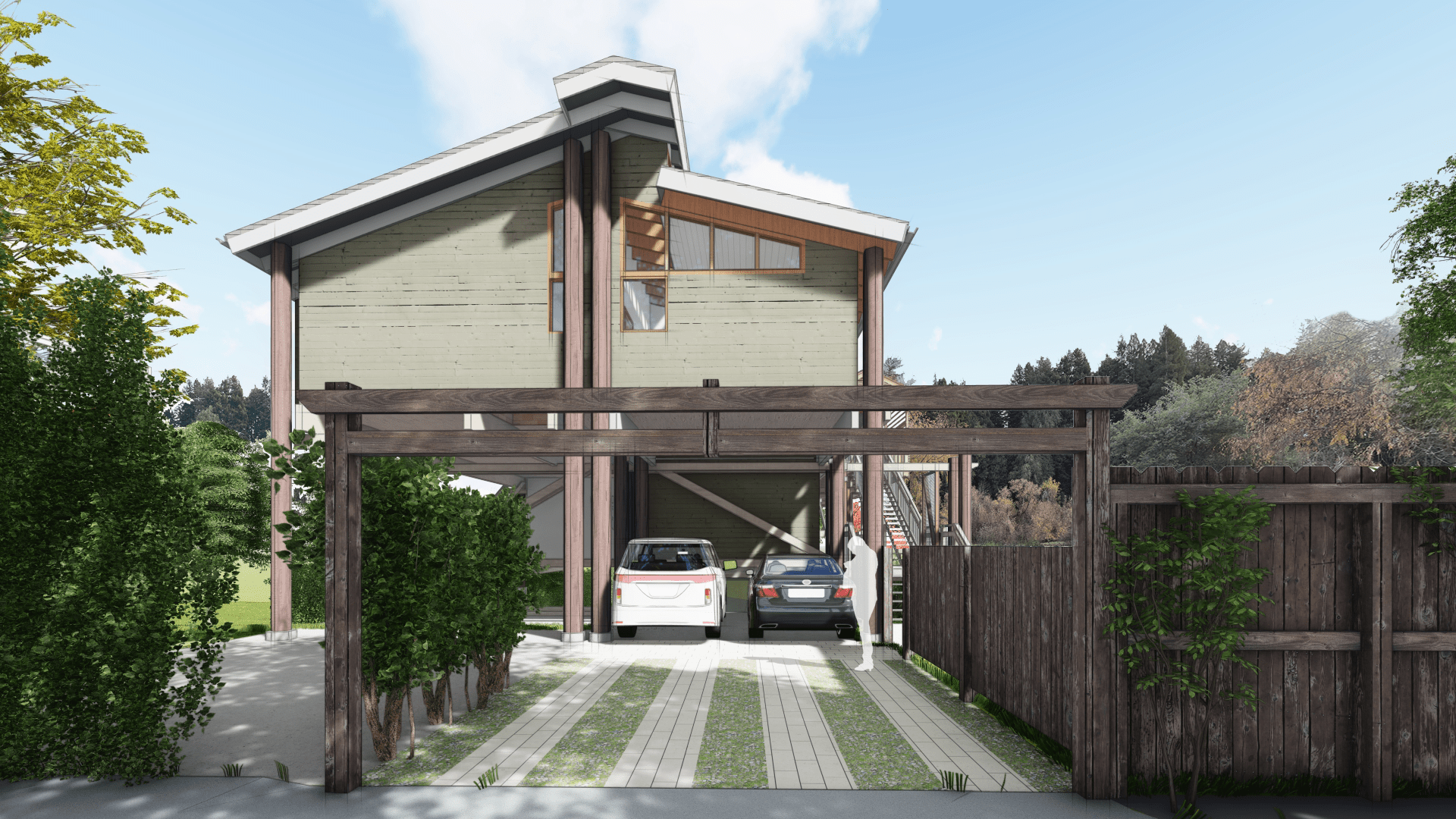


The Buoy Pod
Like a flotsam geodesic mystery pod clinging to the lower (sometimes submerged) peers below the house is an open program game-pod – an informal boat shed, and camp-out space provides at grade enclosure for recreation paraphernalia. The tessellated fiber-concrete panel structure is supported on a triangulated structure built off a reinforced rectangular chassis in order to resist flood intrusion, while allowing water to flow through, and yet be easily hosed down after major seasonal flood events; which are more common with every passing year.
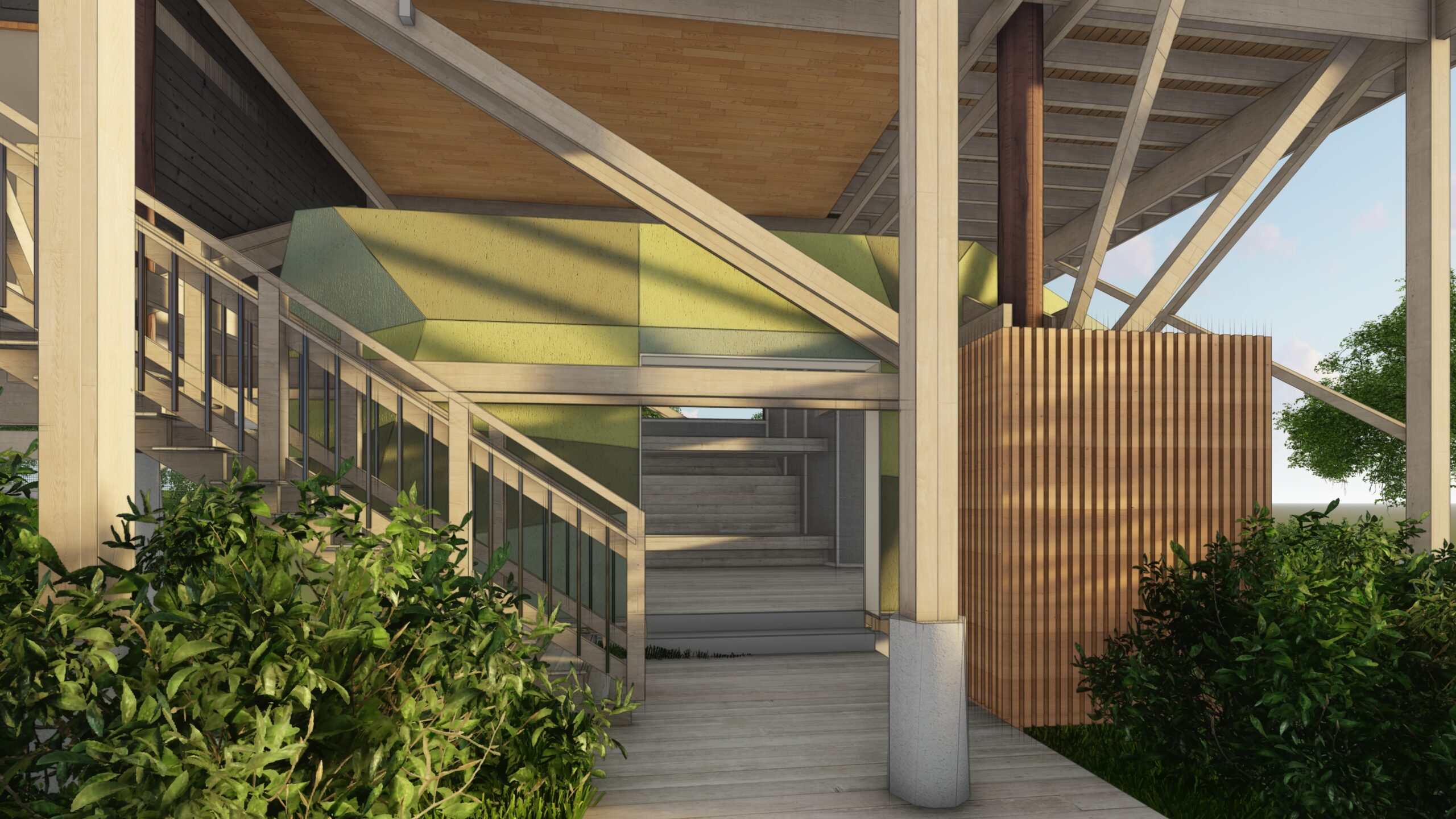
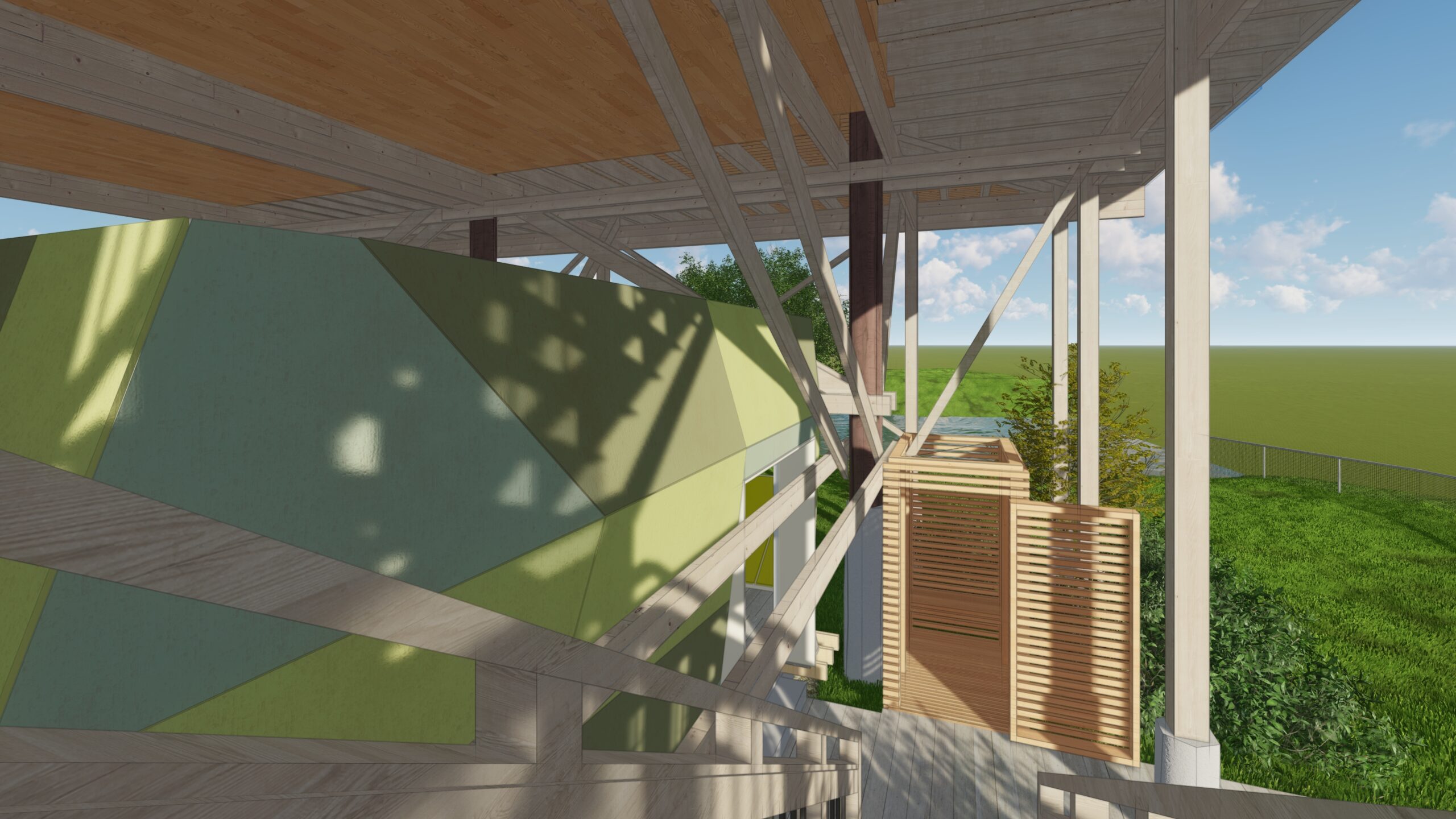
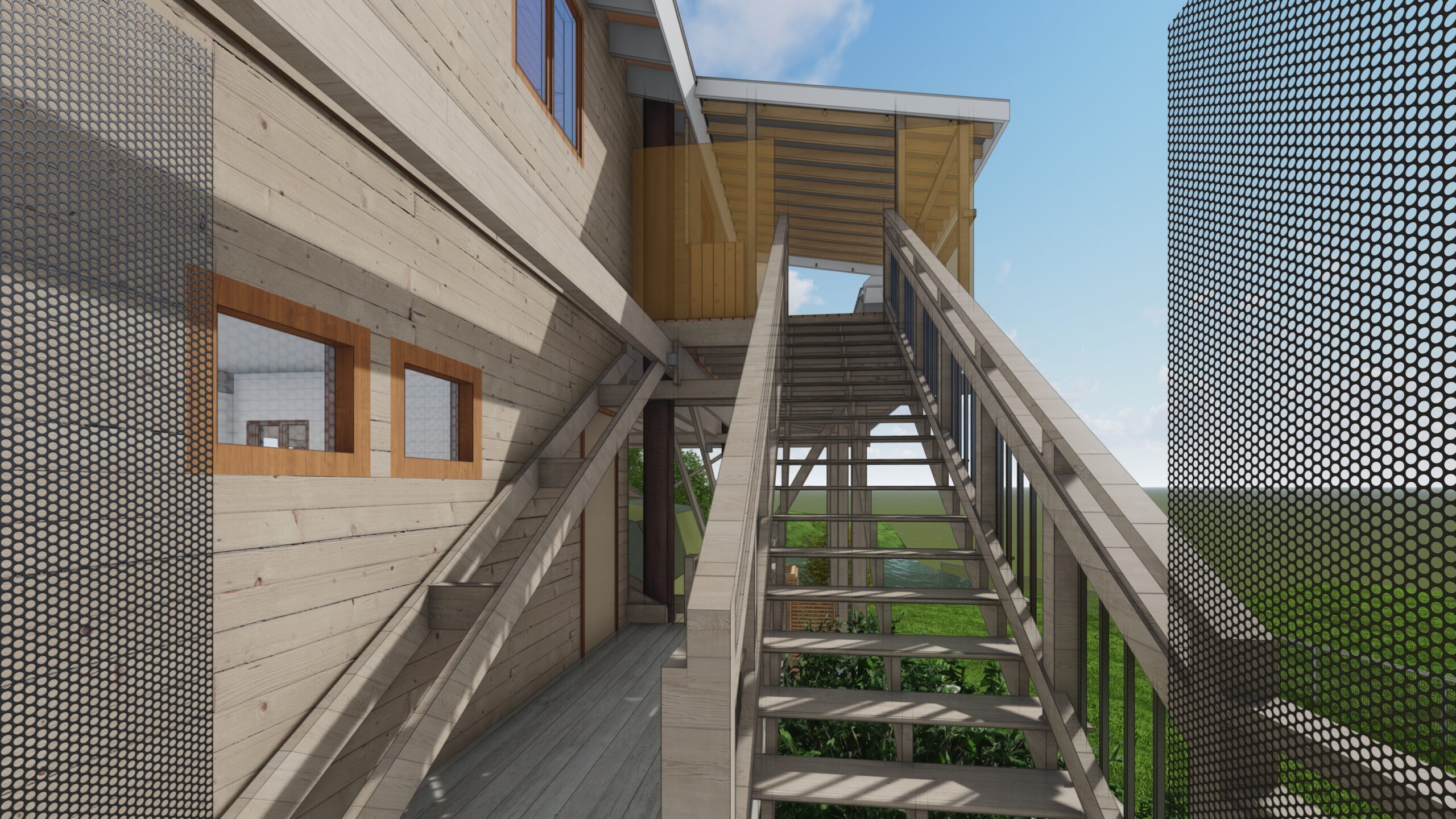
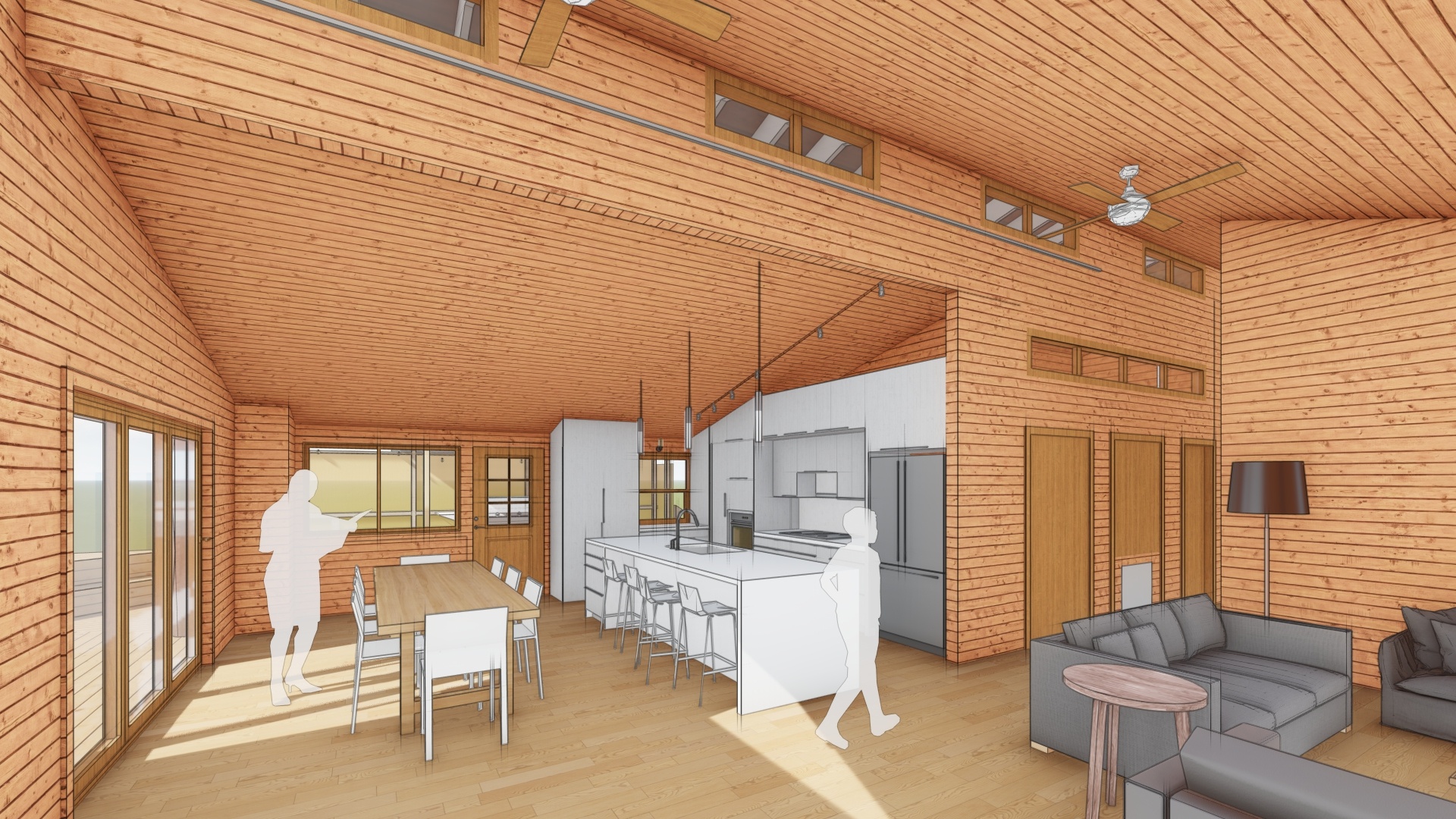
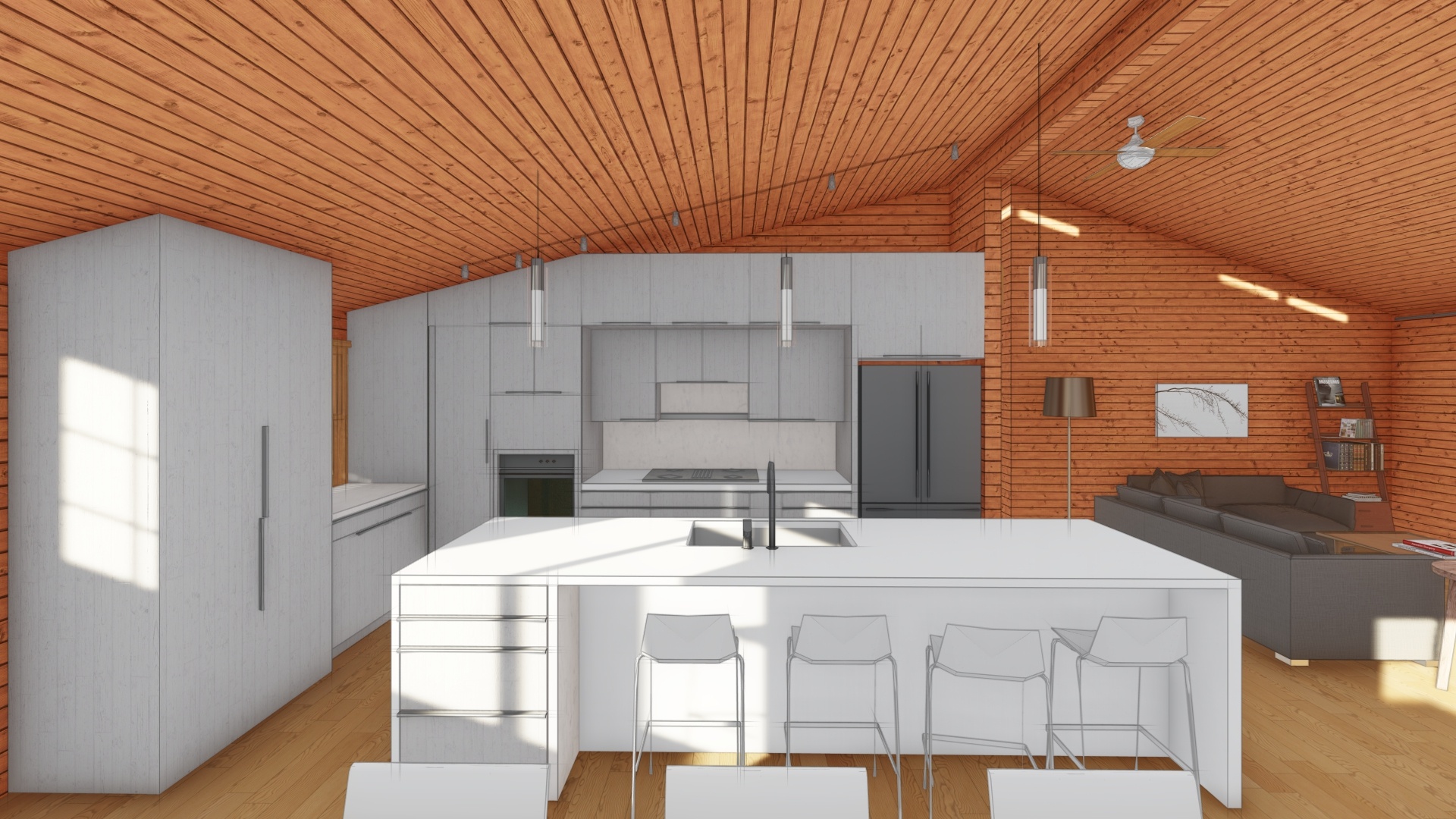
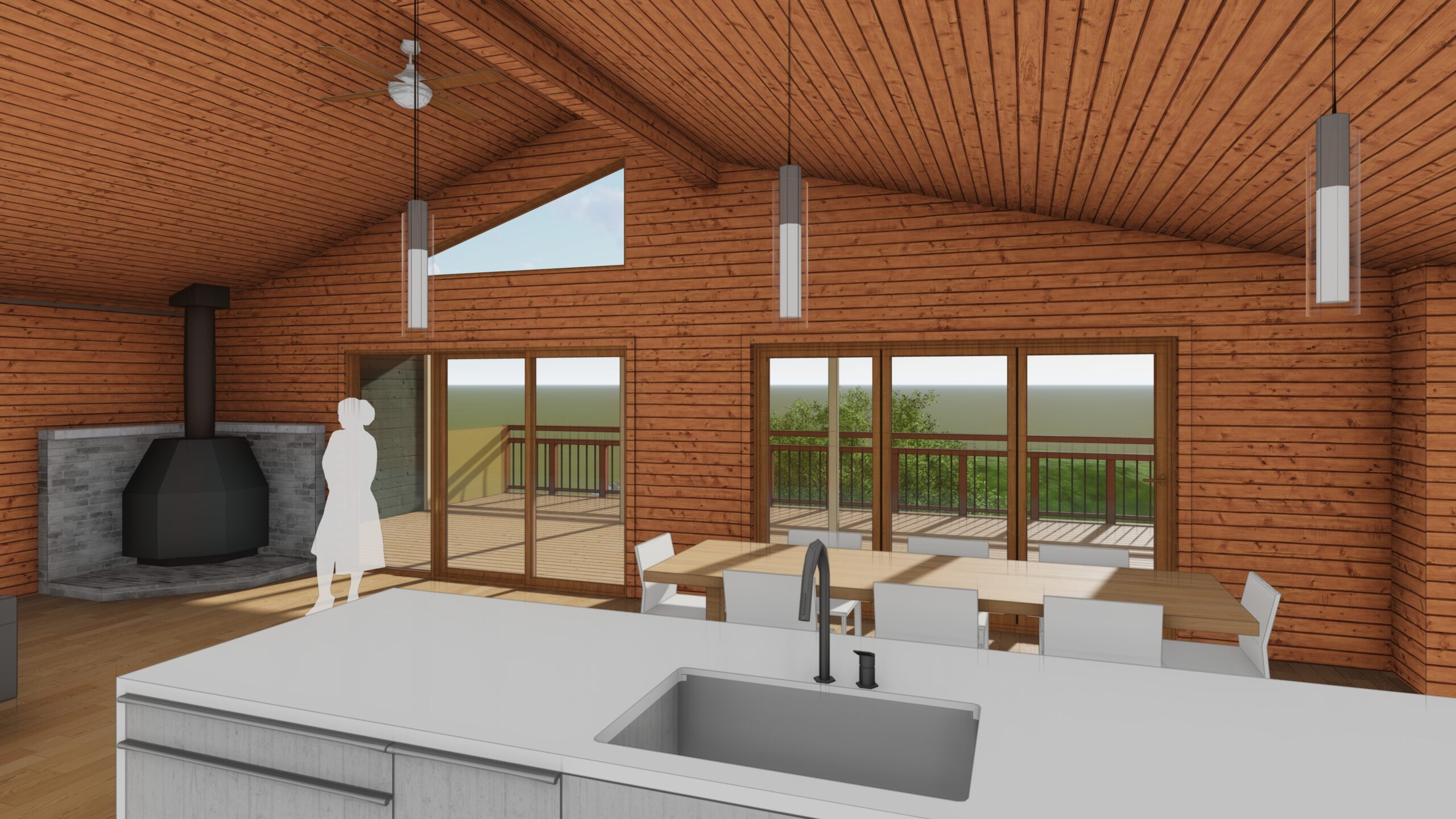
Location: Guerneville, CA
Owner/Client: Private
Scope: Addition & Renovation; Architecture, Interiors, Landscape
Status: Under Construction, Complete 2024
Project type: Residential
Castro Hillside Duplex
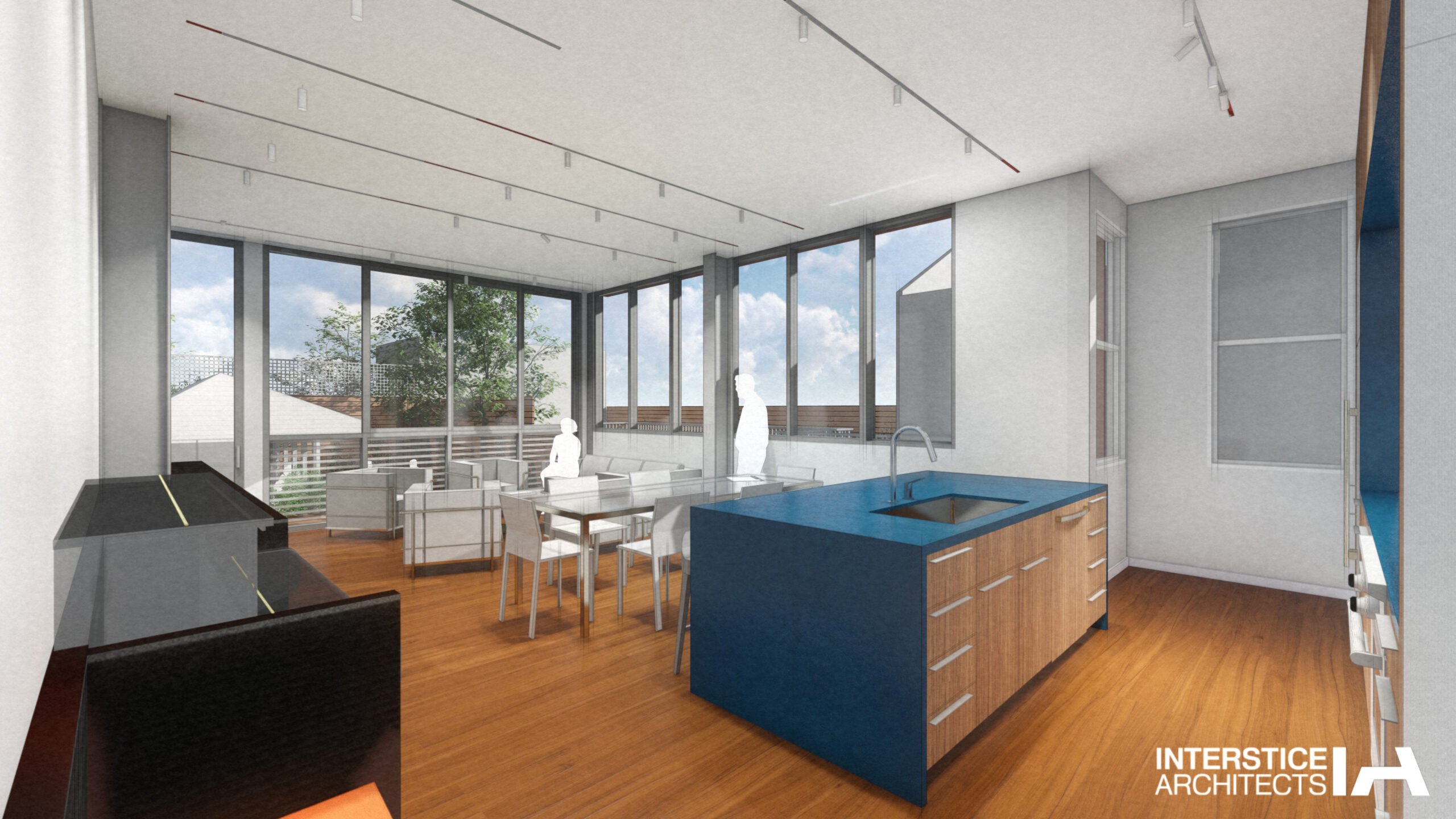
Castro Wedge Site
This two-story duplex is located on a classic San Francisco steeply sloped site in the Castro district. The building was in desperate need of a renovation of both its architecture, and its dilapidated site, which were working against one another. The lower unit was buried at the rear into the steep site, and the upper unit’s access further hampered the lower’s units light and possible ground floor use of the generous open space typical on these deep lots.
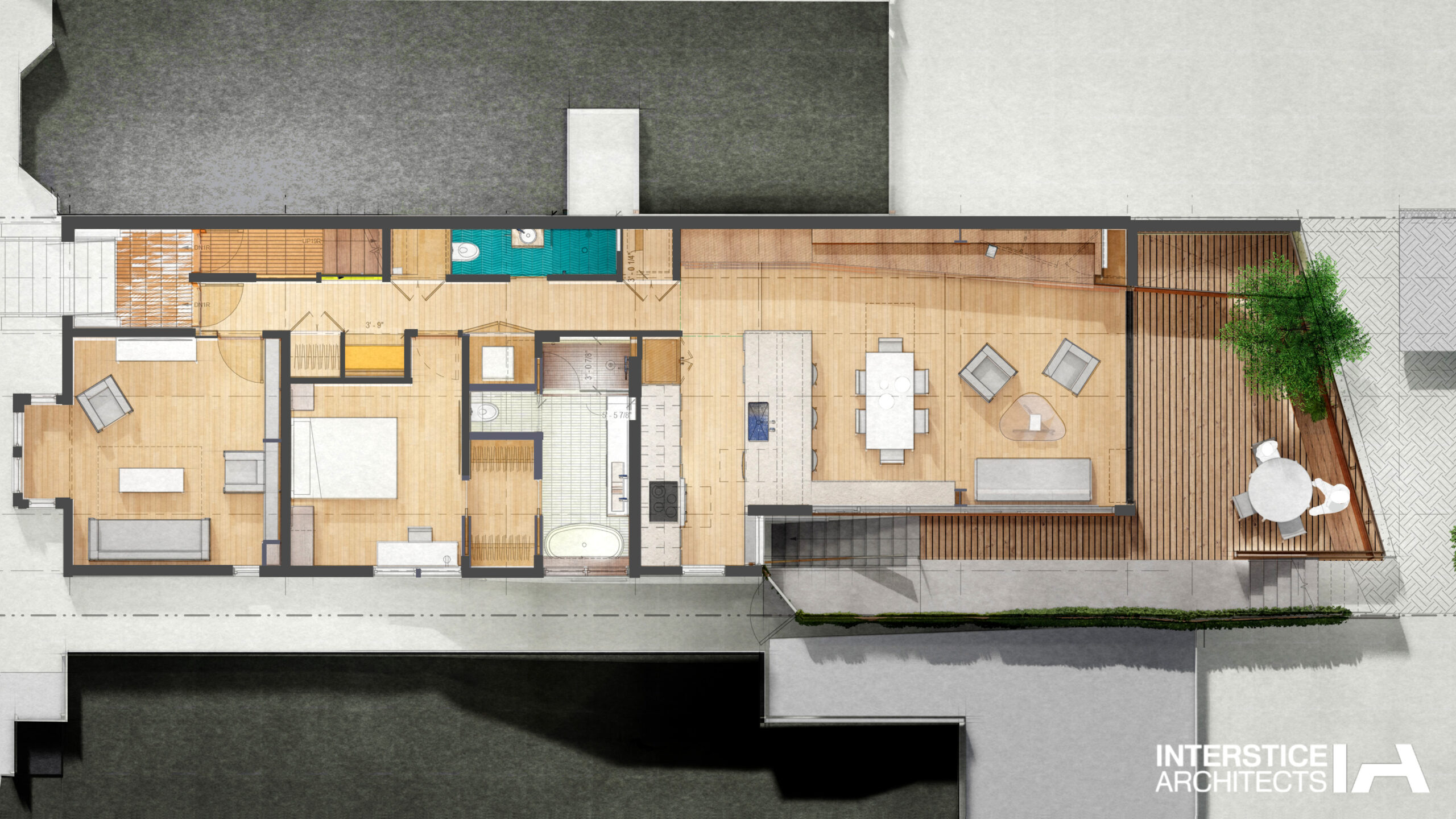

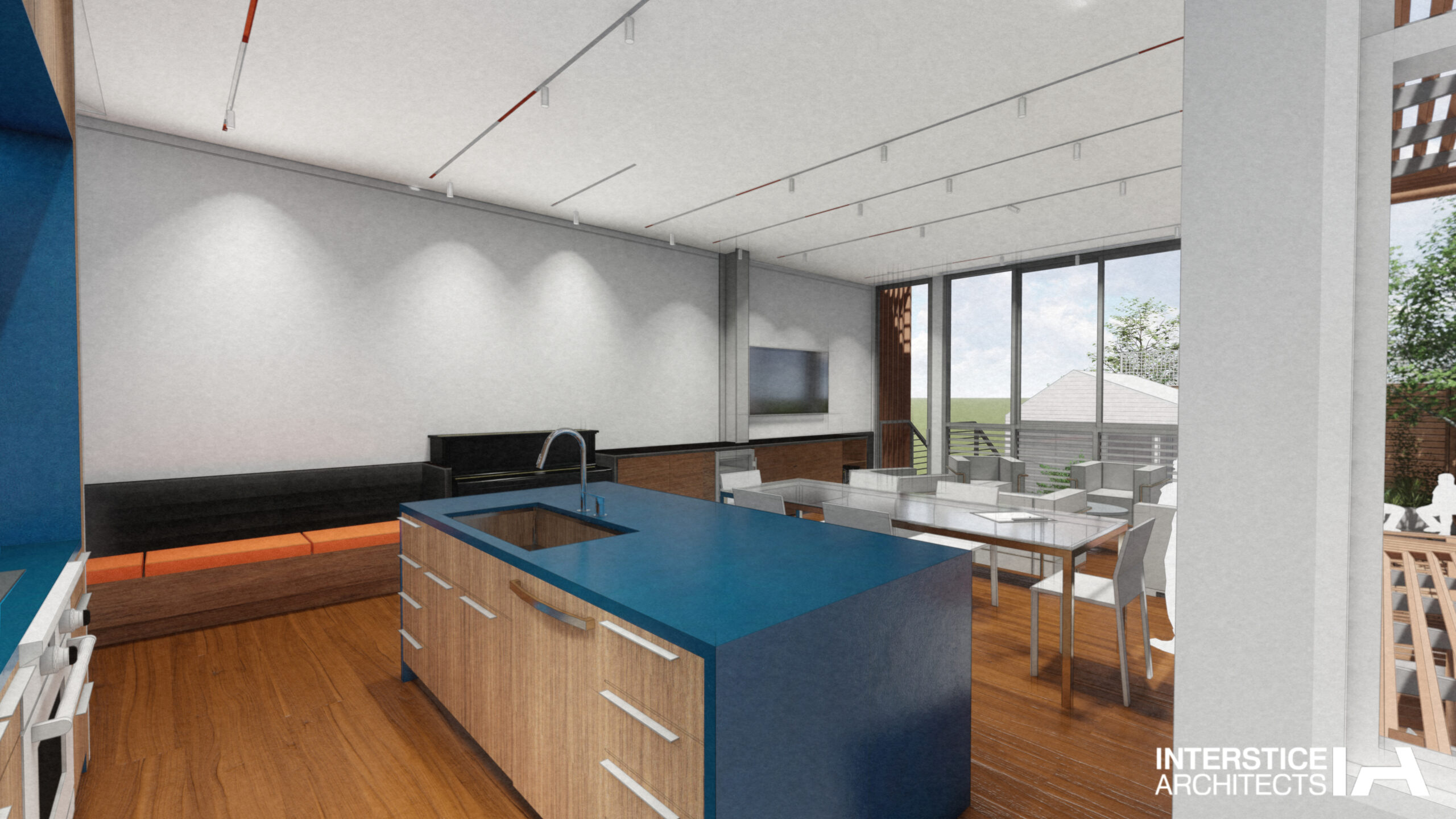

Historic Facade Dissolves into a Modern Garden Home
The Design leverages the site’s great orientation, and shared South alley to bring light into the long side of the building, and deep into the now opened-up public spaces of the two units. Starting at the street the project upgrades a forlornly stripped façade, to return it to its historical craftsman’s character, while the interiors are completely transformed into a fluid open “raumplan” that allows space to flow continuously, just as the envelope dissolves into glass towards the private rear garden, where patio decks terrace into the hillside allowing maximum use of this protected outdoor space.
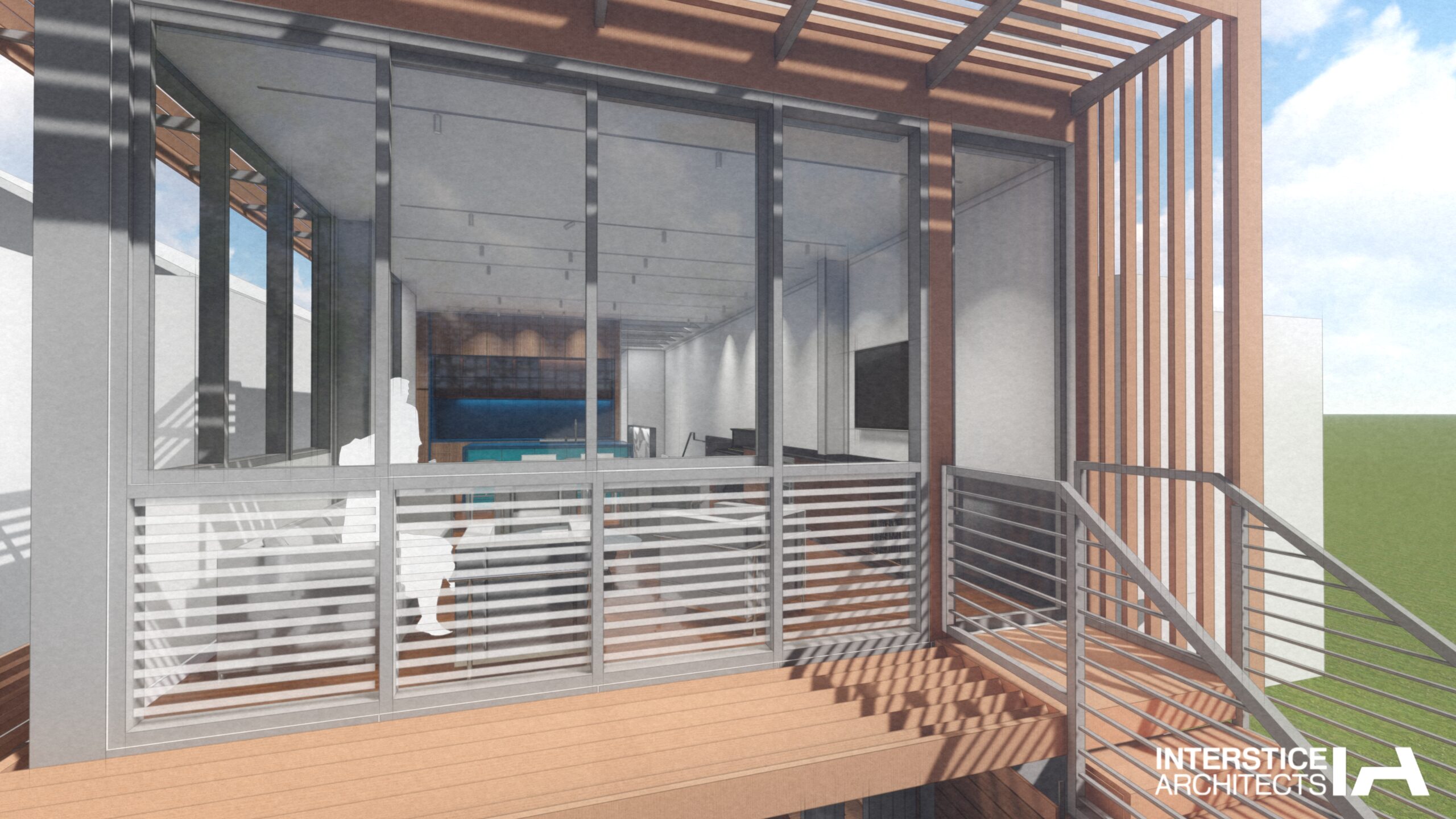
An Open Garden “Room”
A small existing shed becomes the focal point of the new landscape that creates an extended living room from the lower unit to a garden wall which provides an ample deck for the rear yard between new planting and fruit trees that provide shade and frame the volume of the rear shared social space of the backyard commons. Brick foundations were replaced, and steel infrastructure installed making the seamless open spaces possible – as the new home is now structurally up to code, and a perfect fit for the California lifestyle the is the hallmark of great modern architecture in the Bay Area.
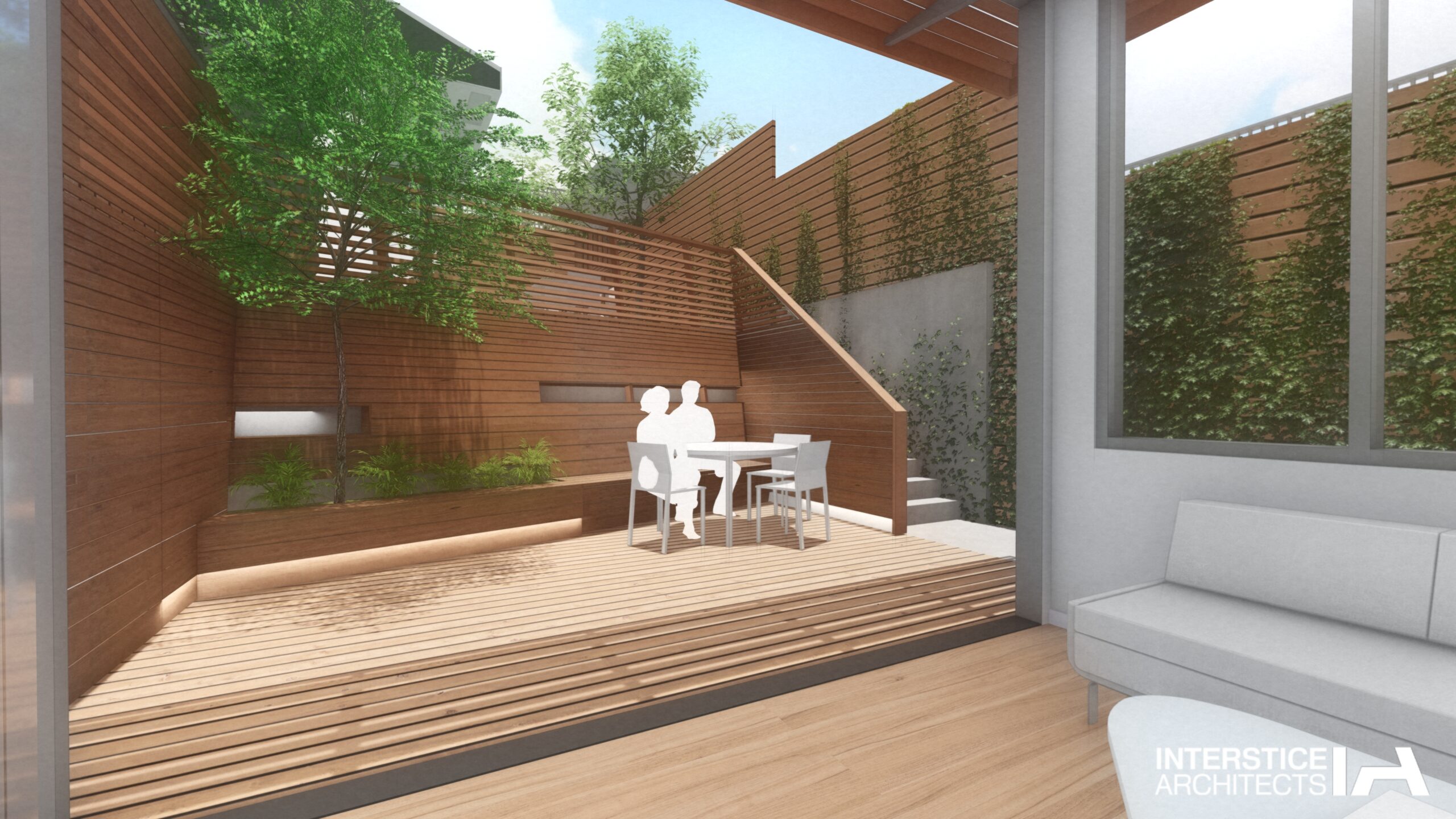
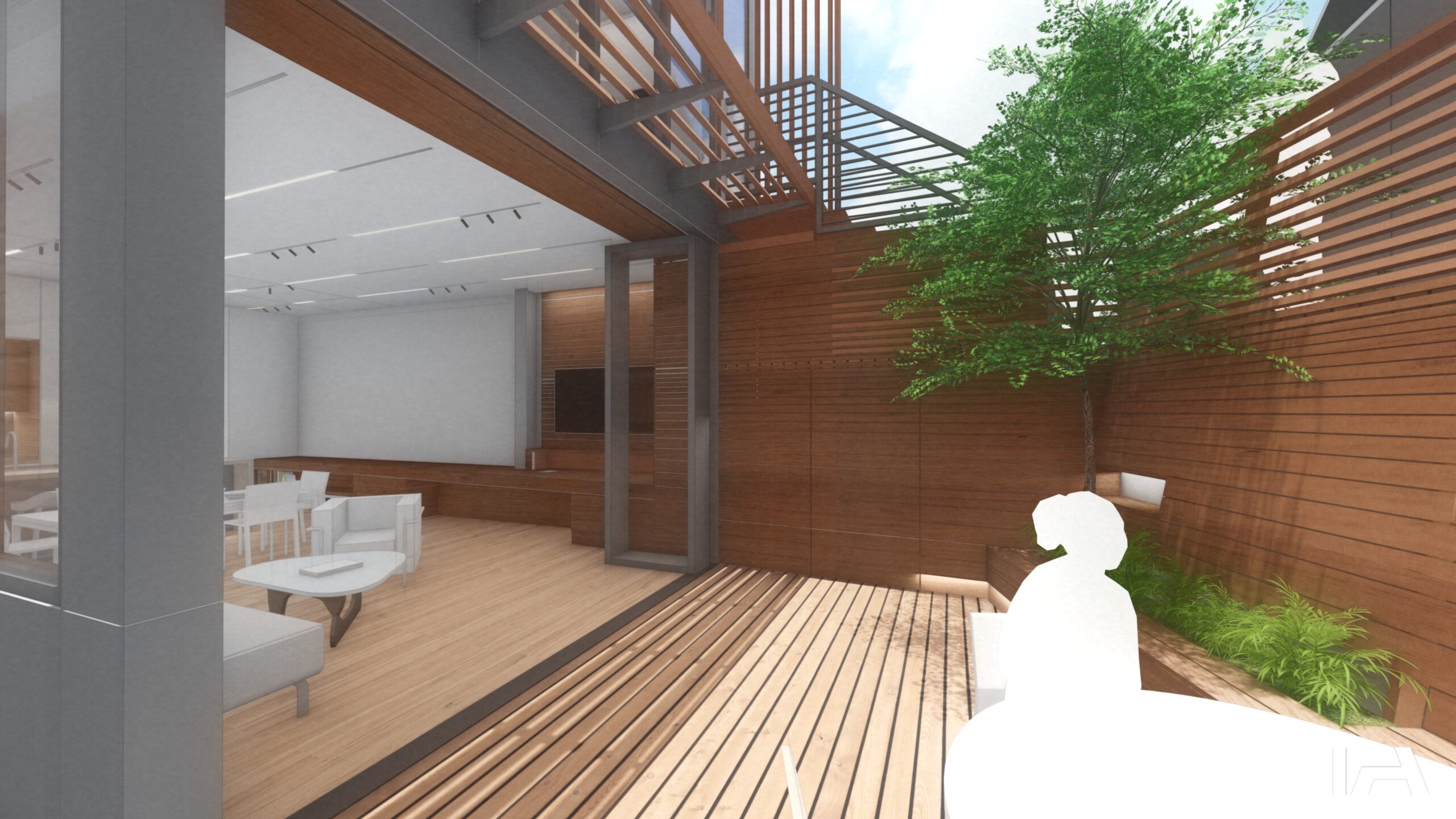
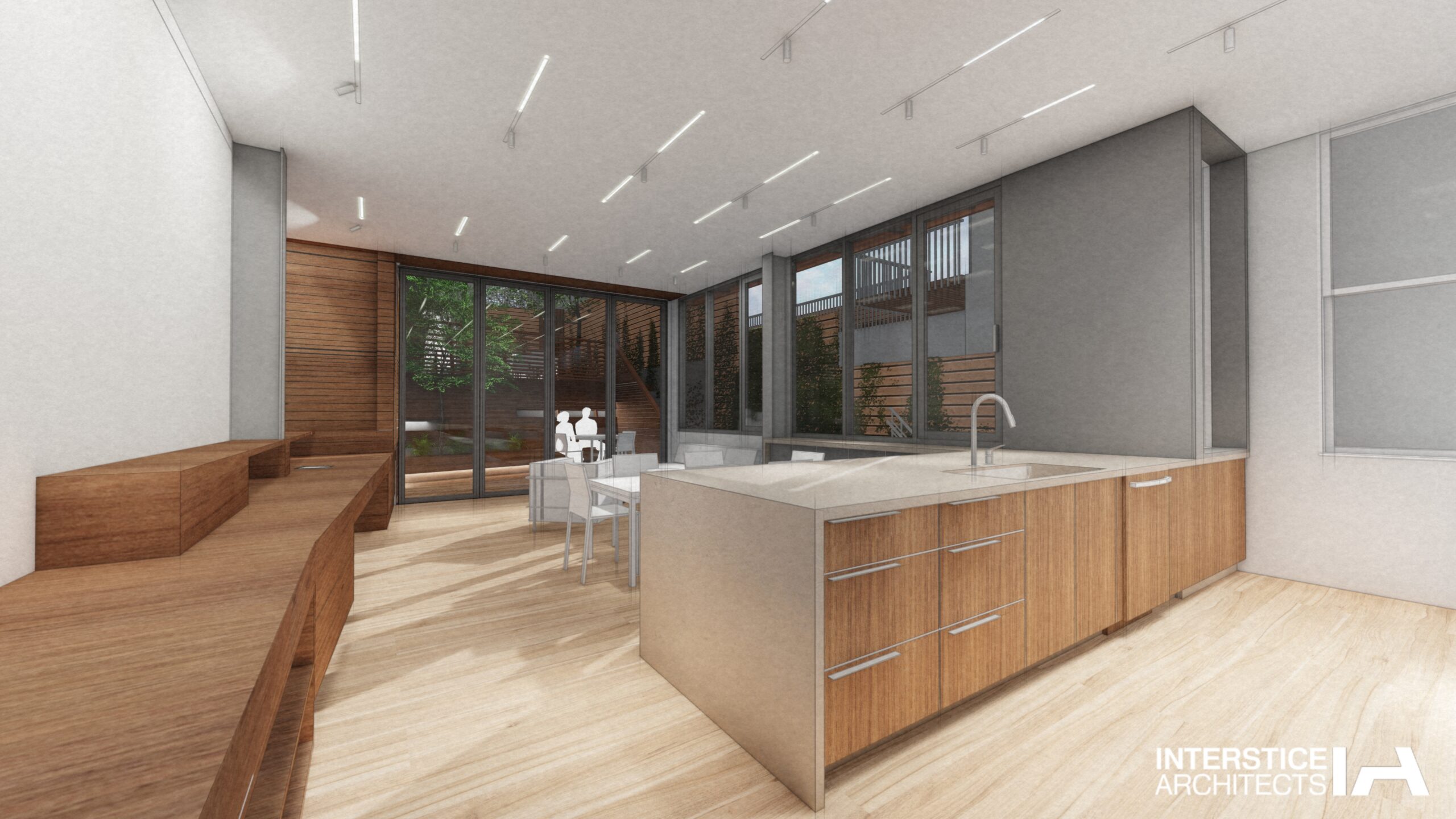

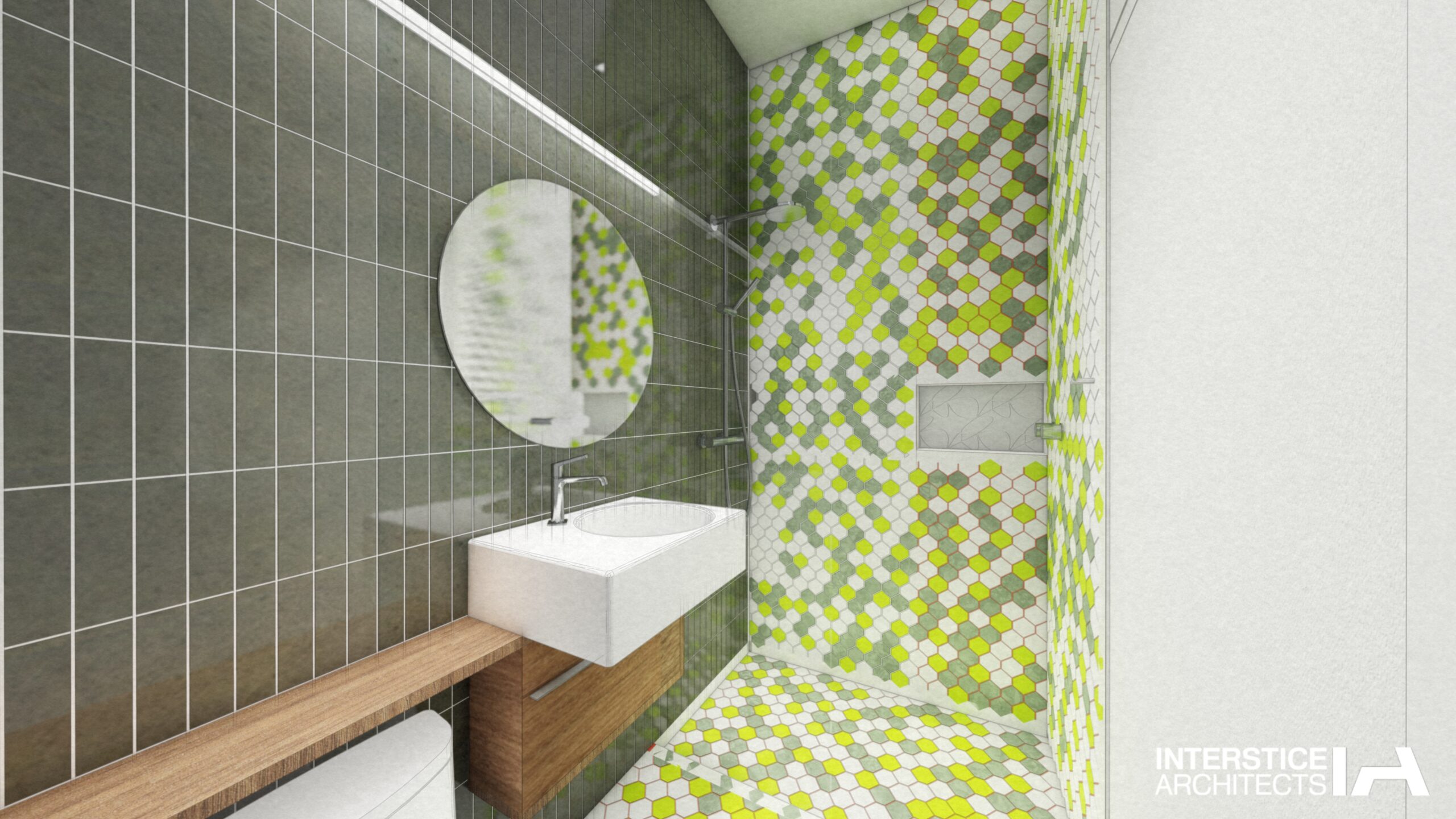
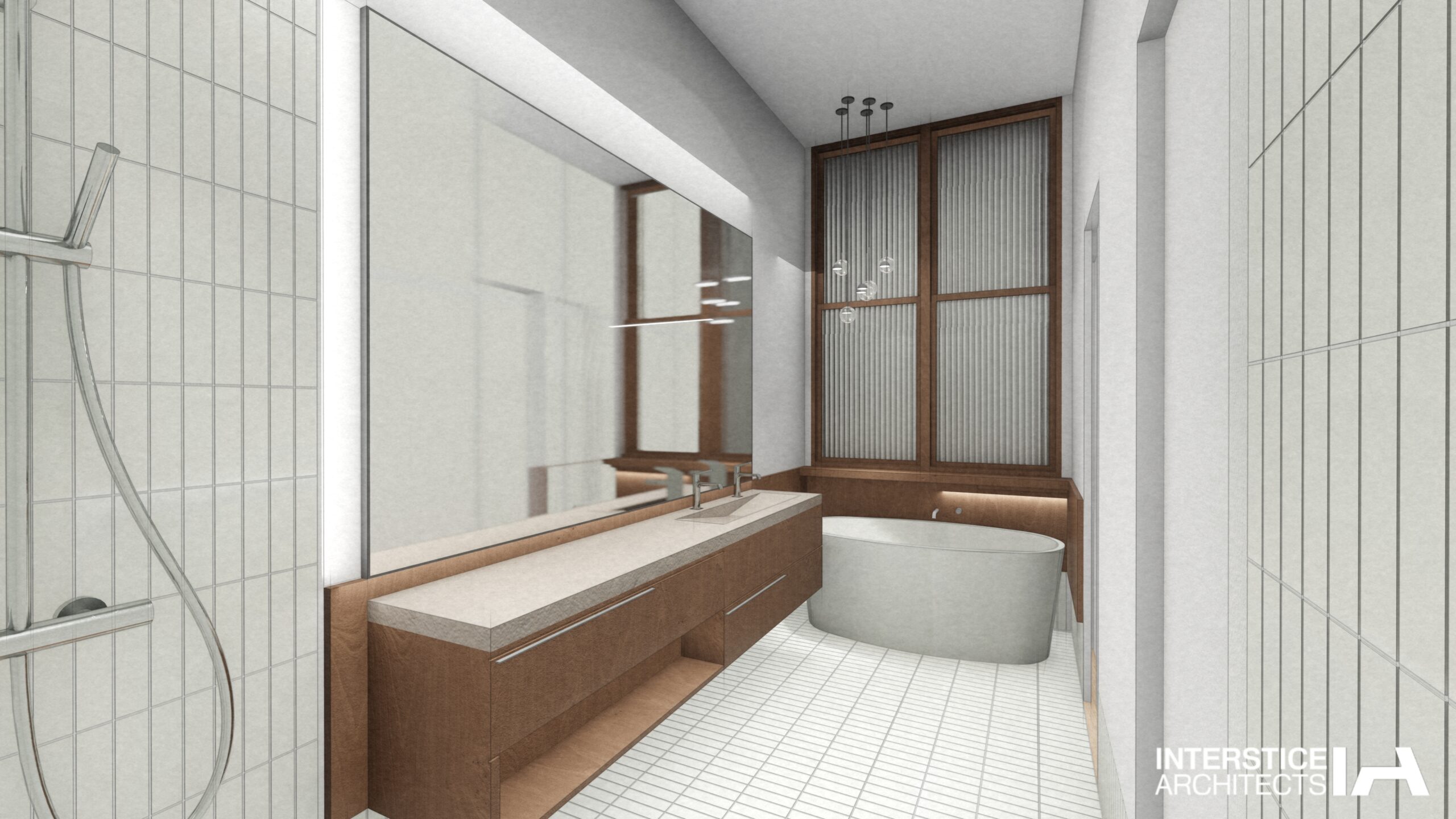
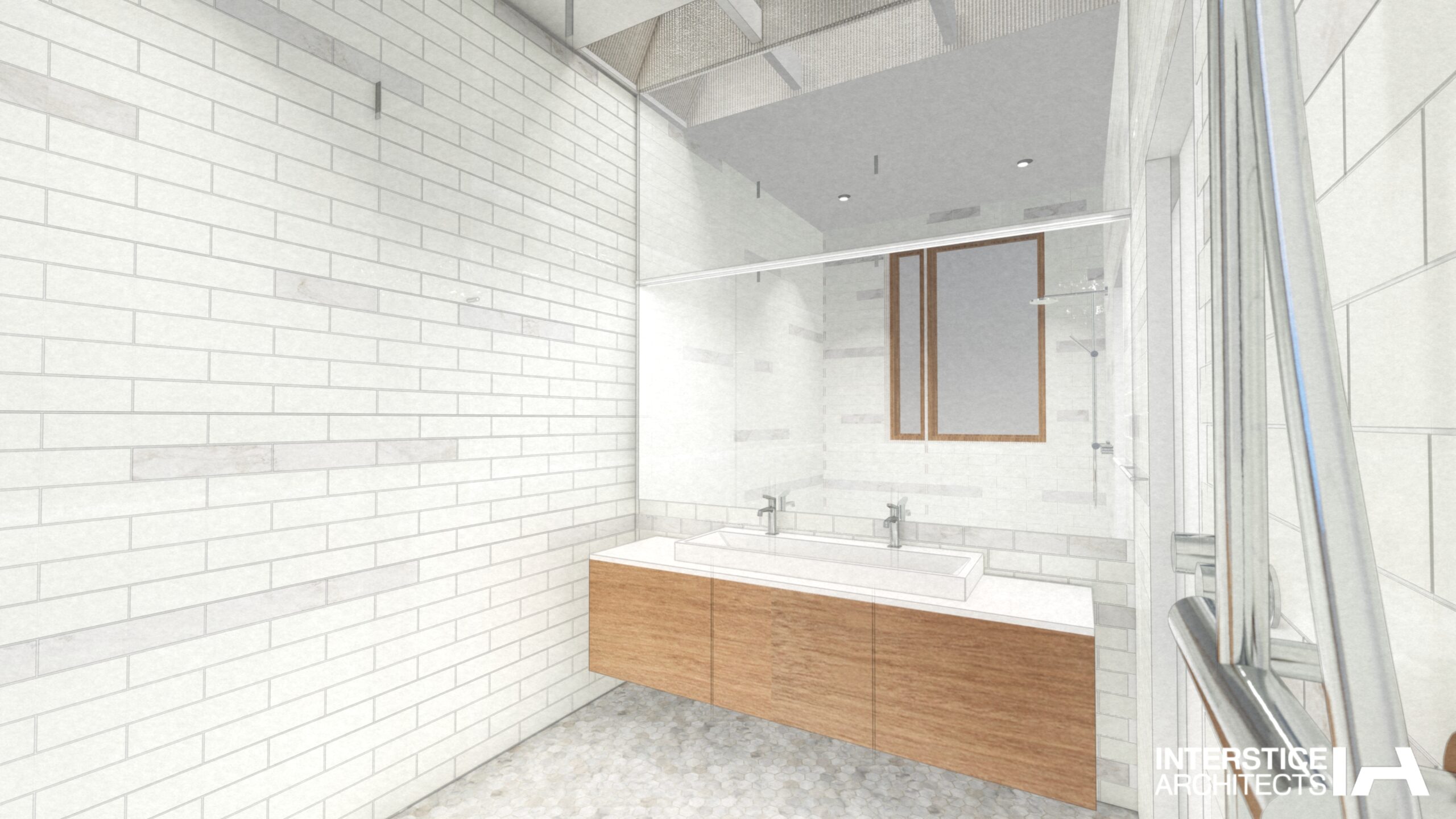
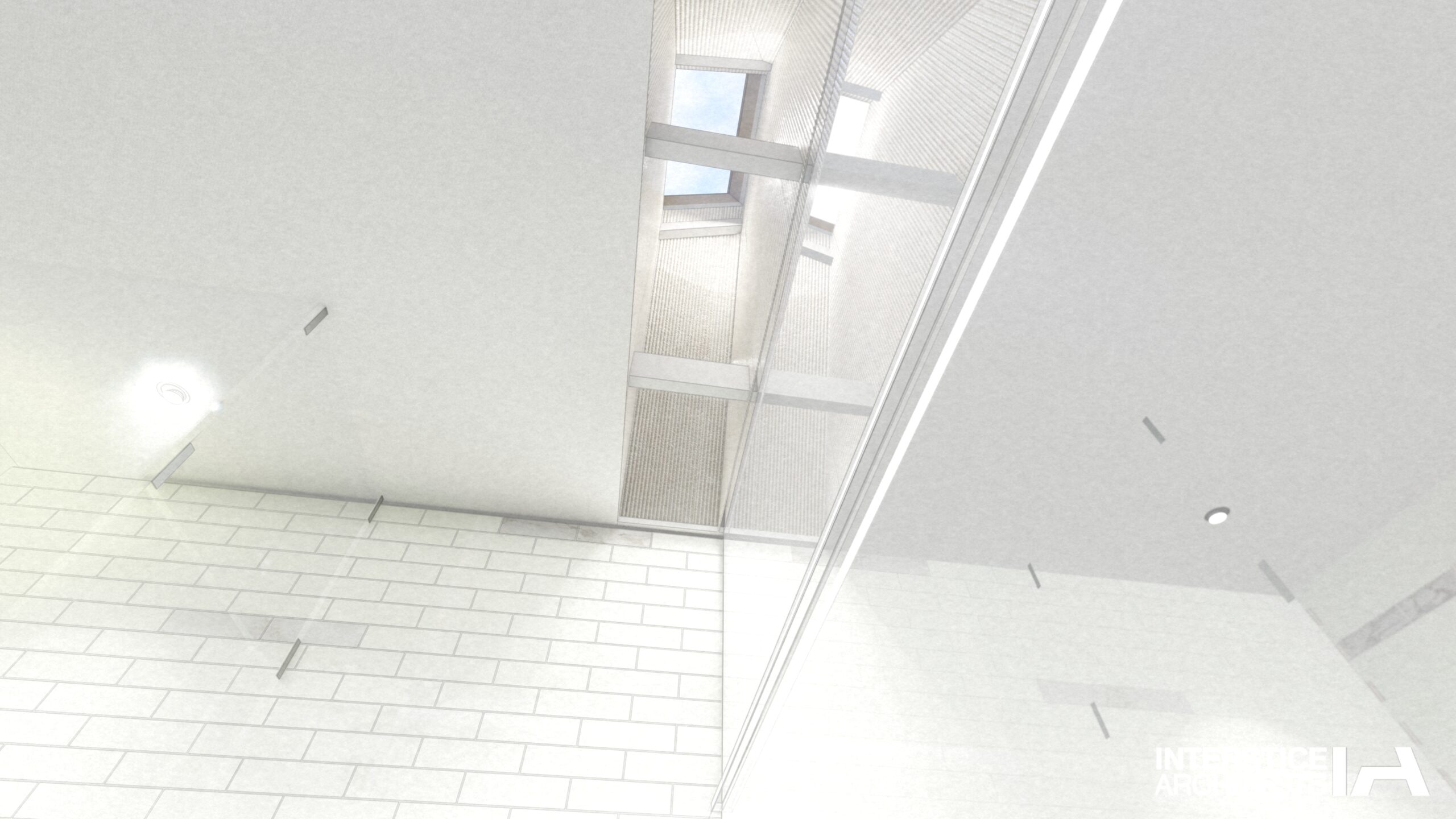
Location: Hartford Street, Castro, San Francisco.
Owner/Client: Undisclosed
Scope: Residential Renovation & Garden Design
Status: Design


